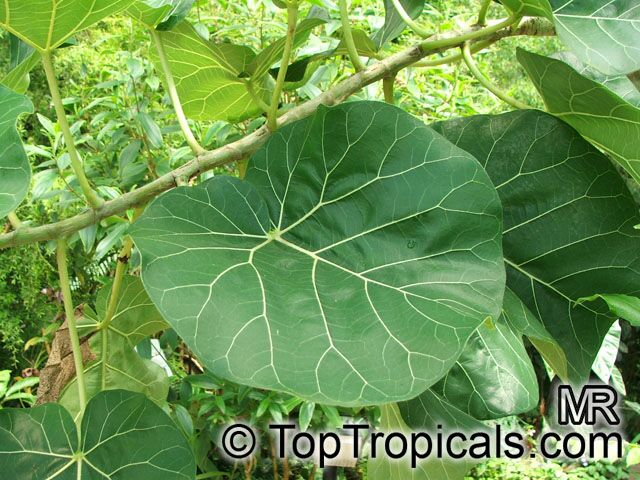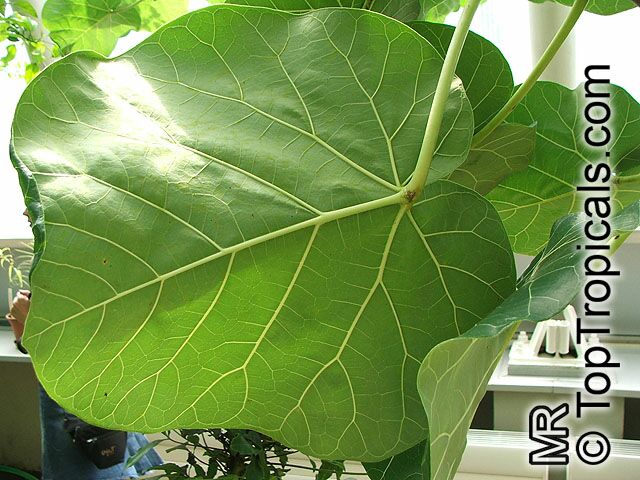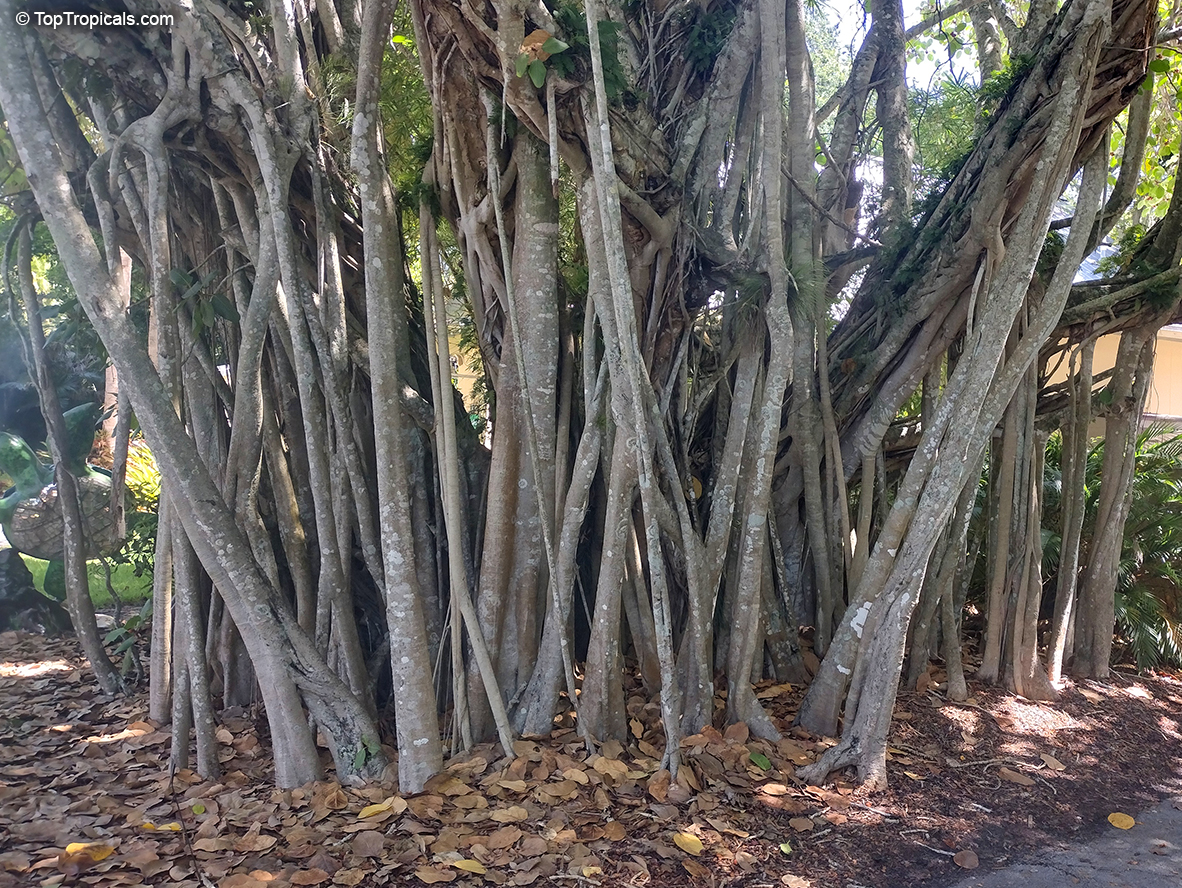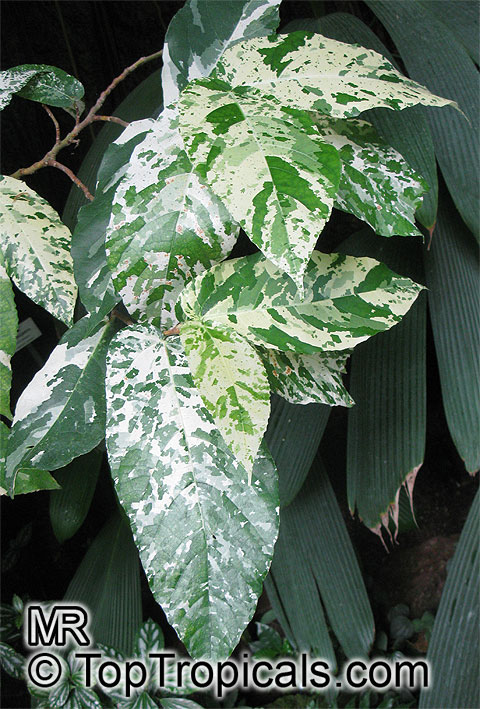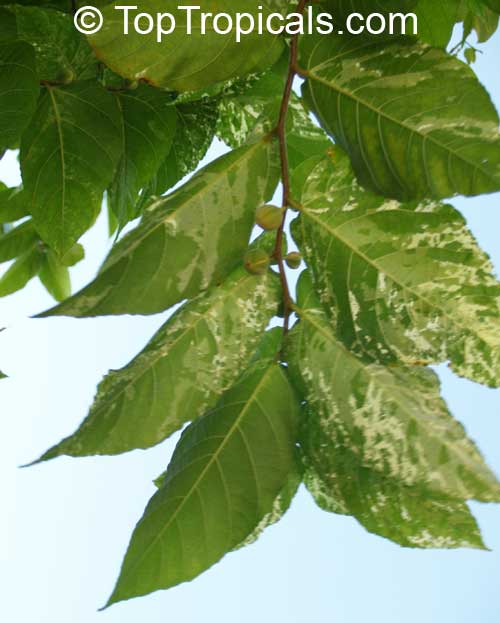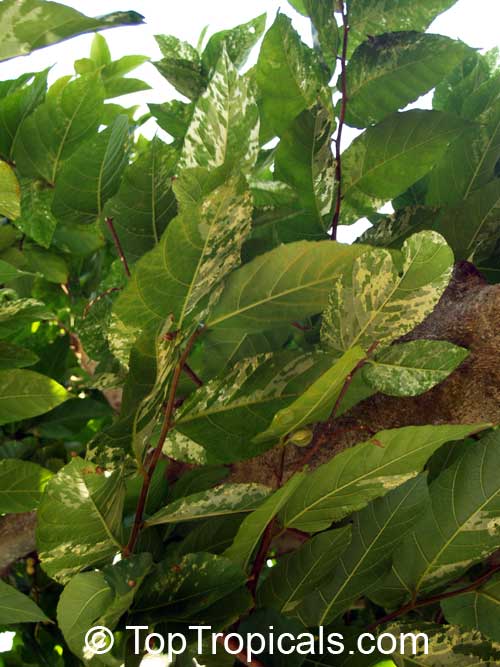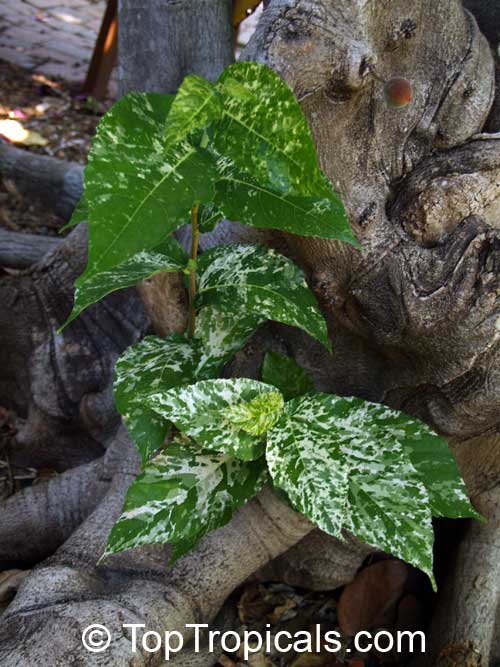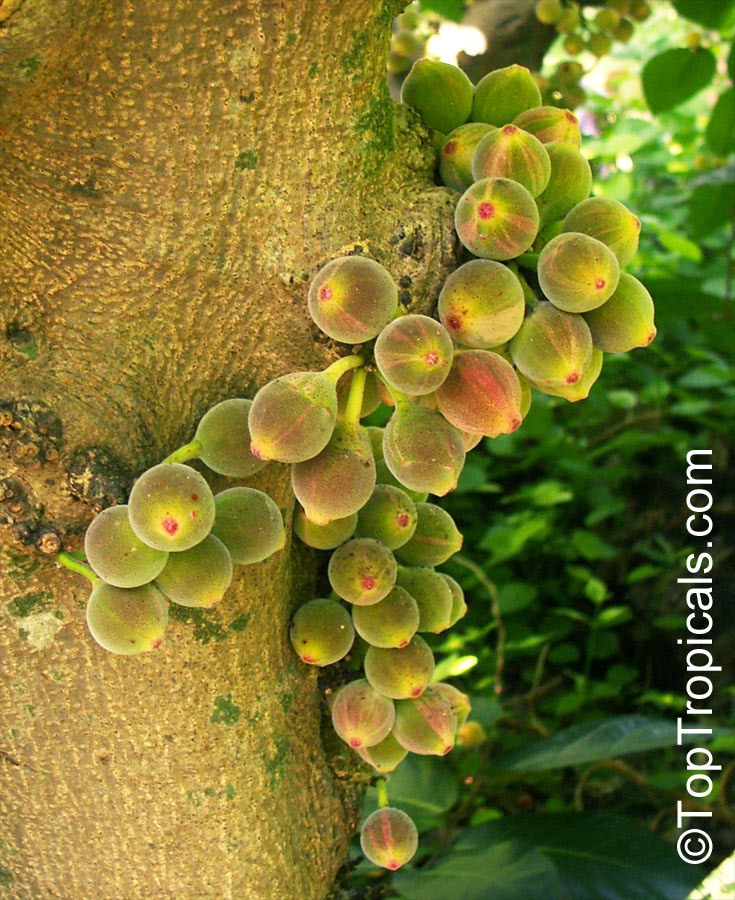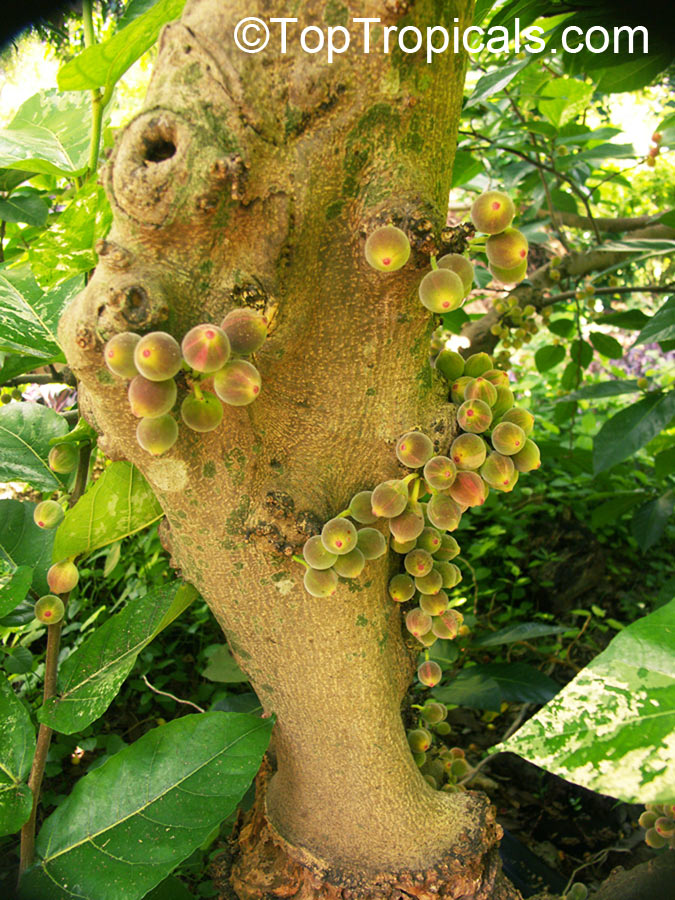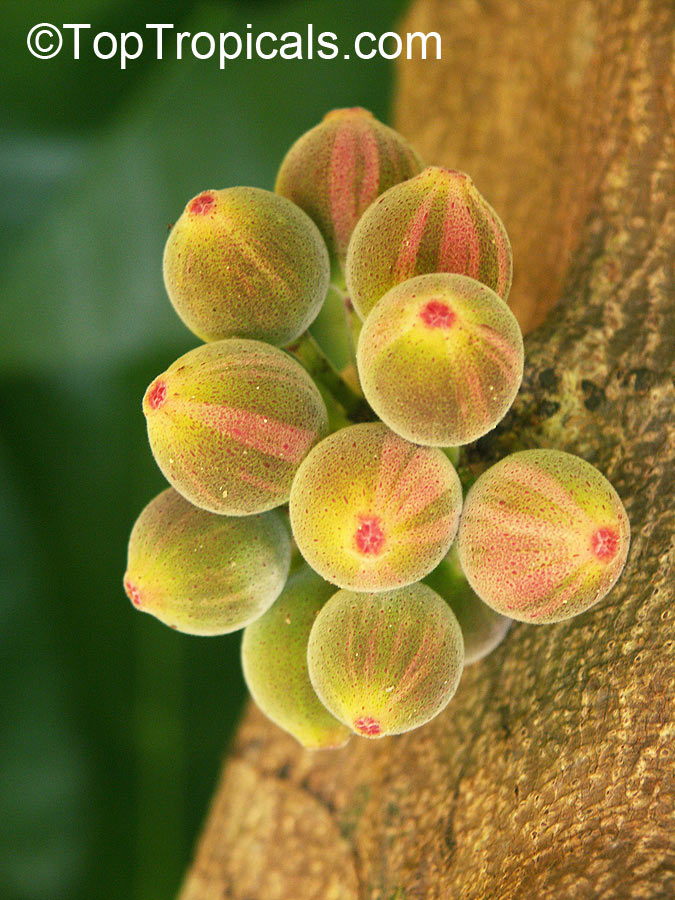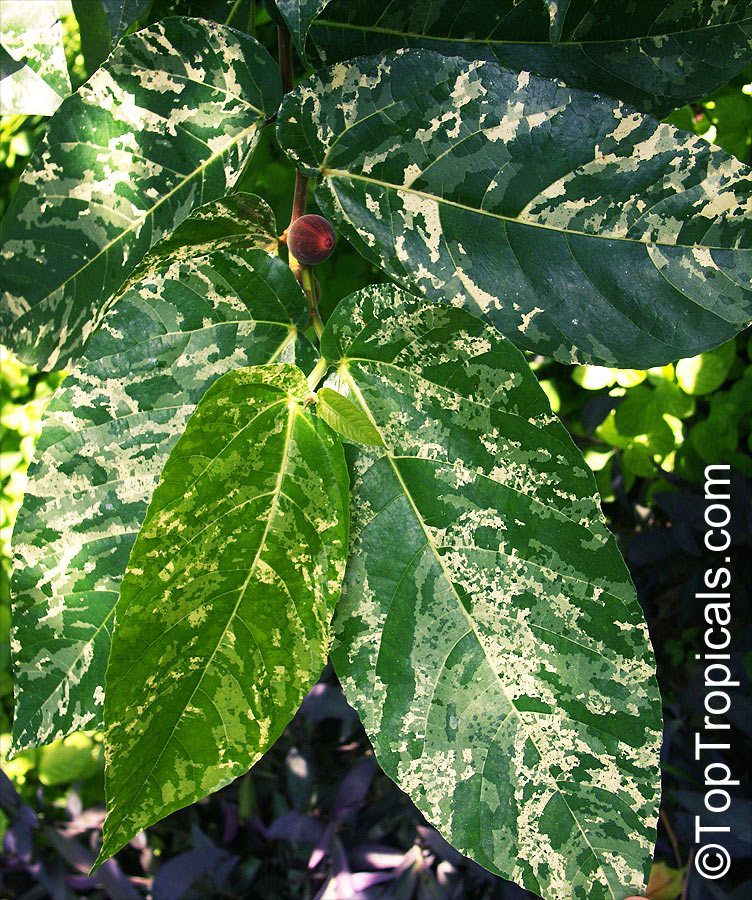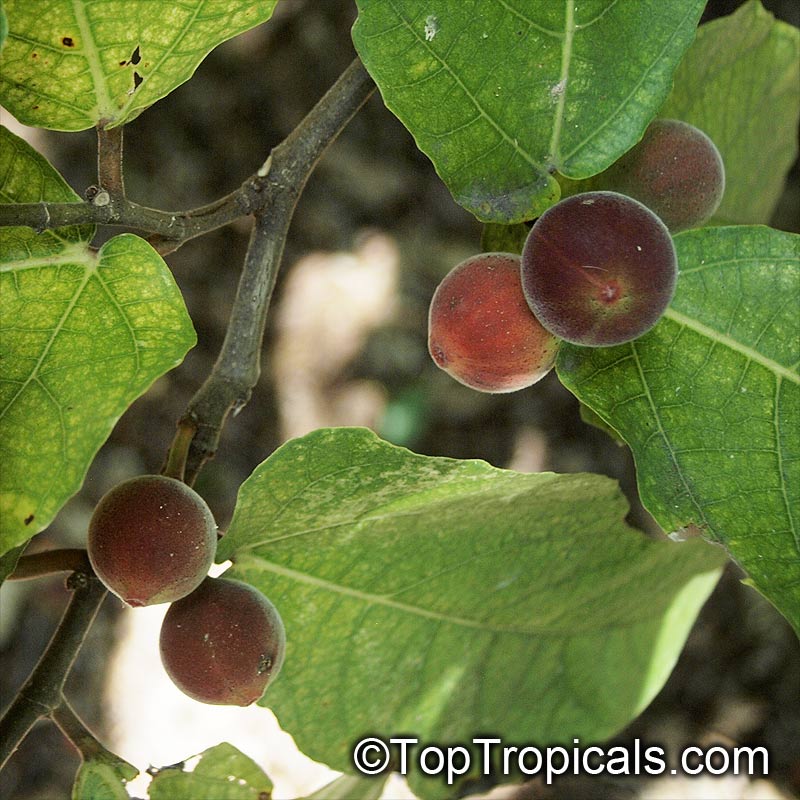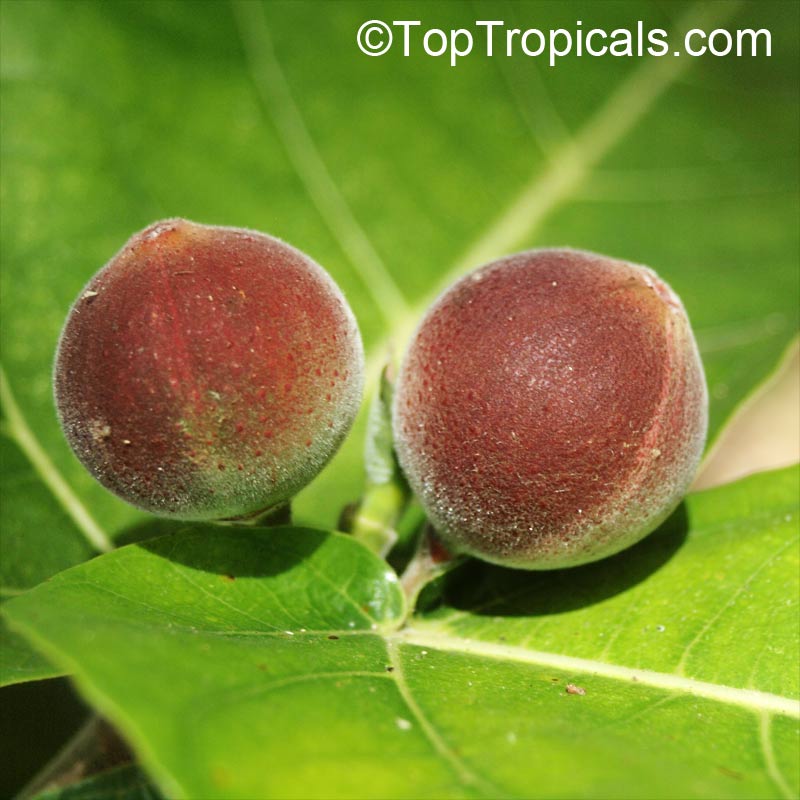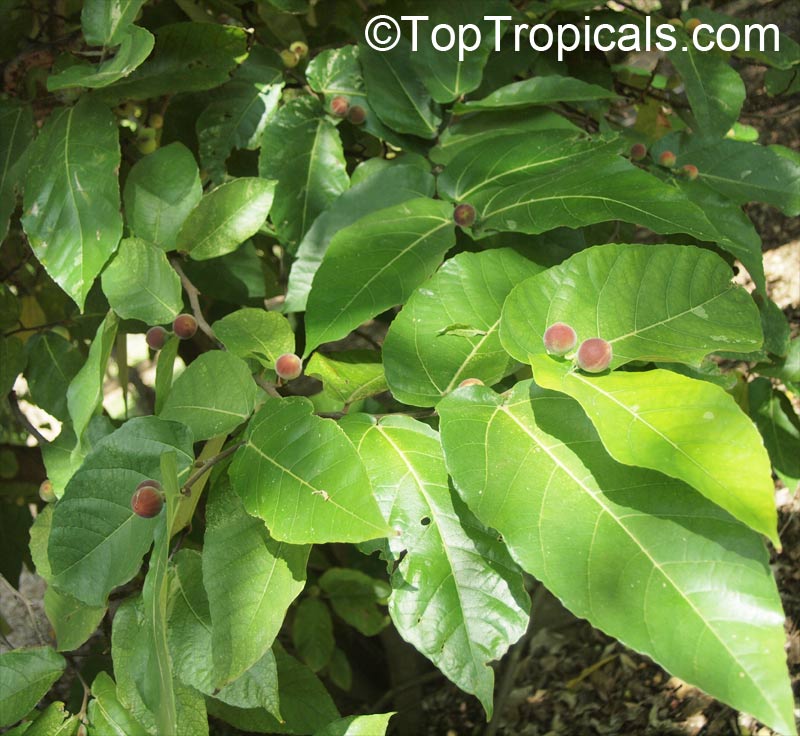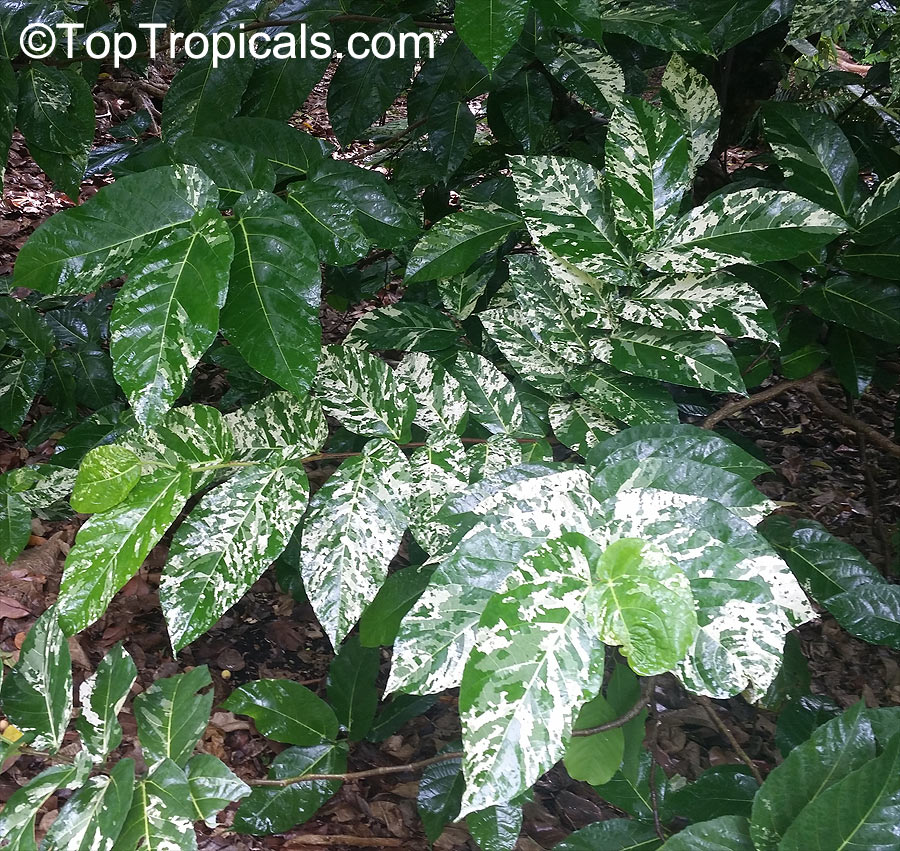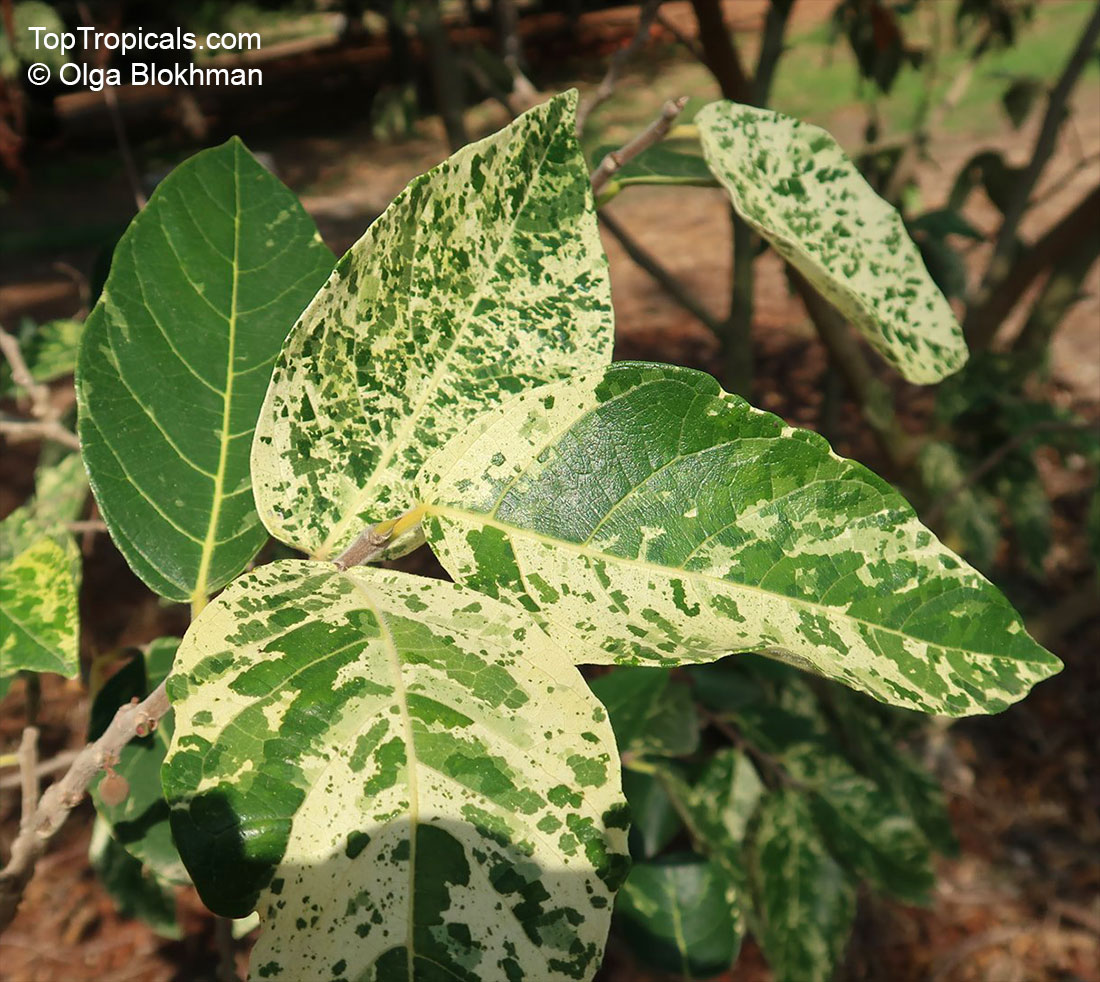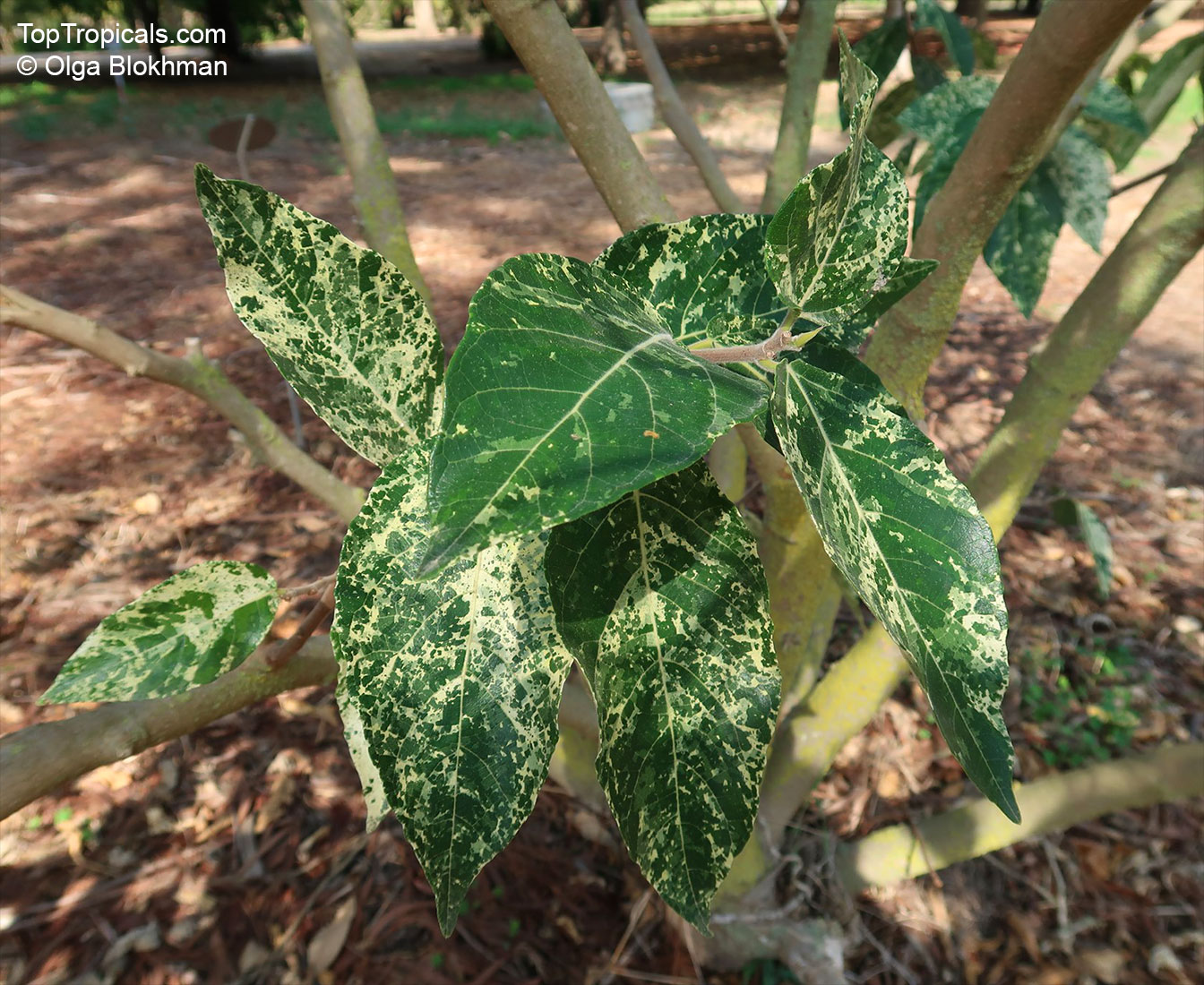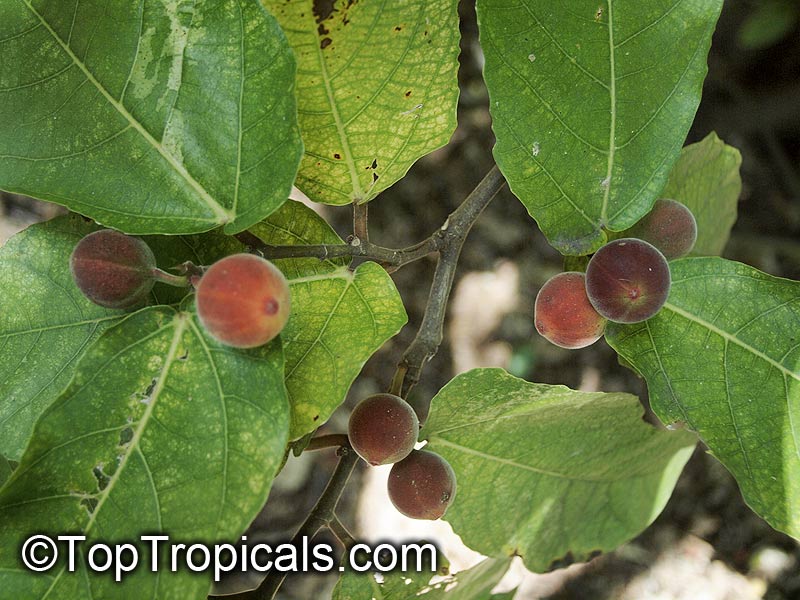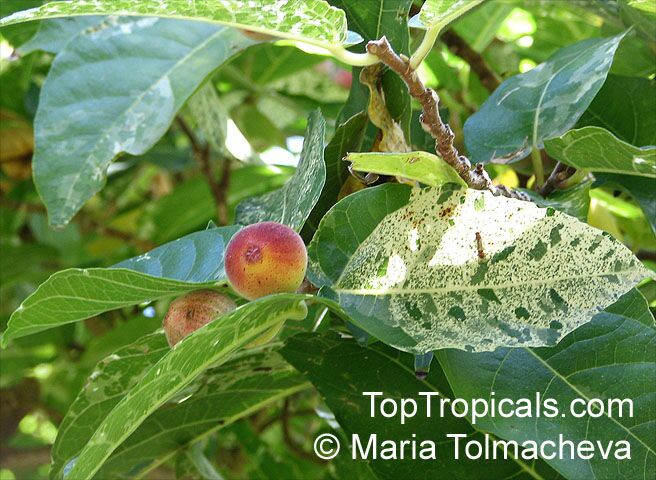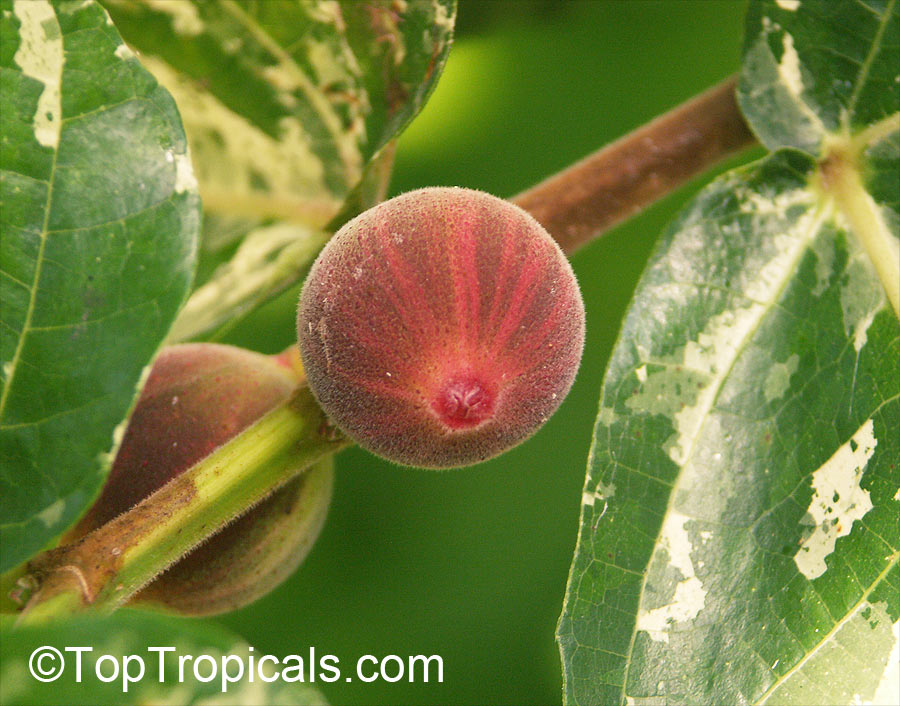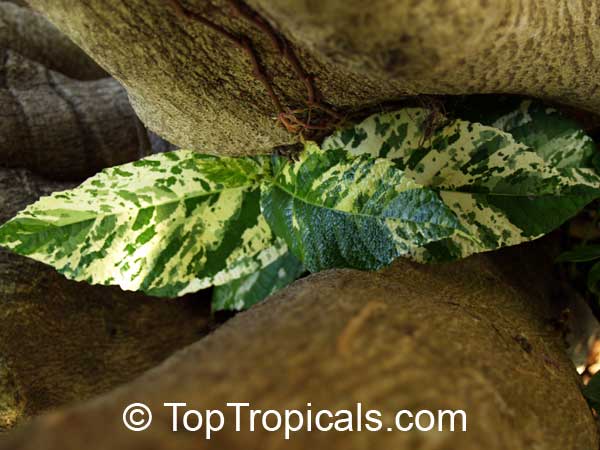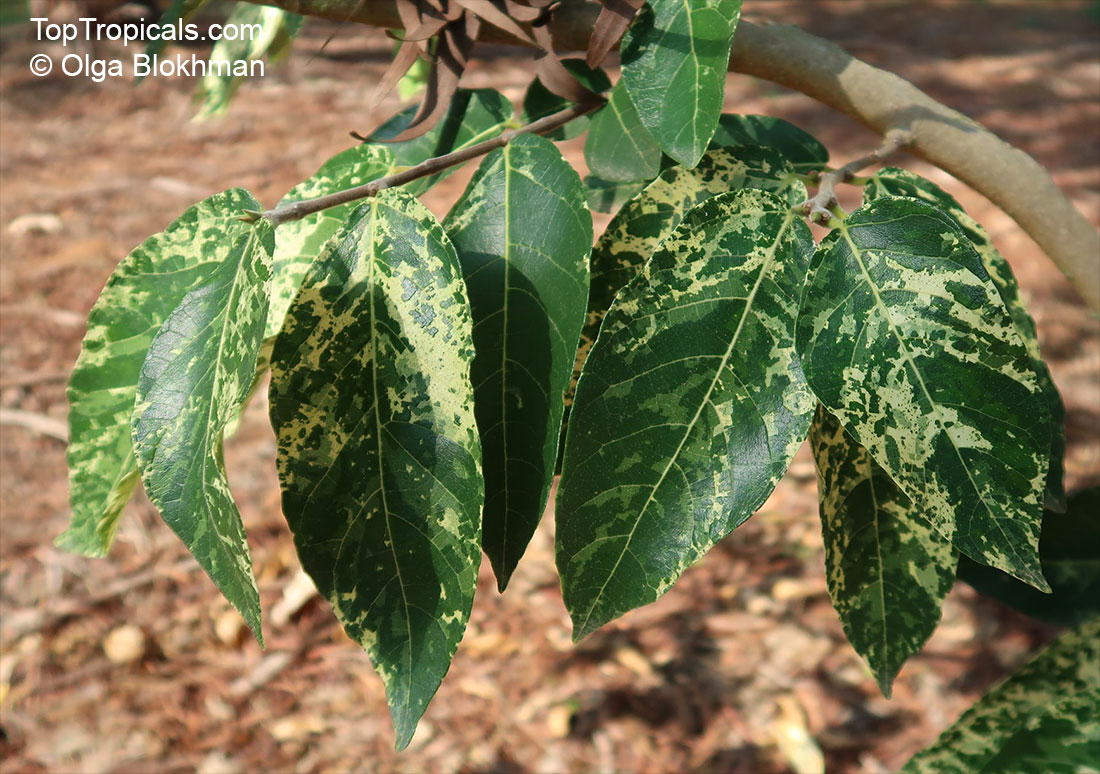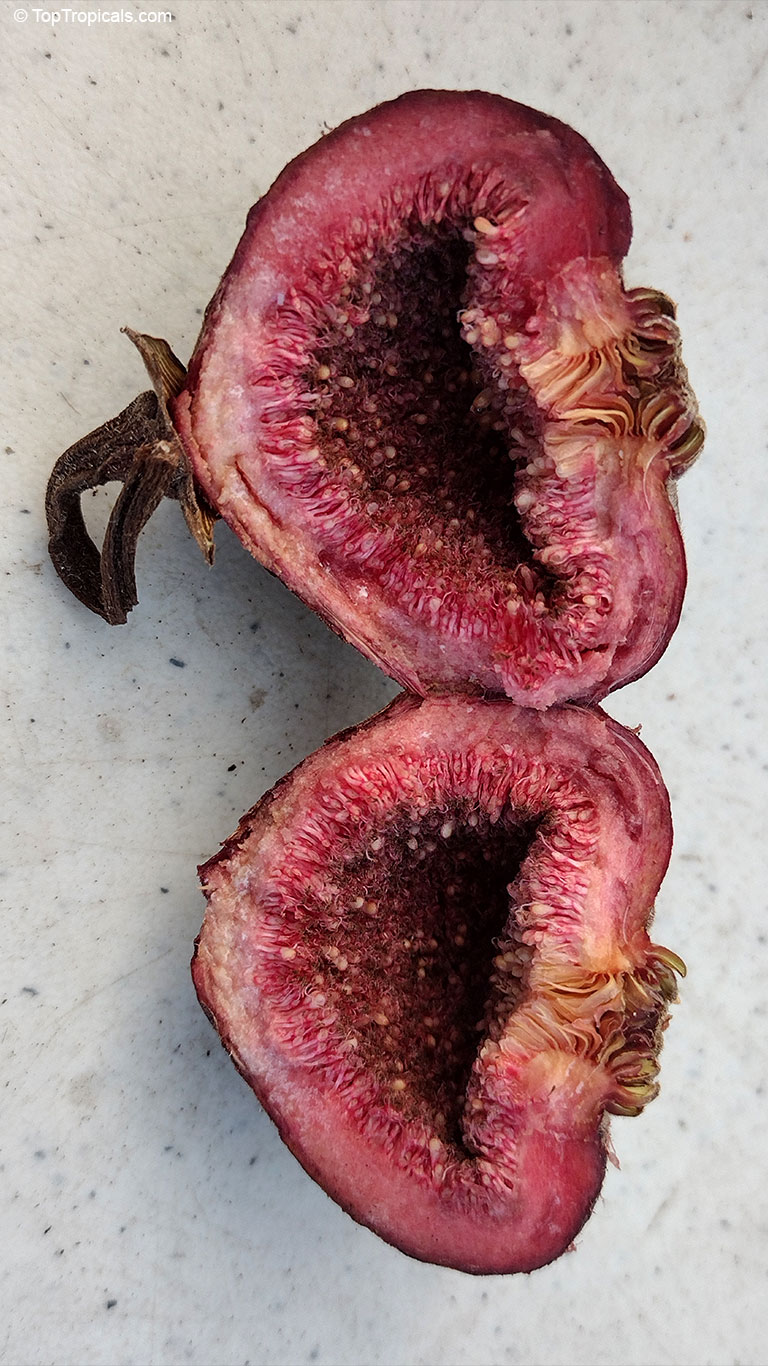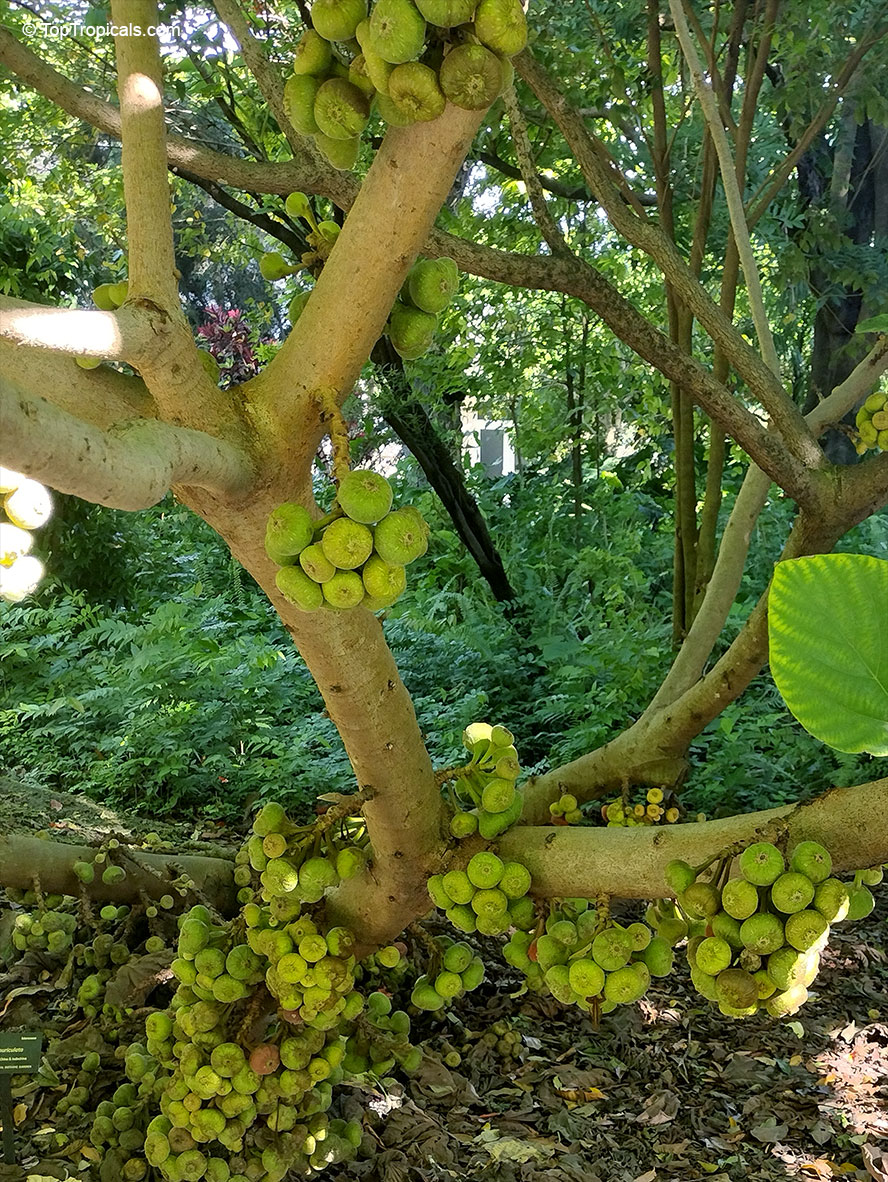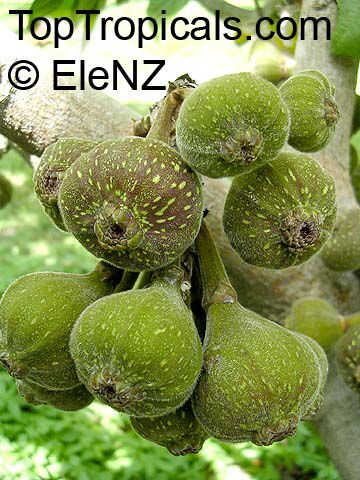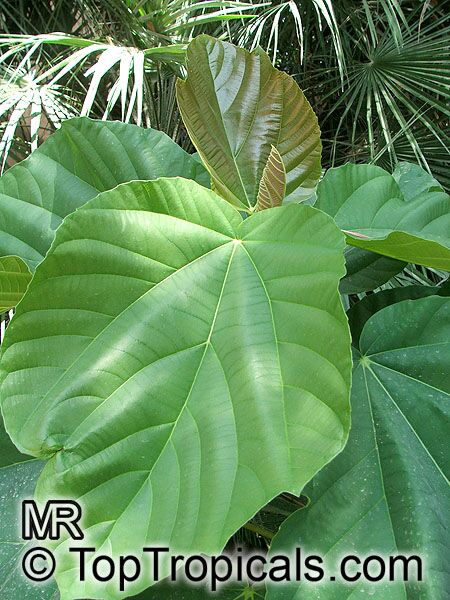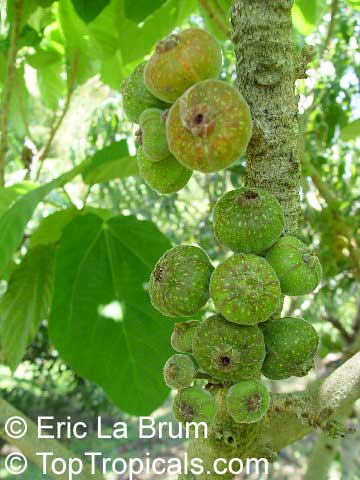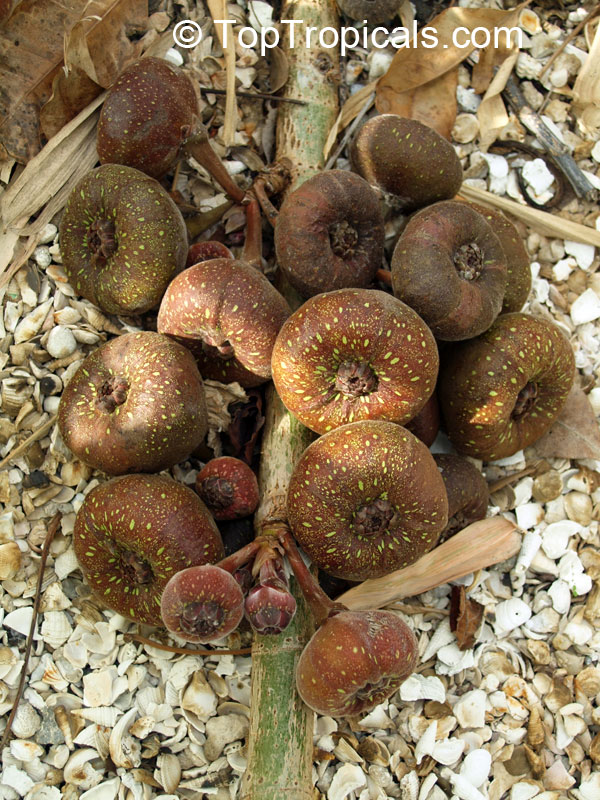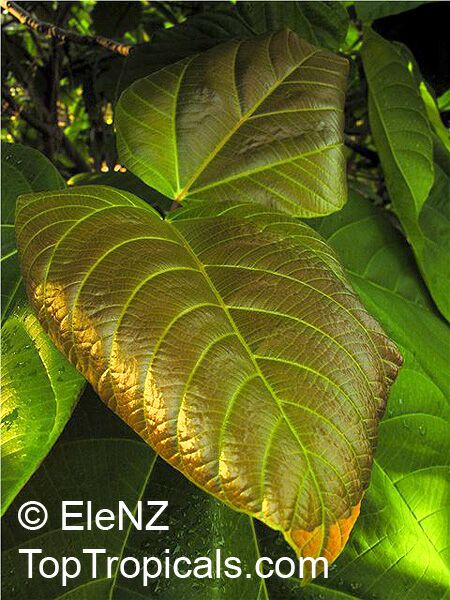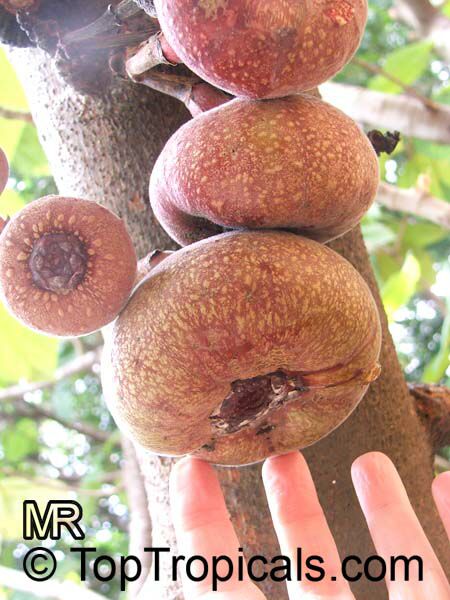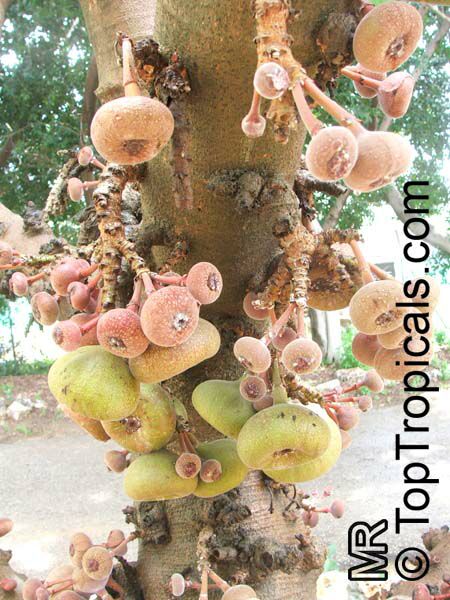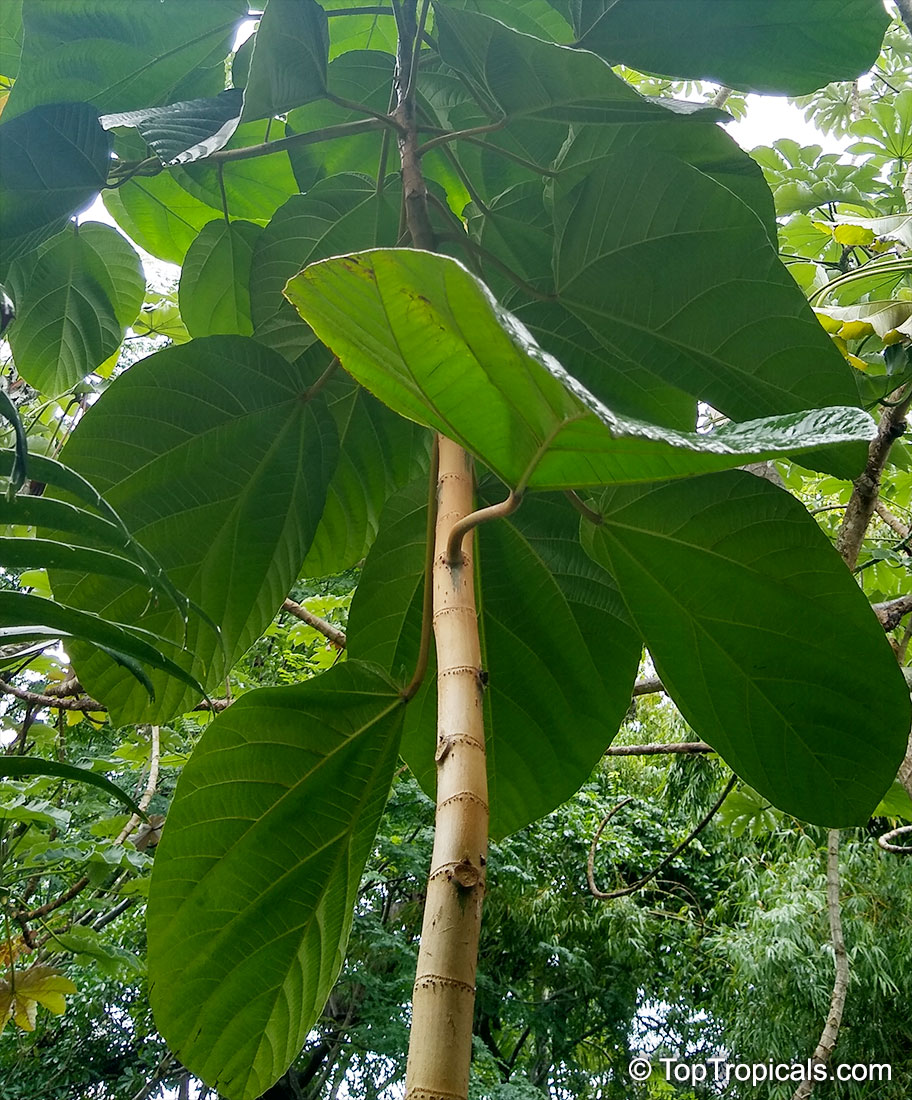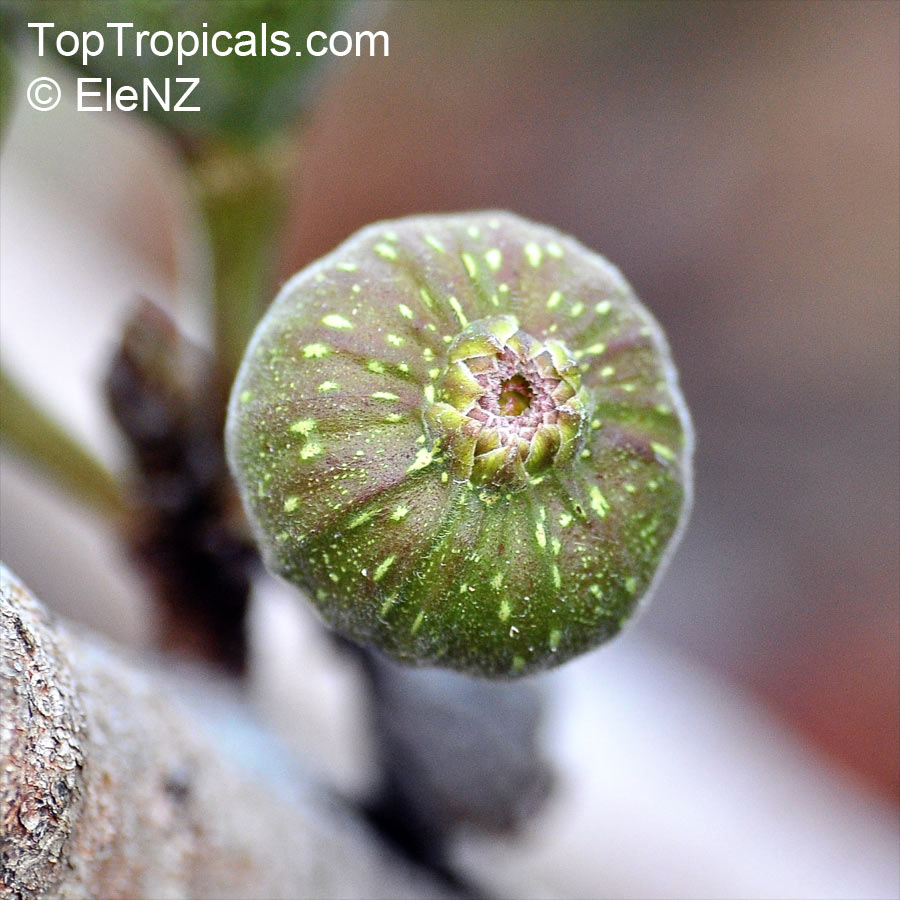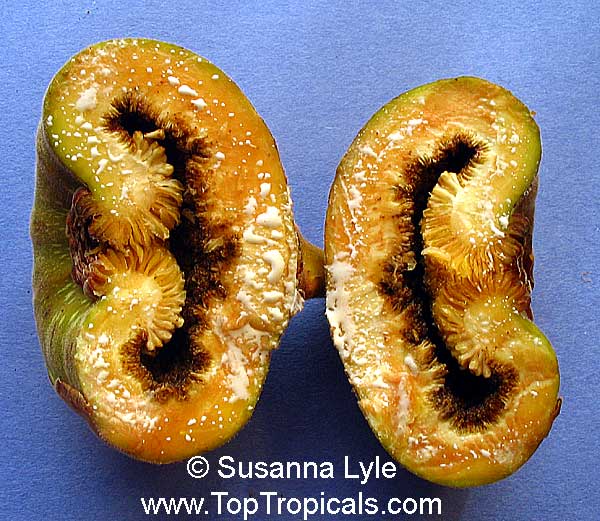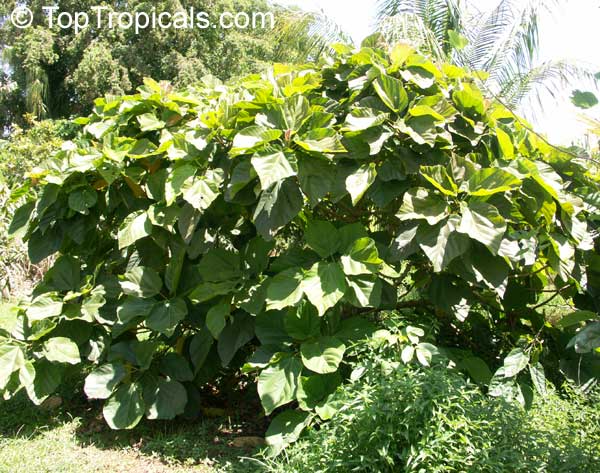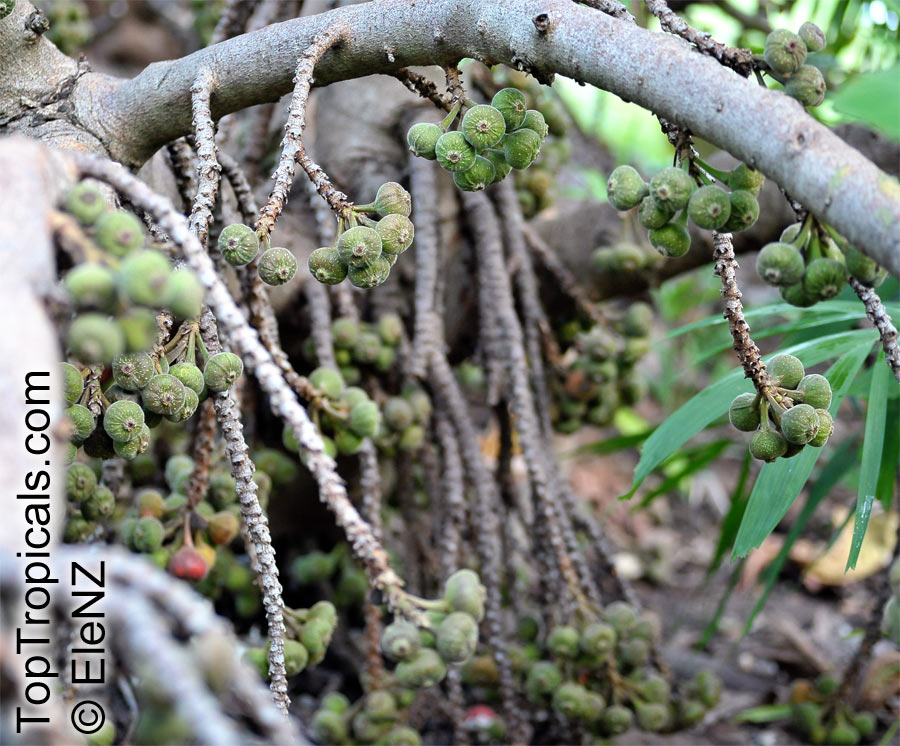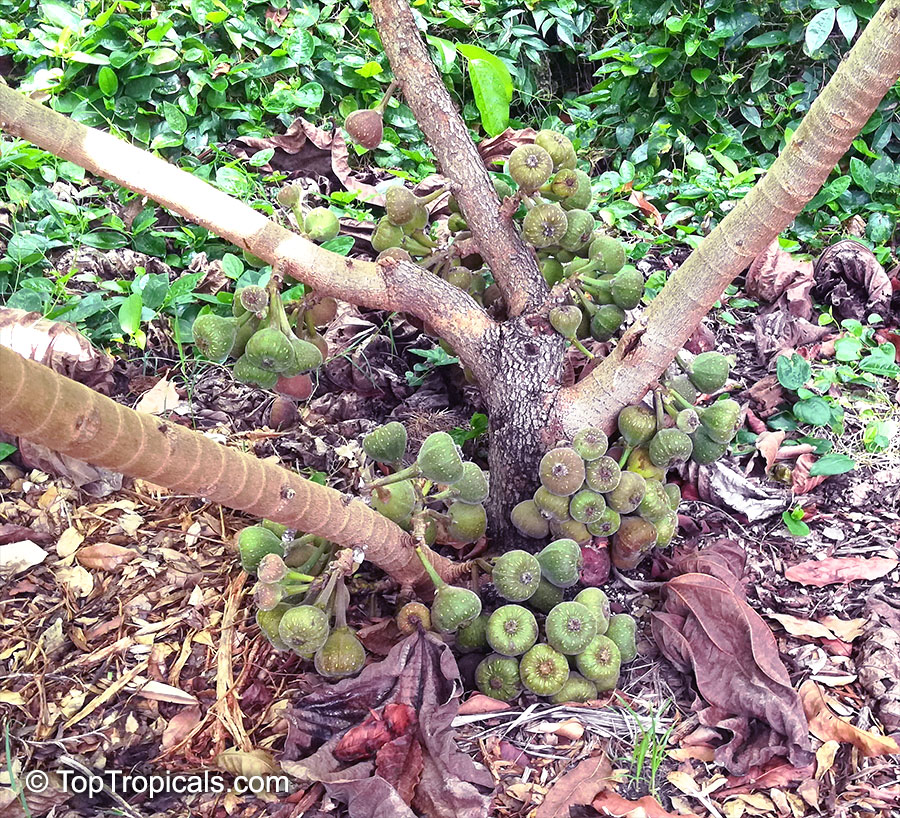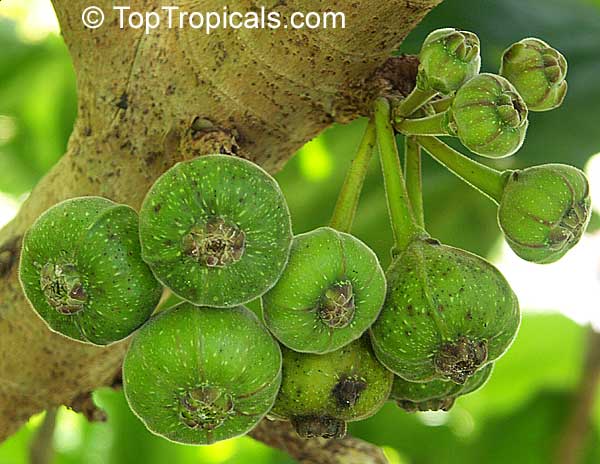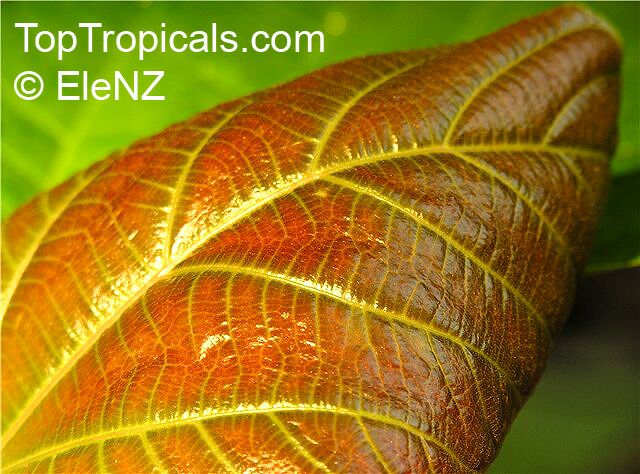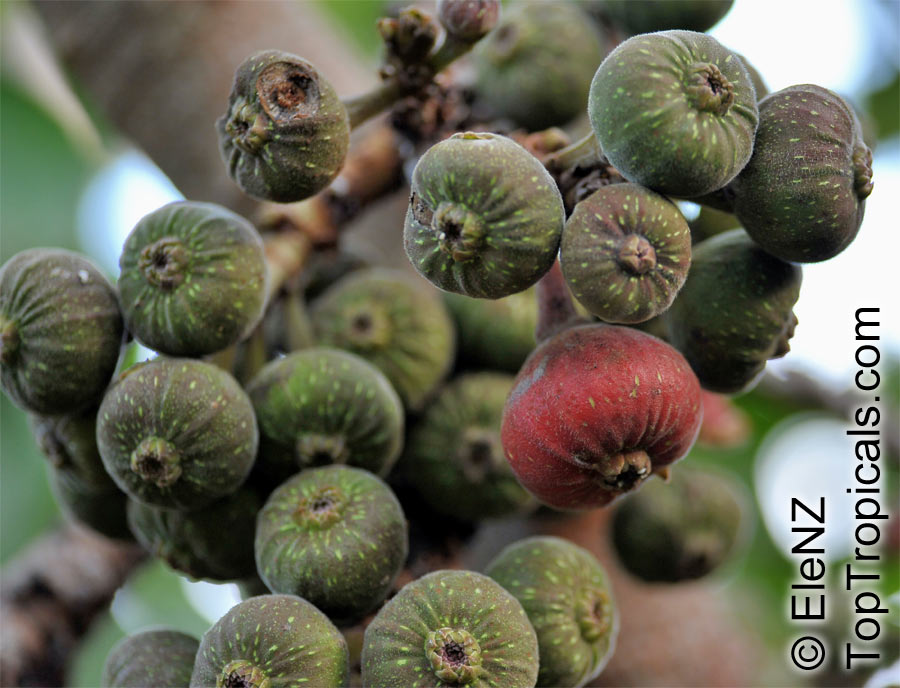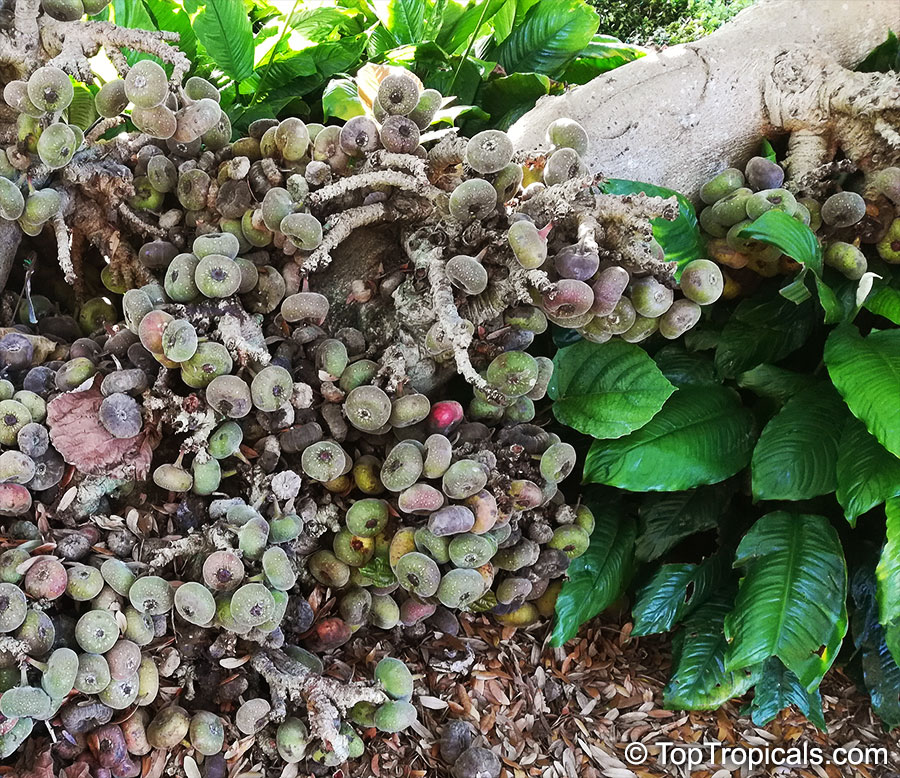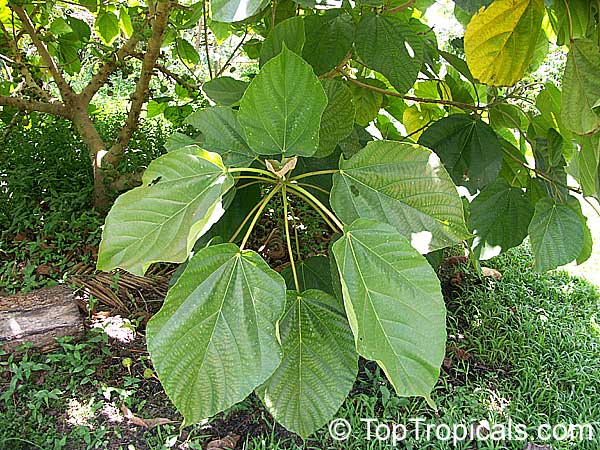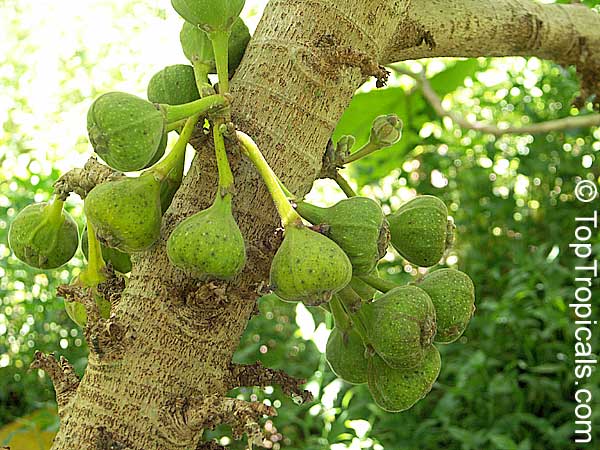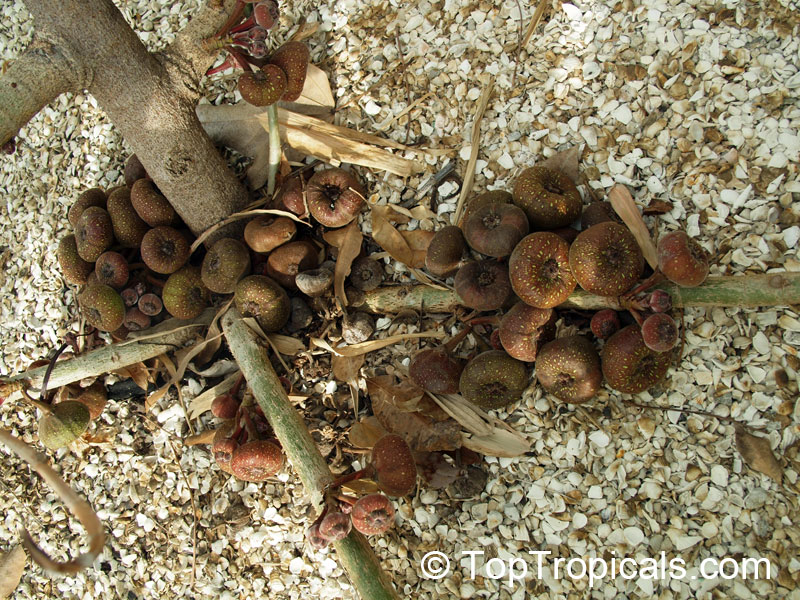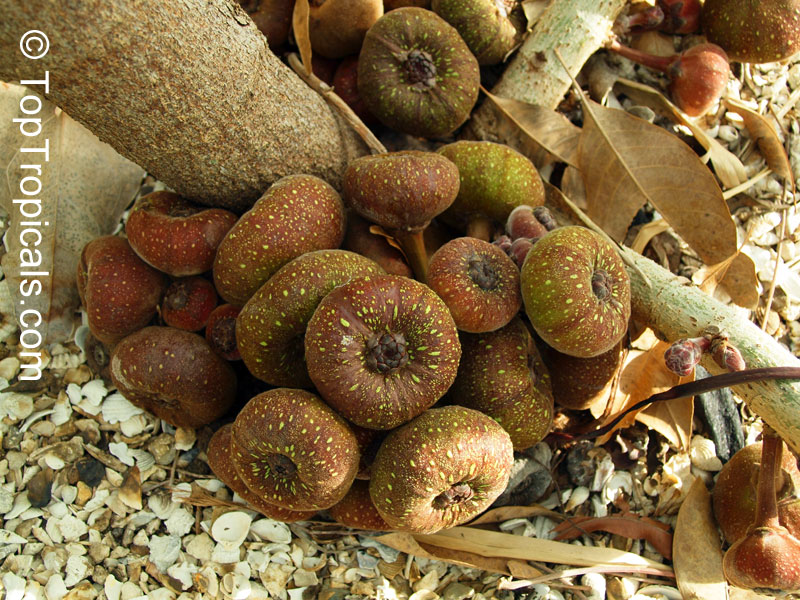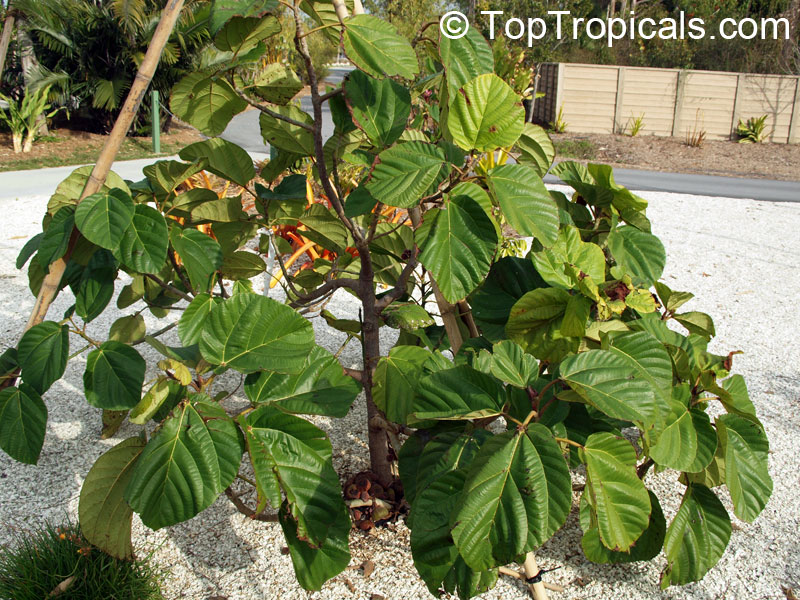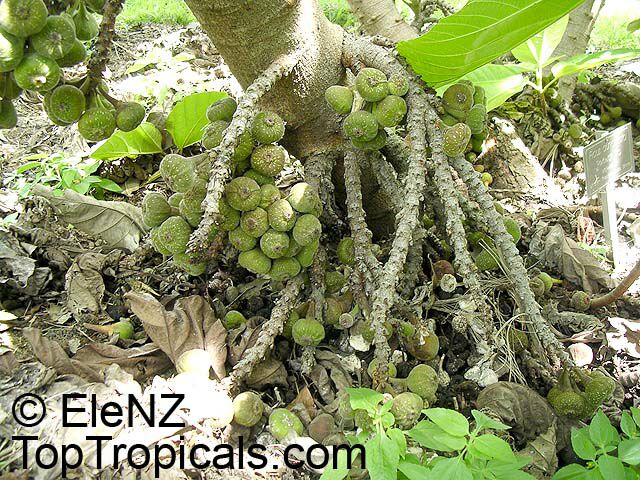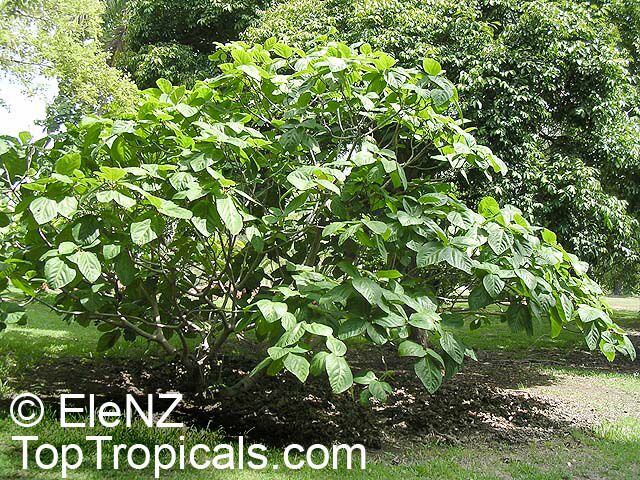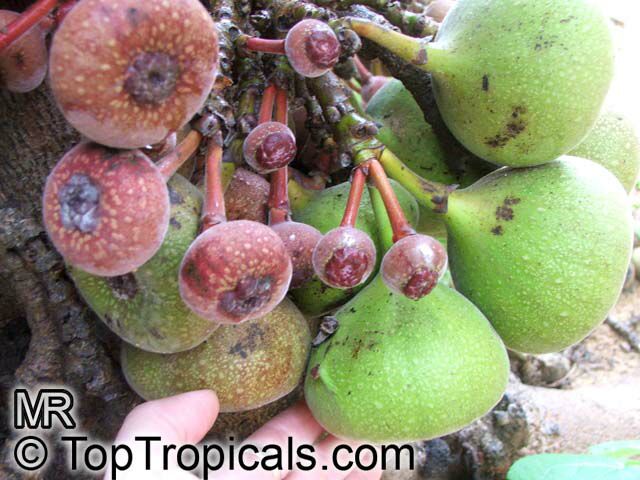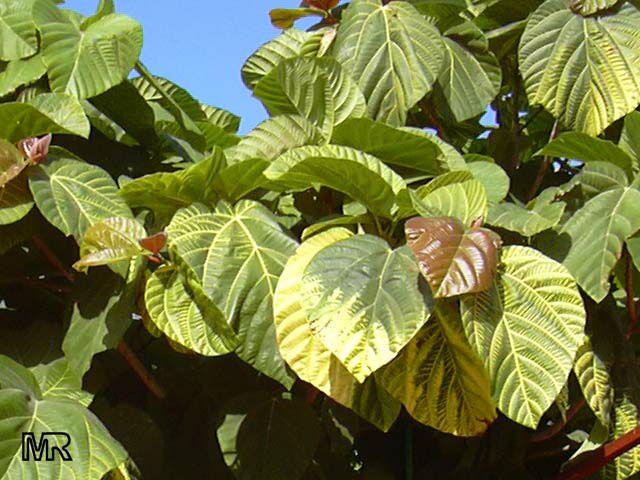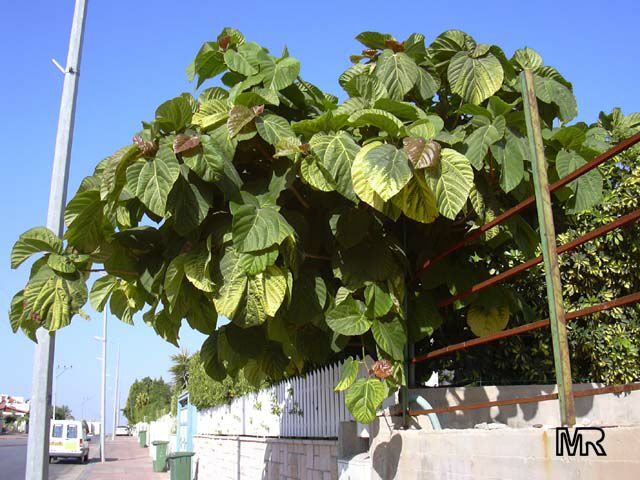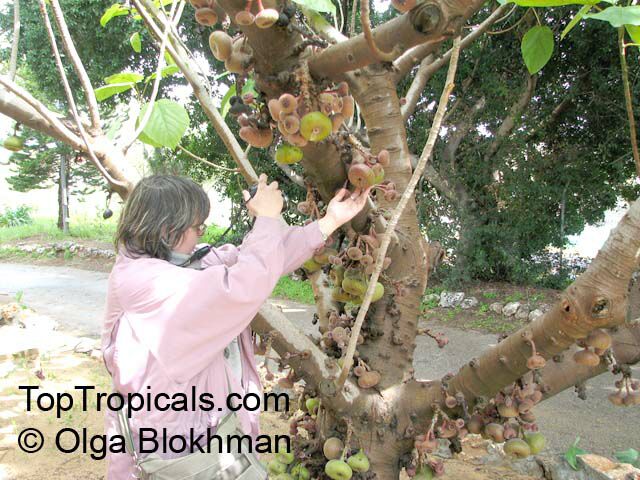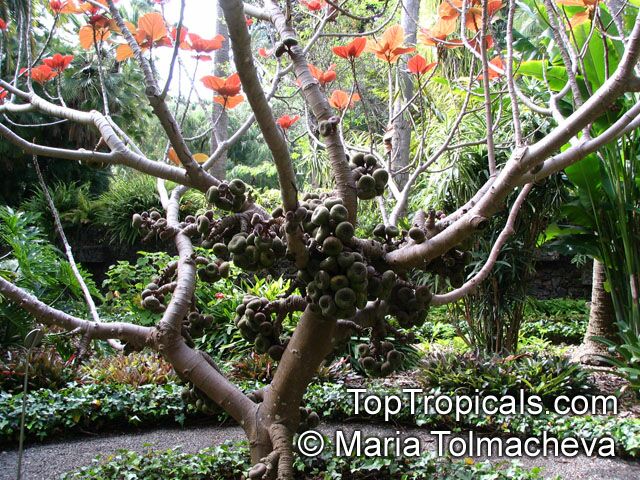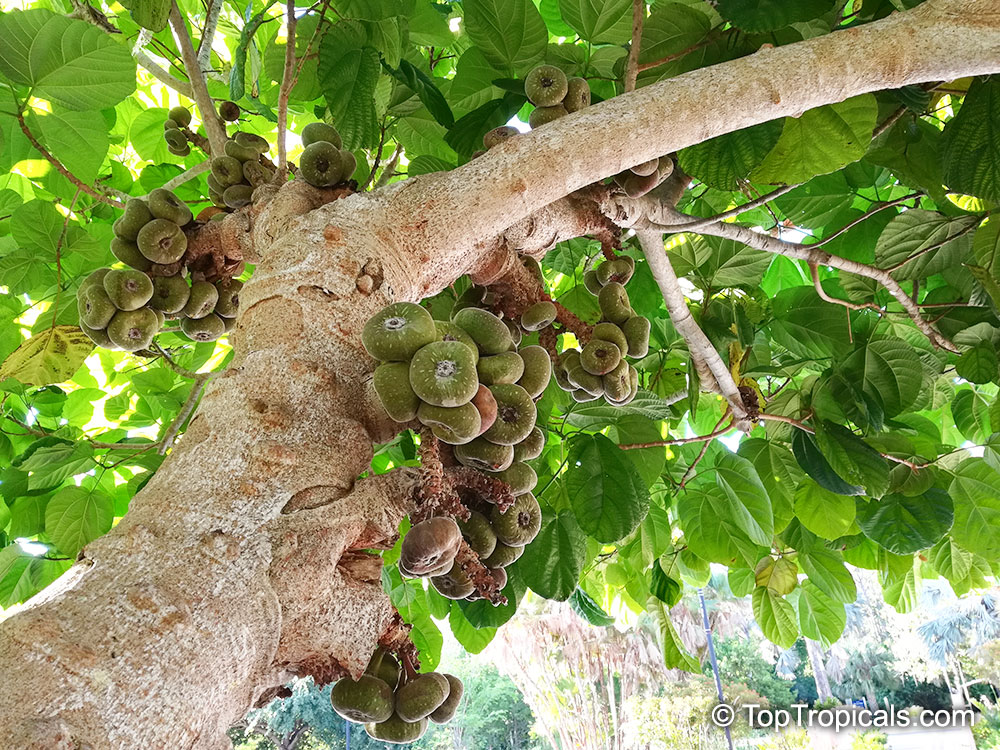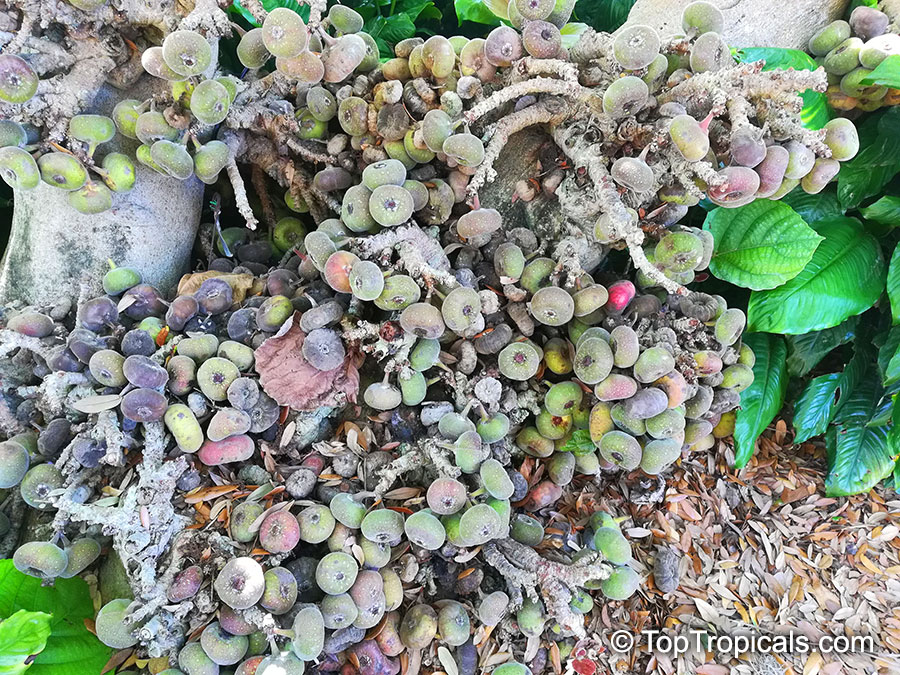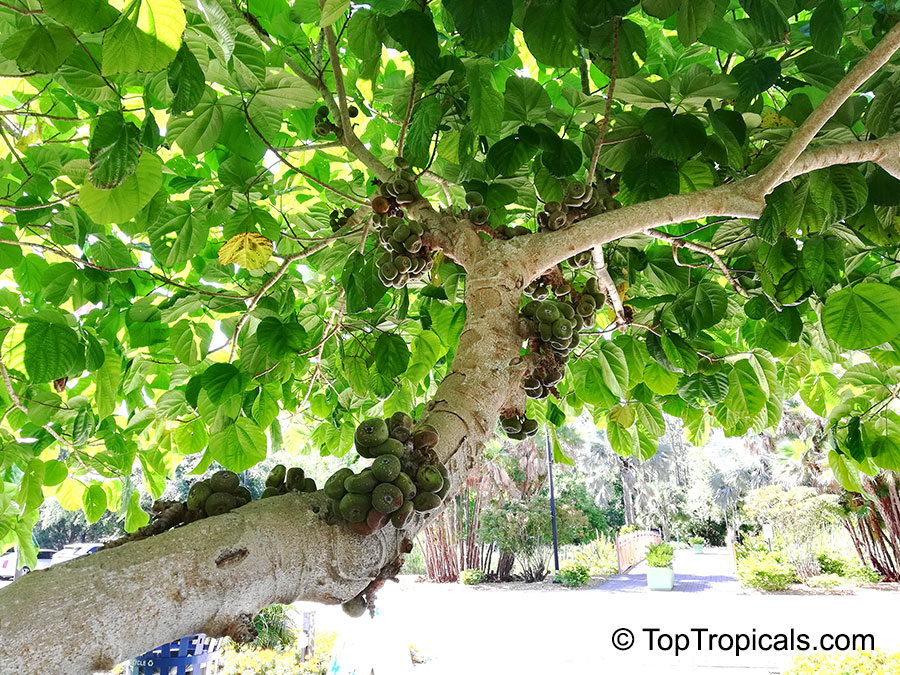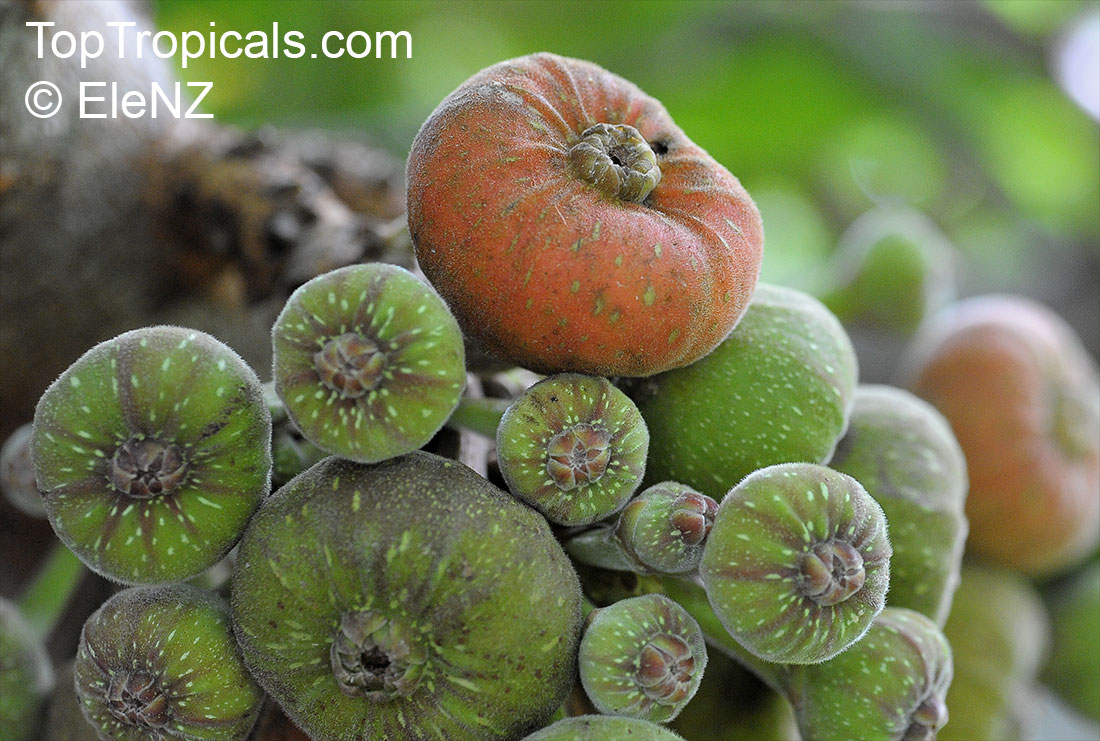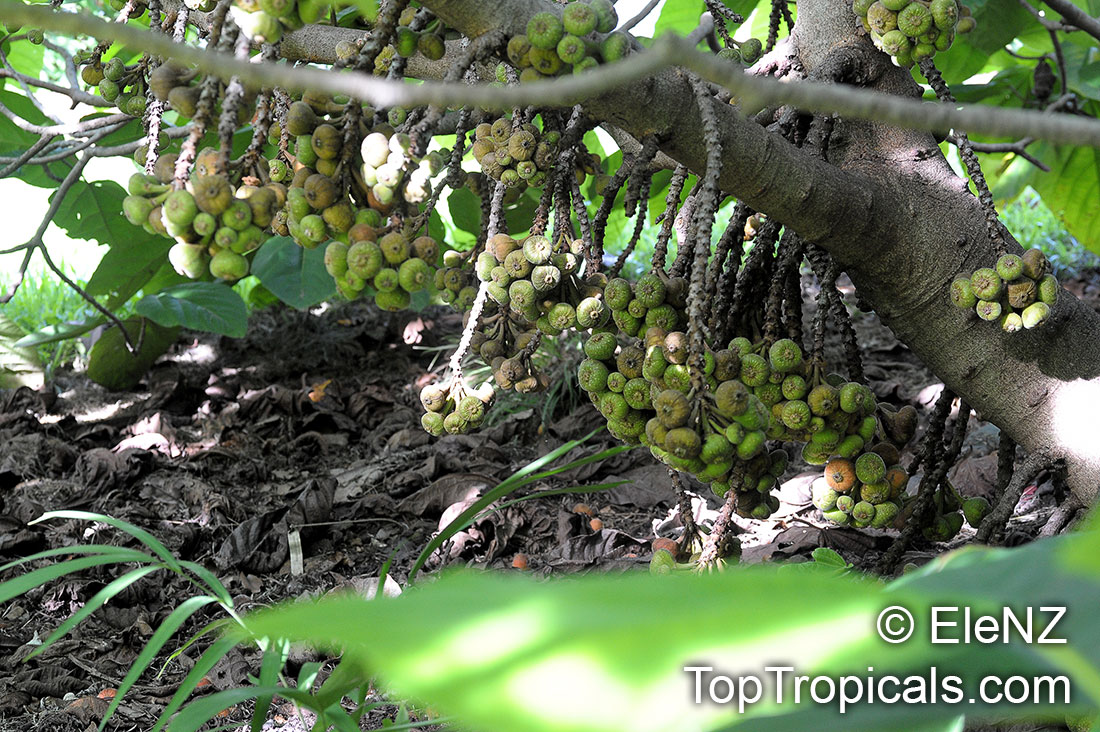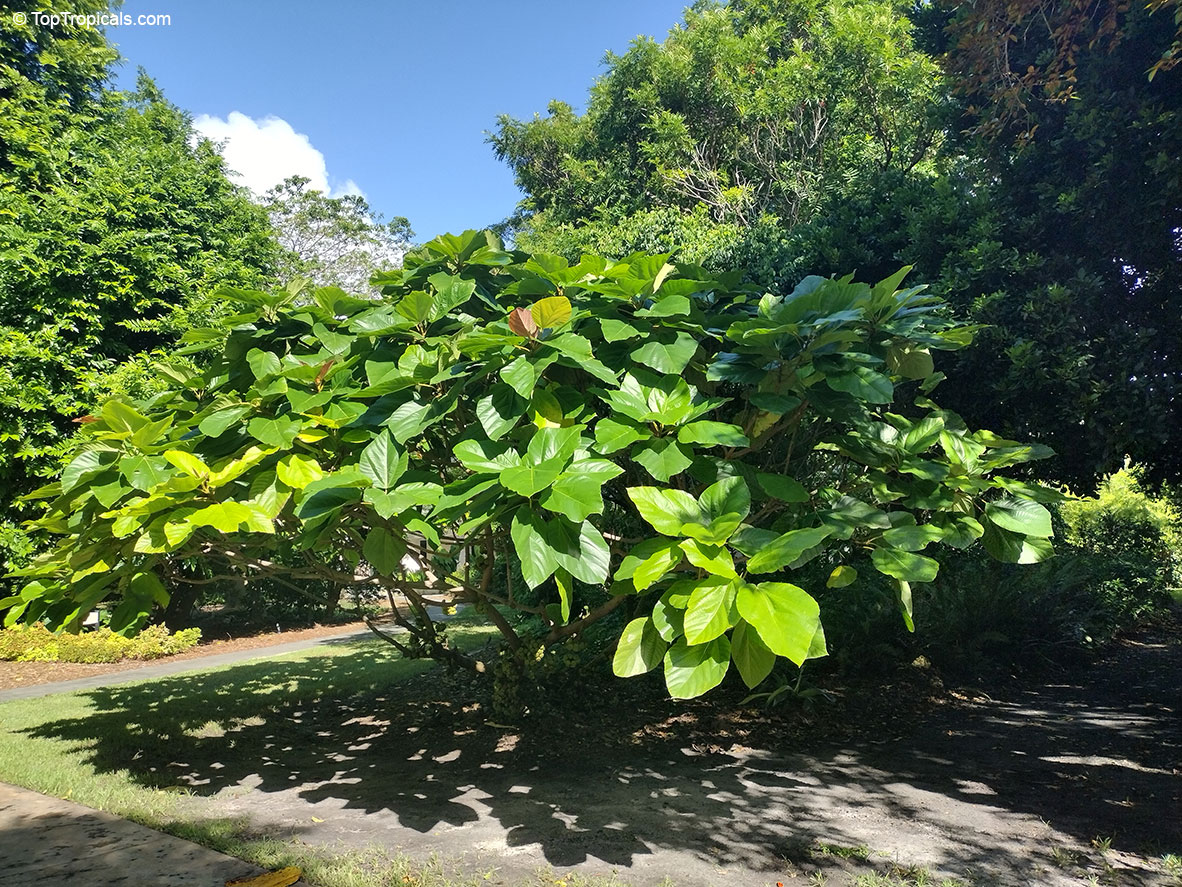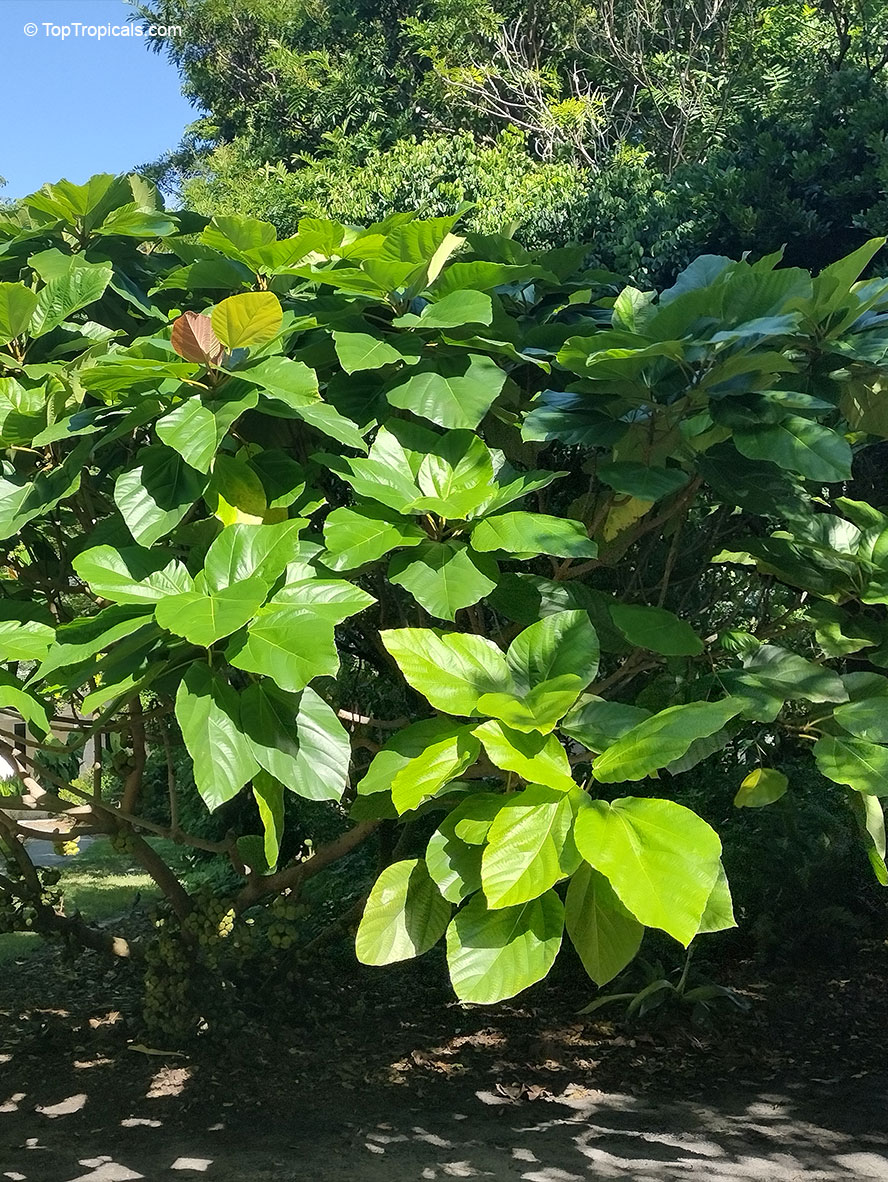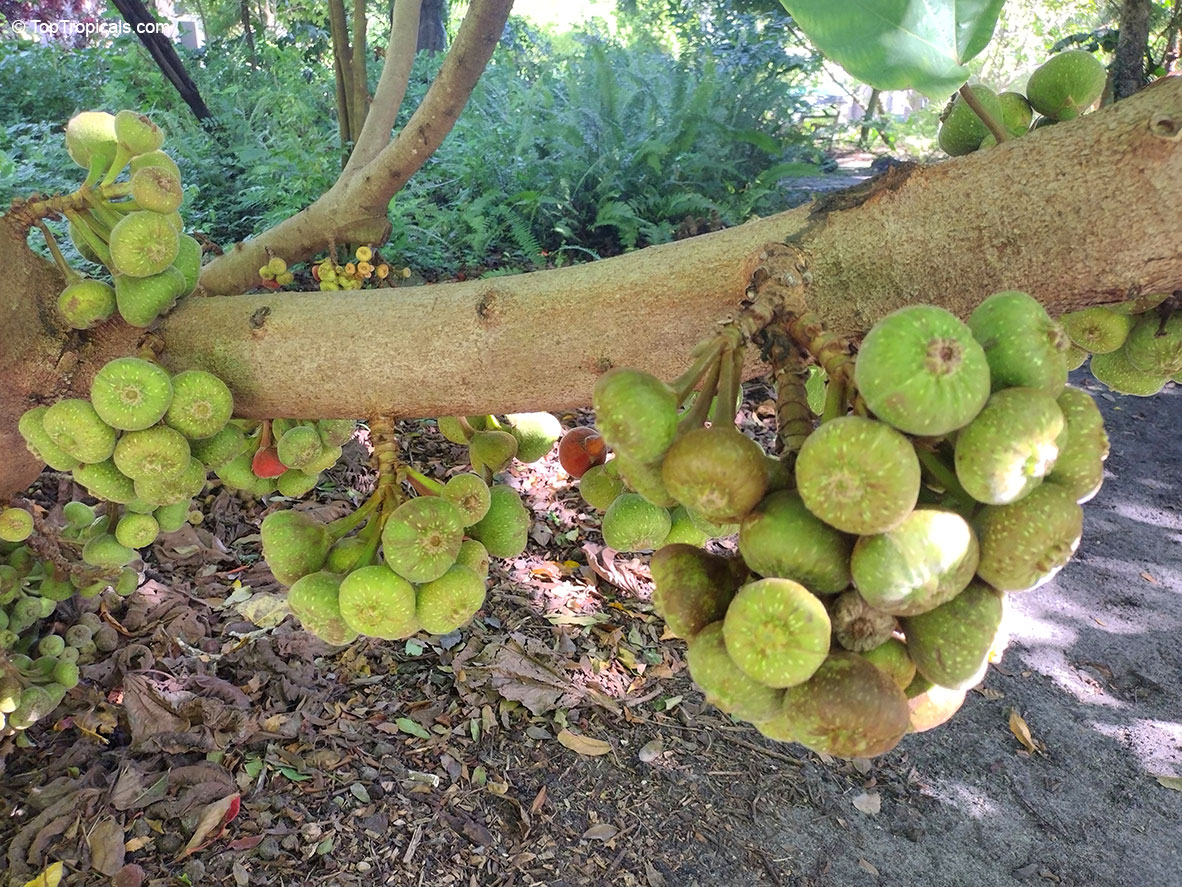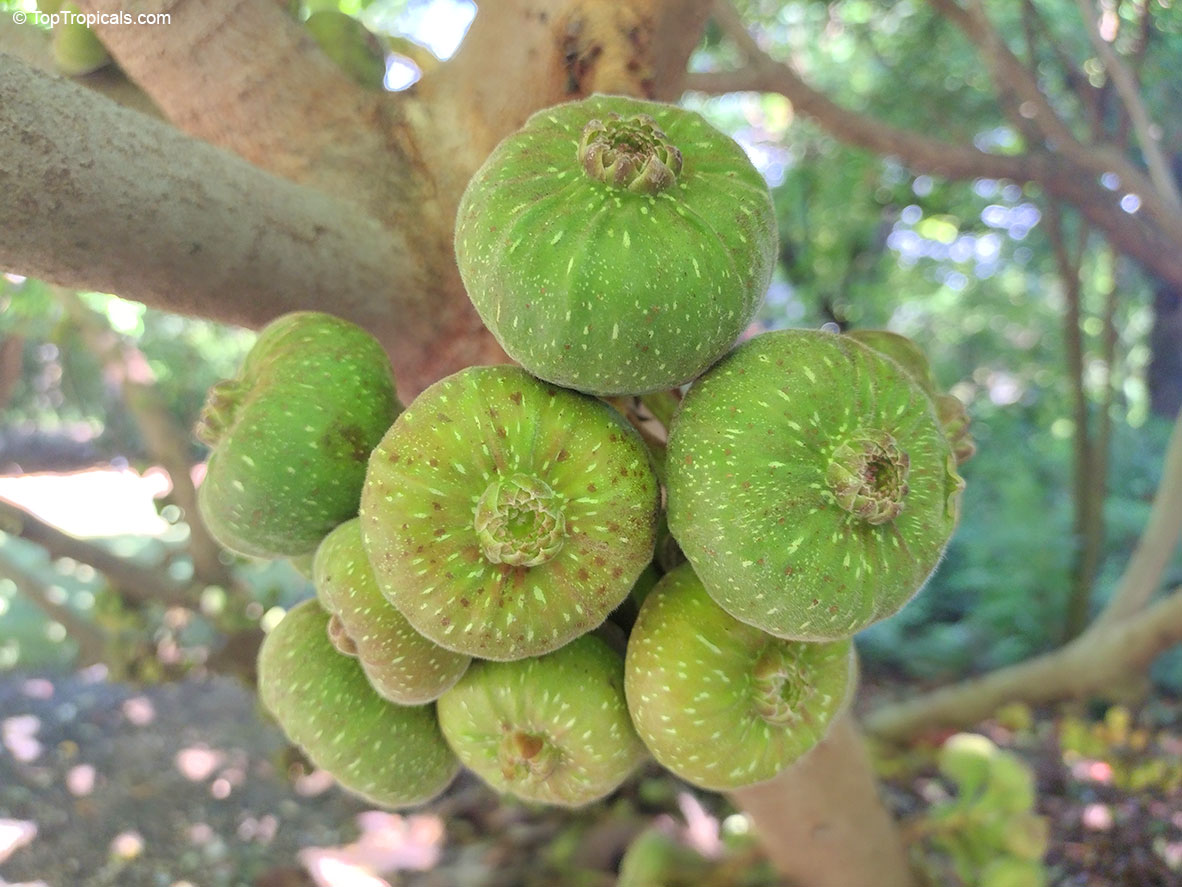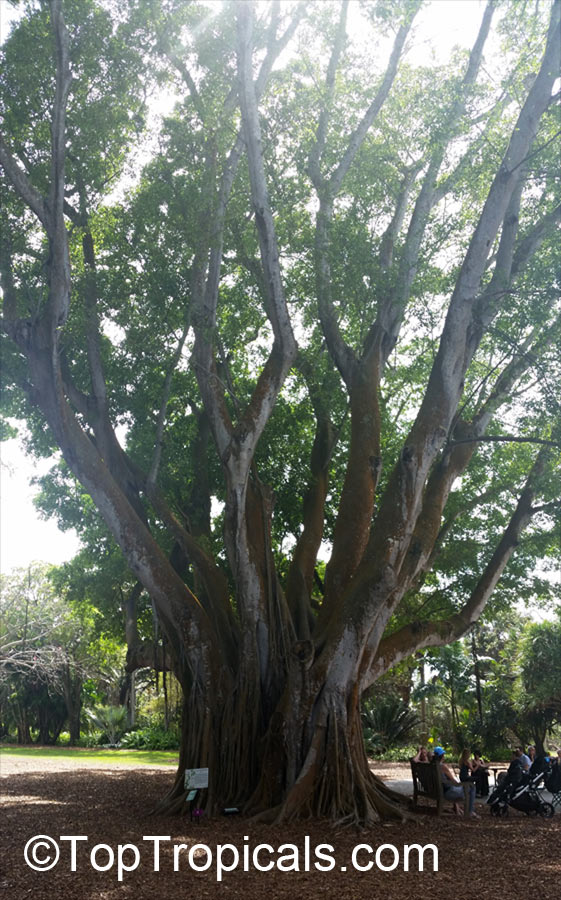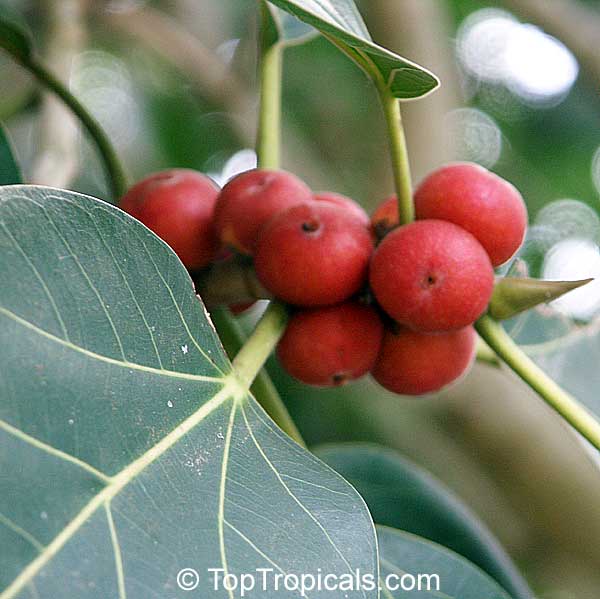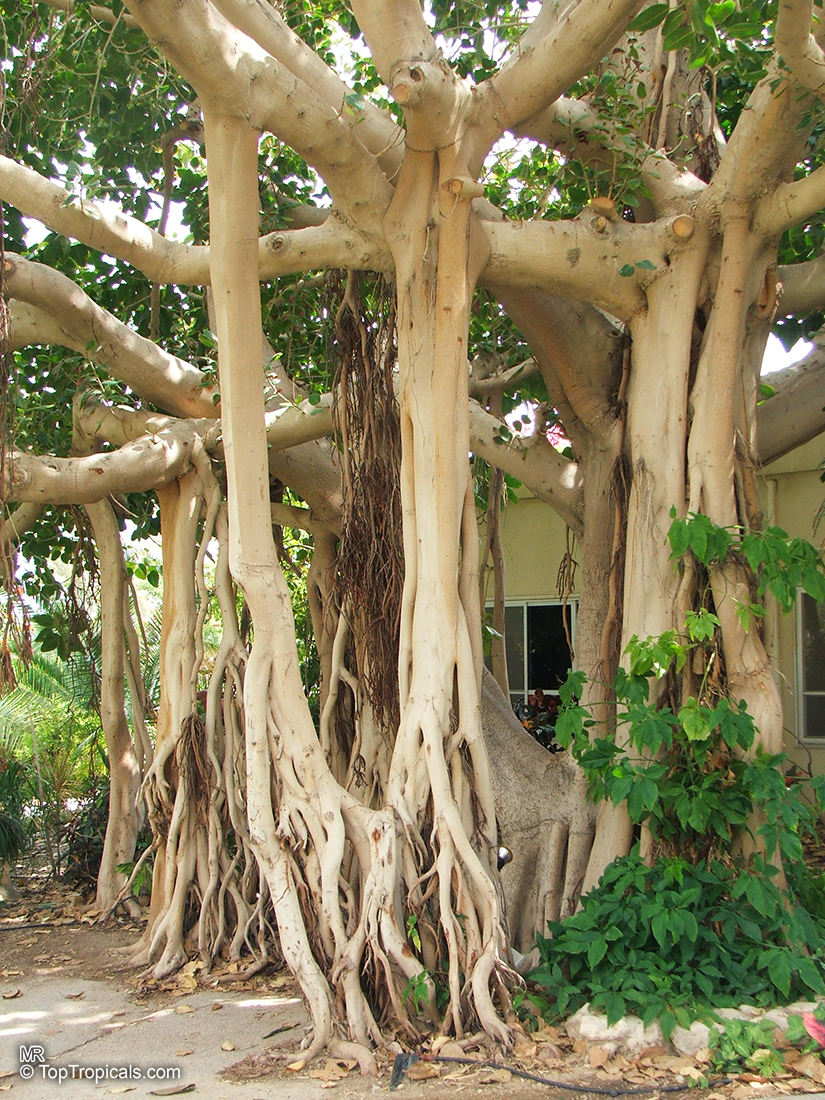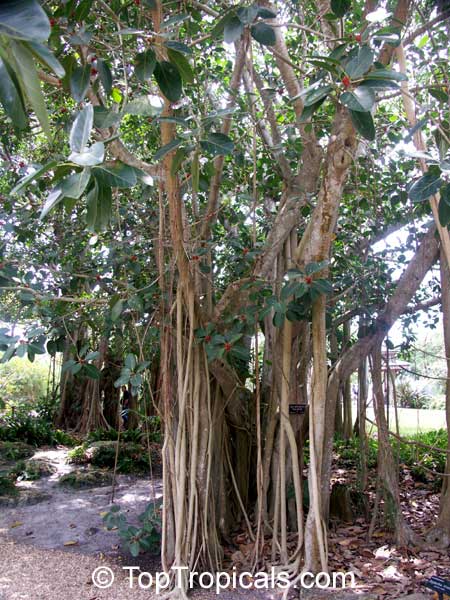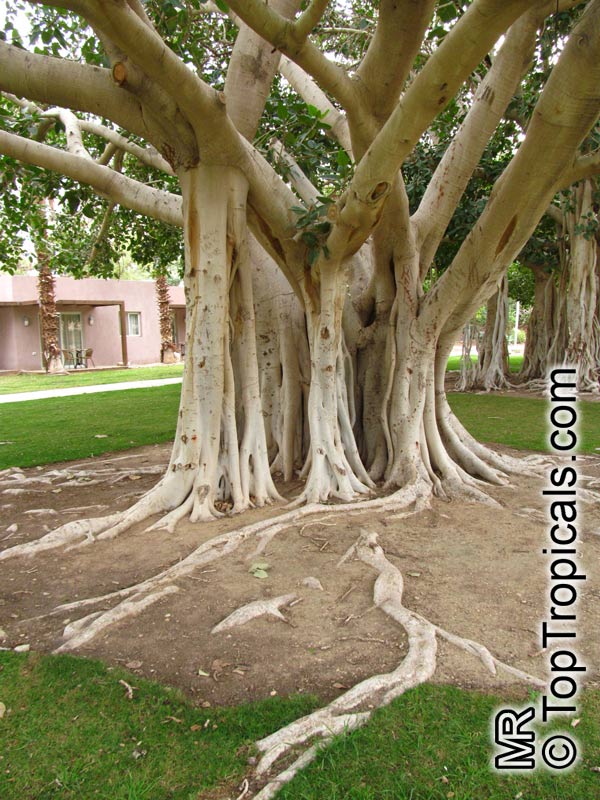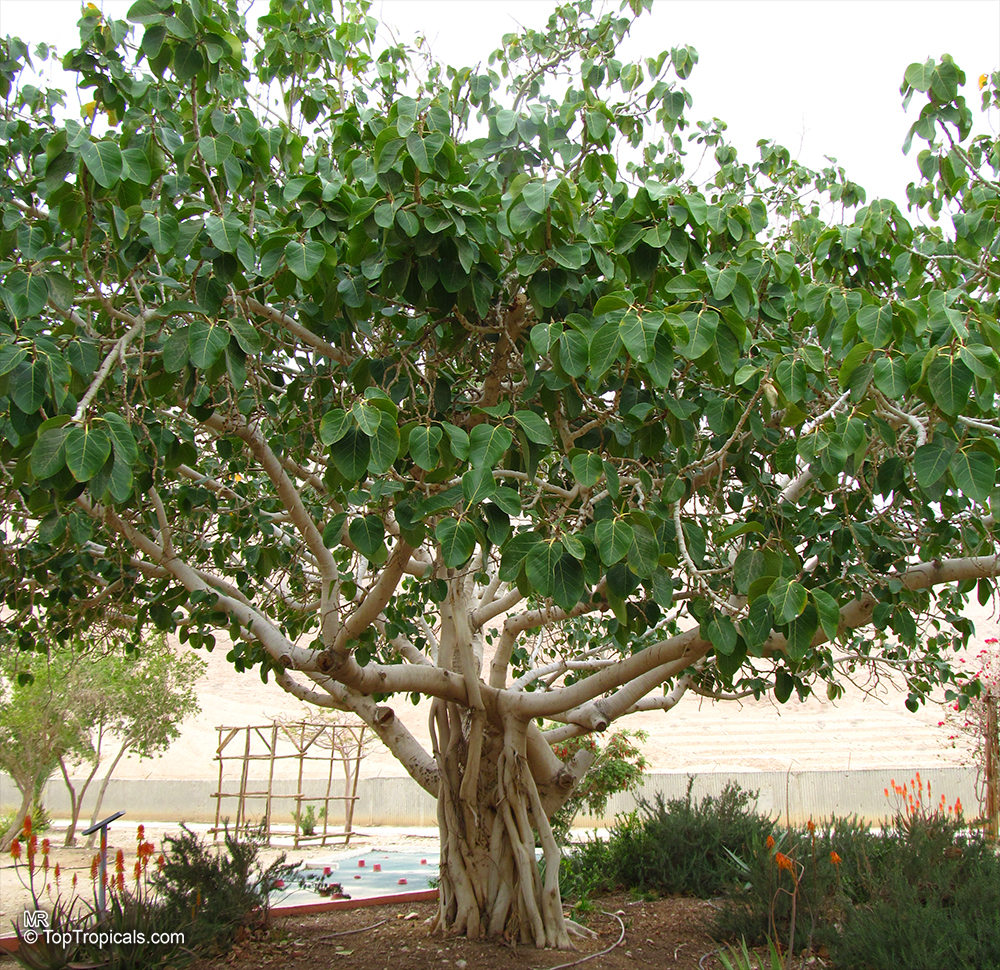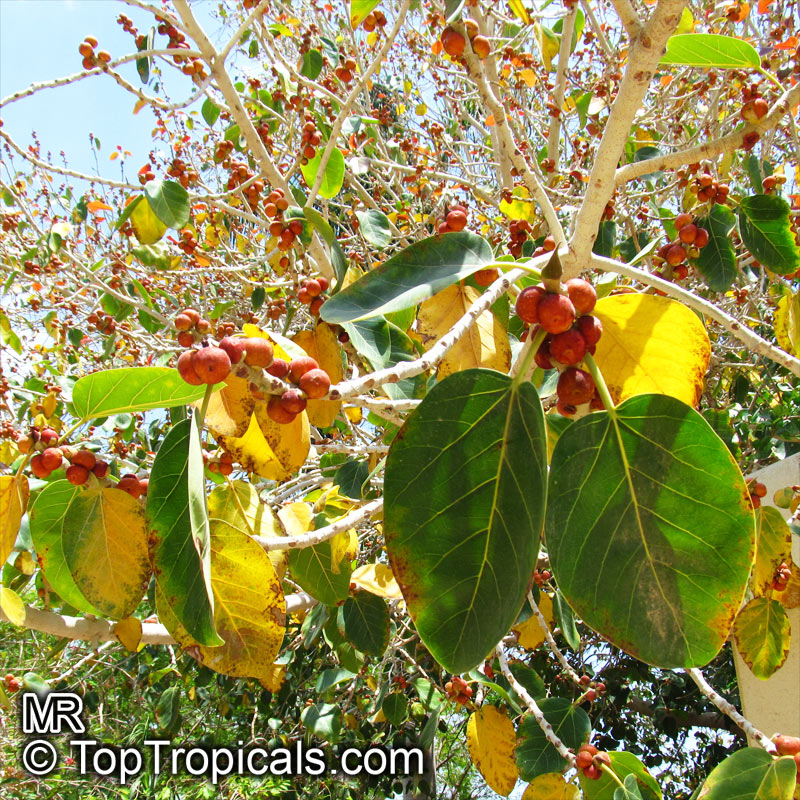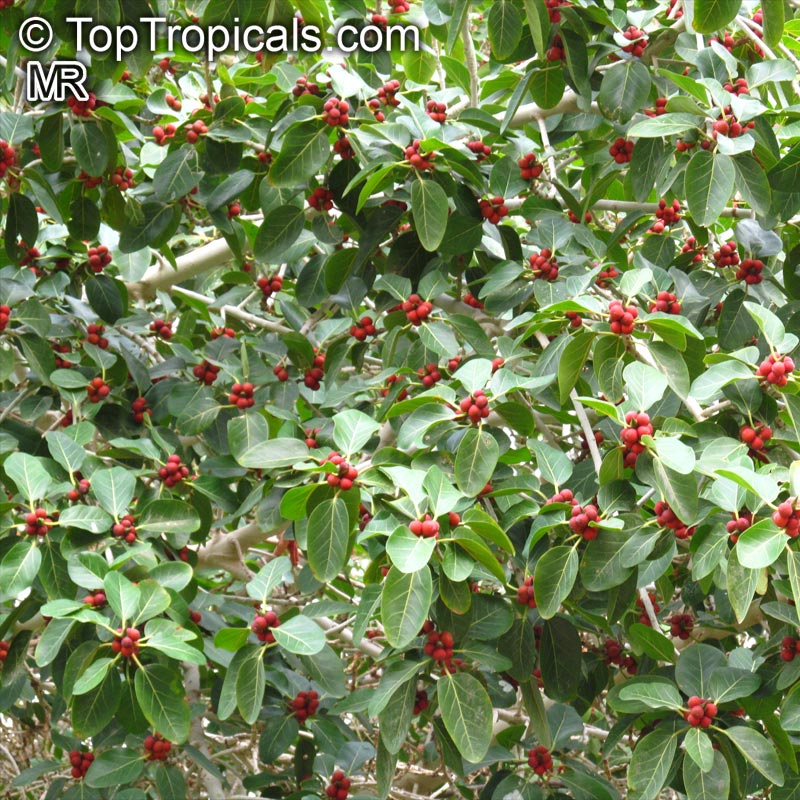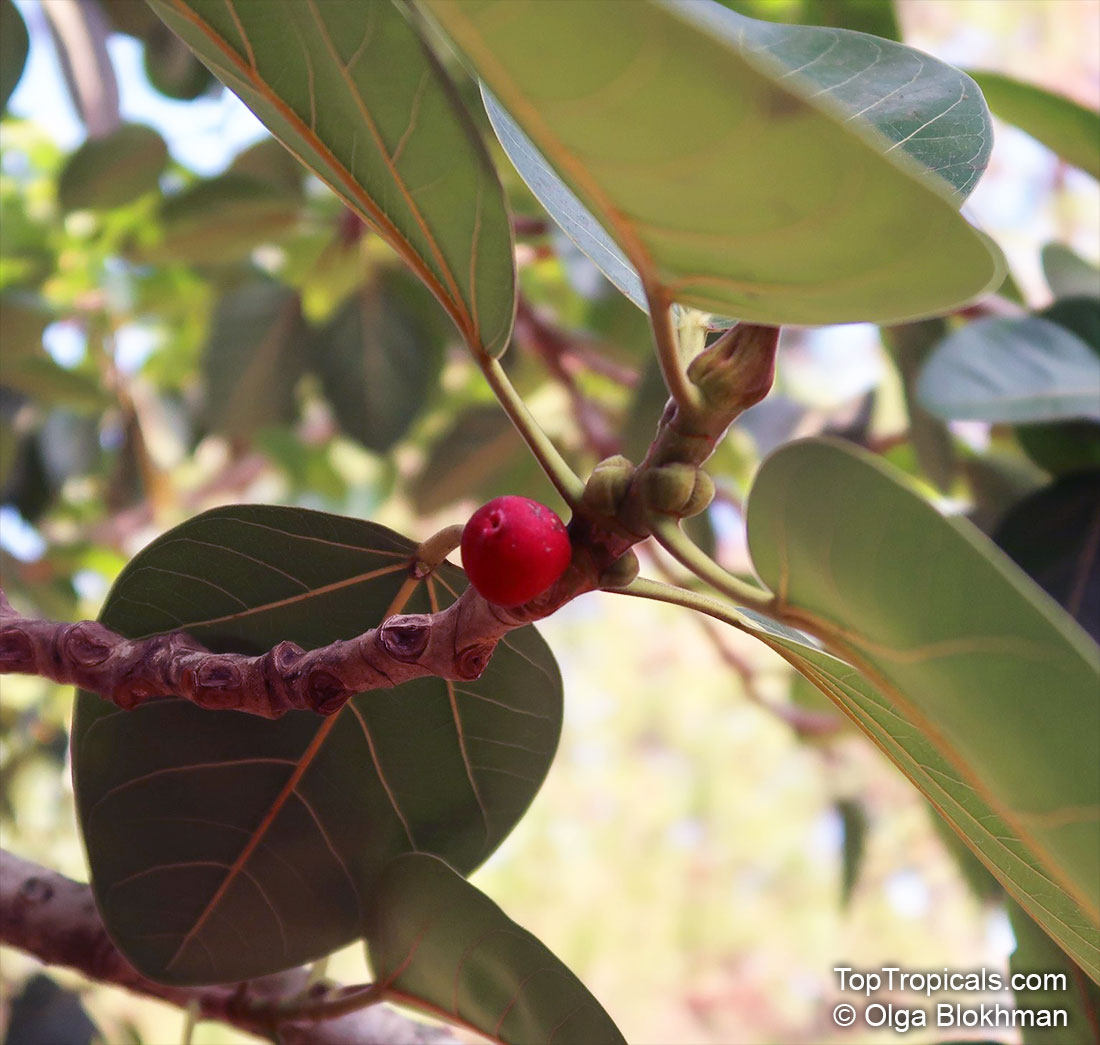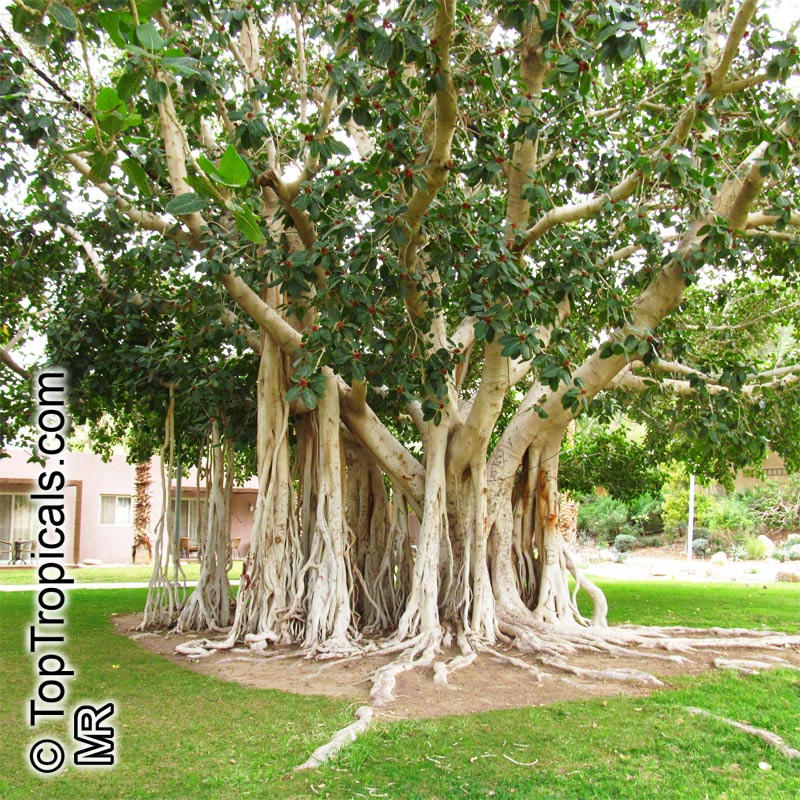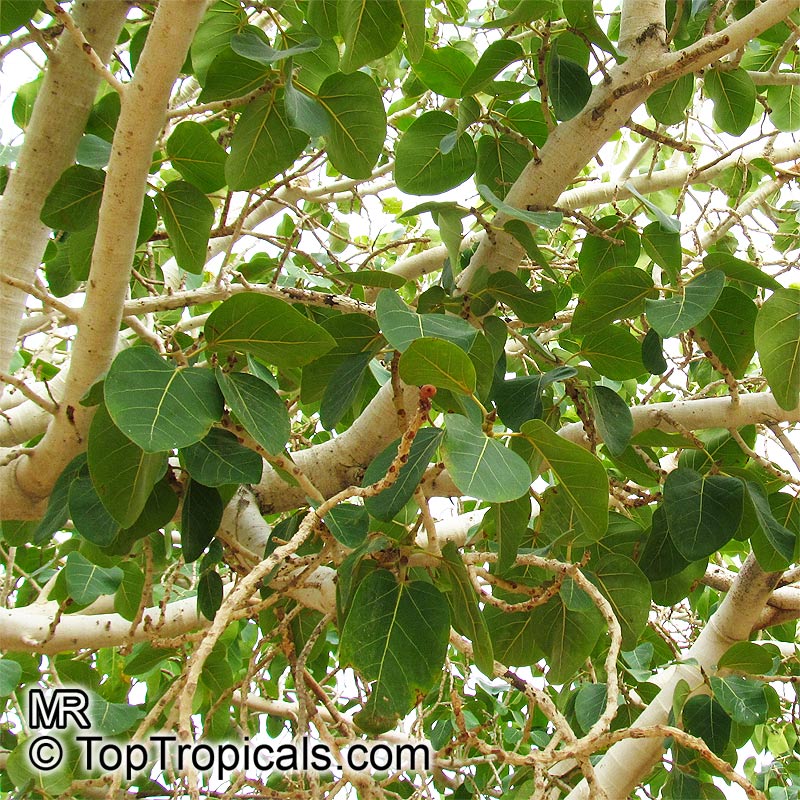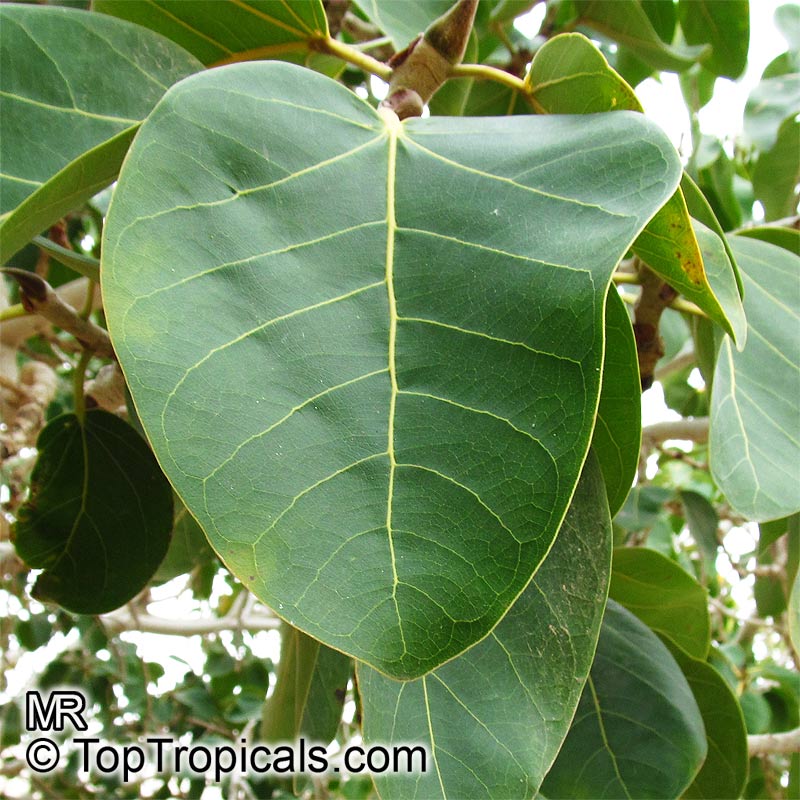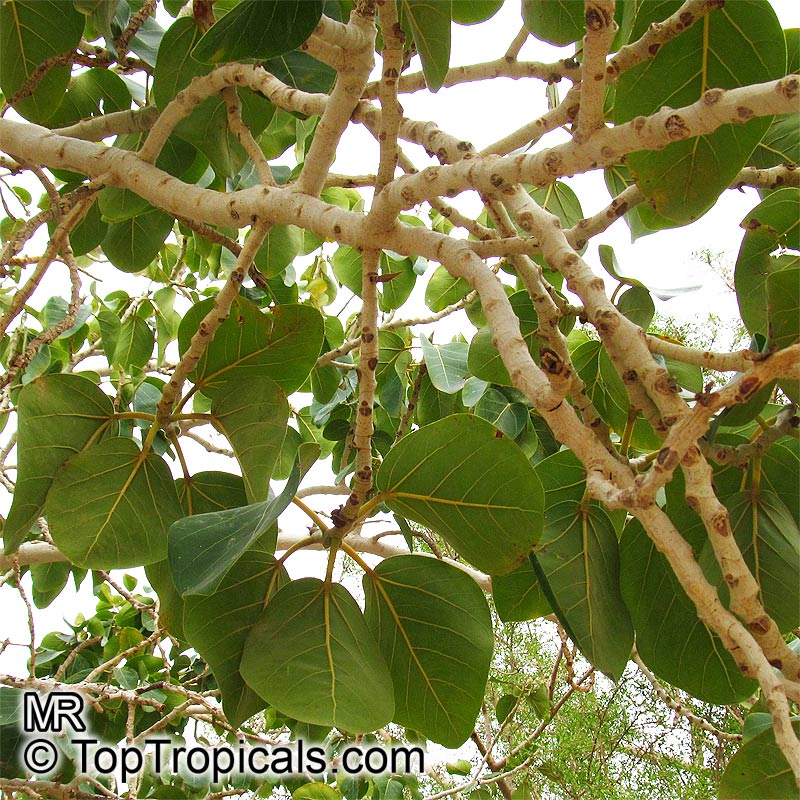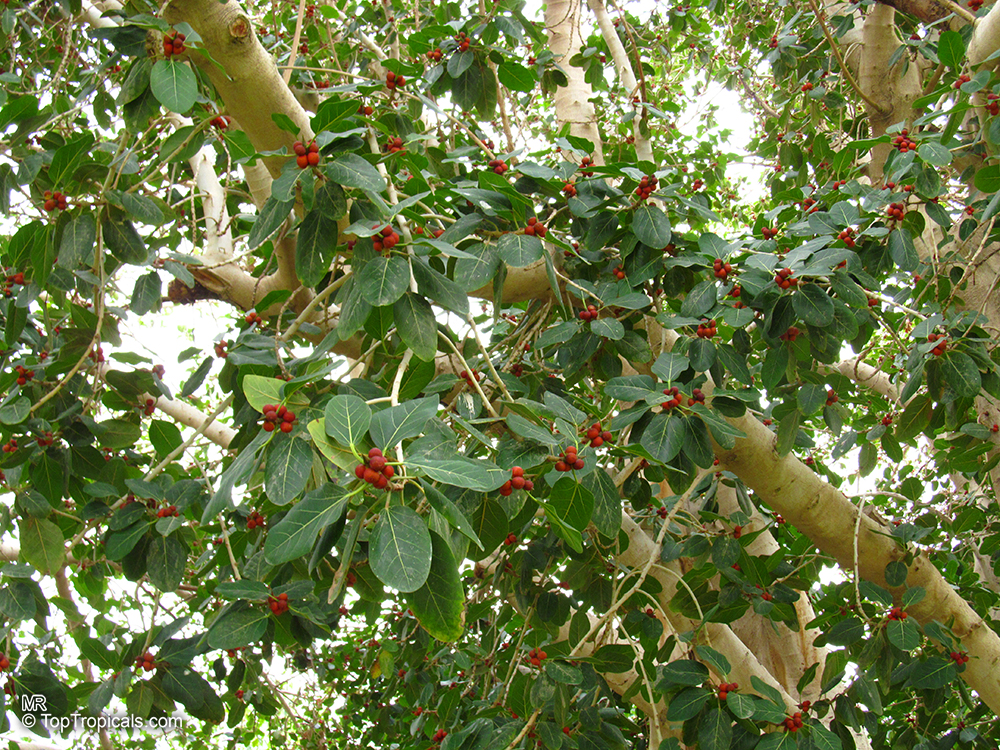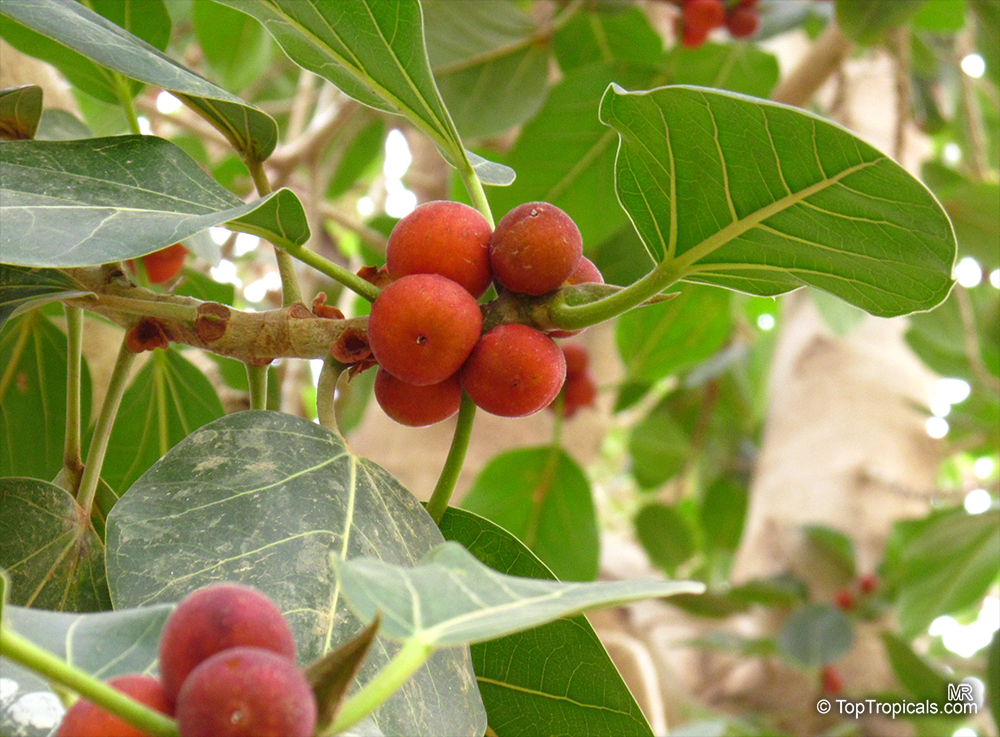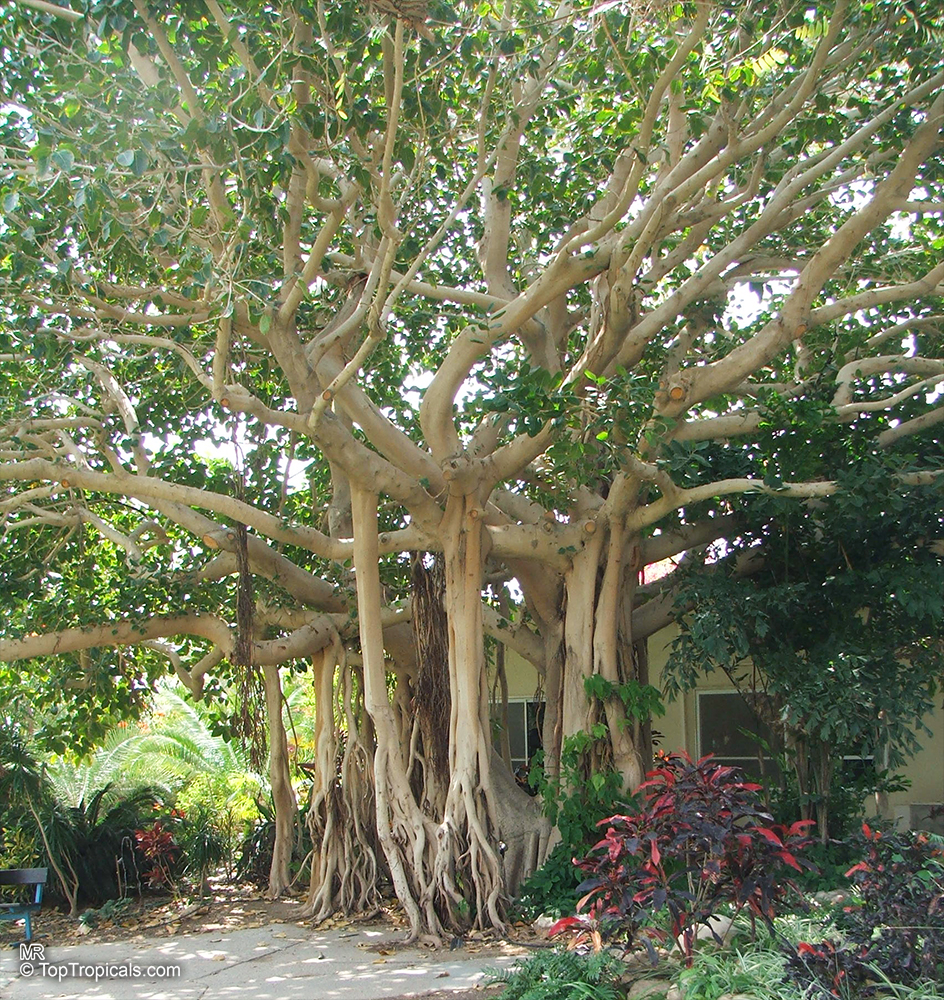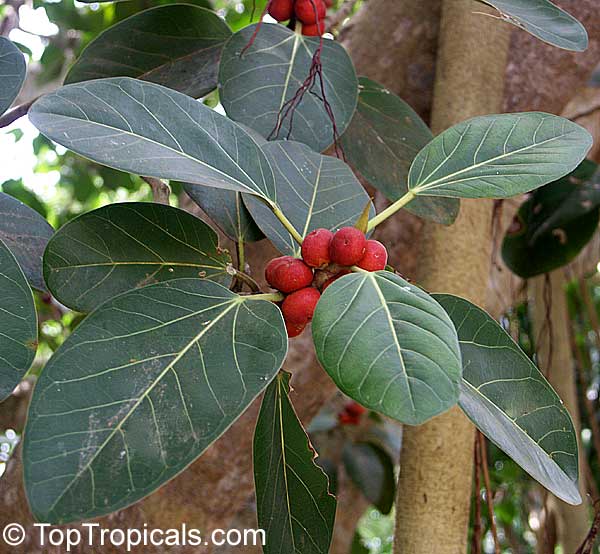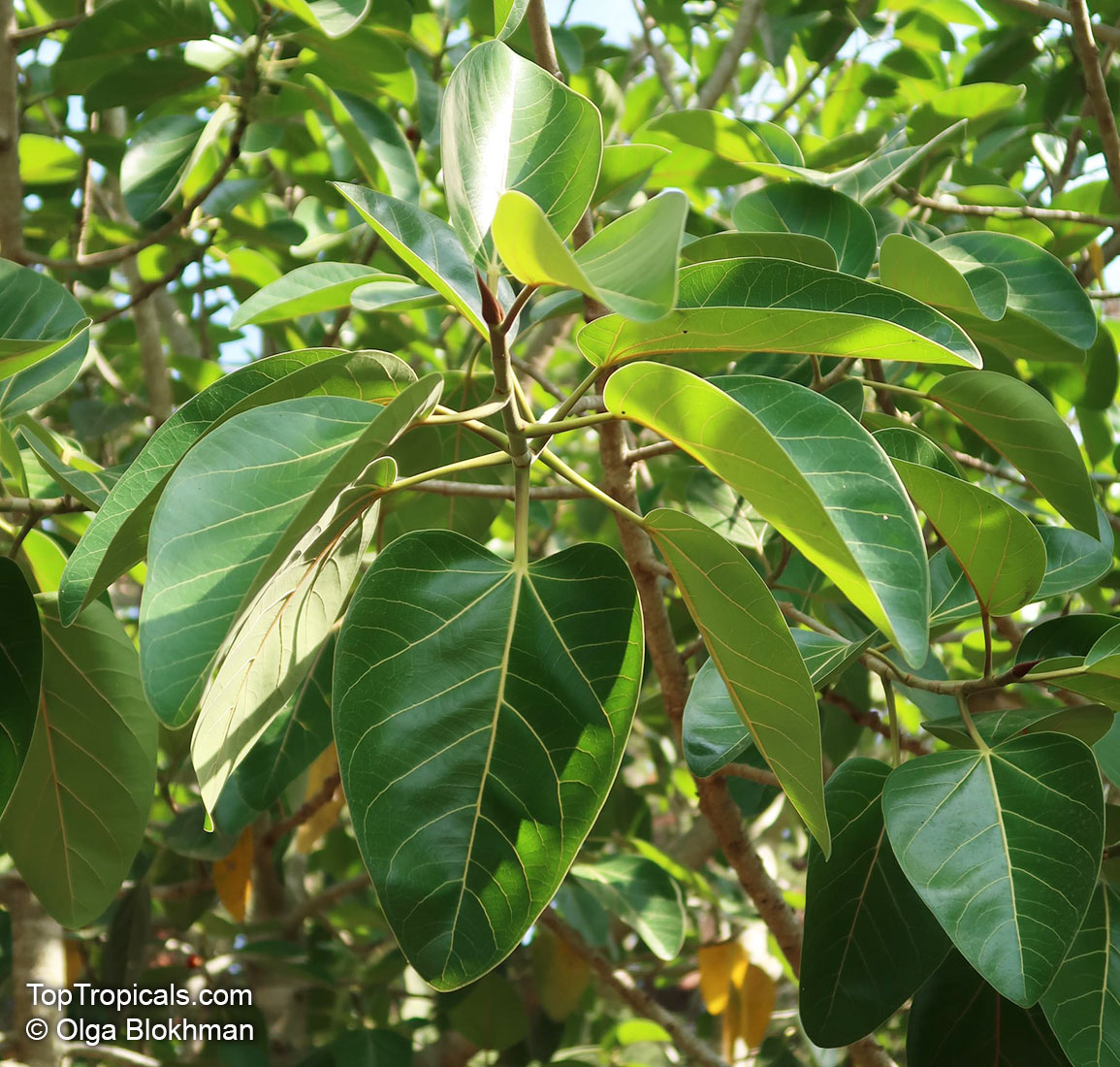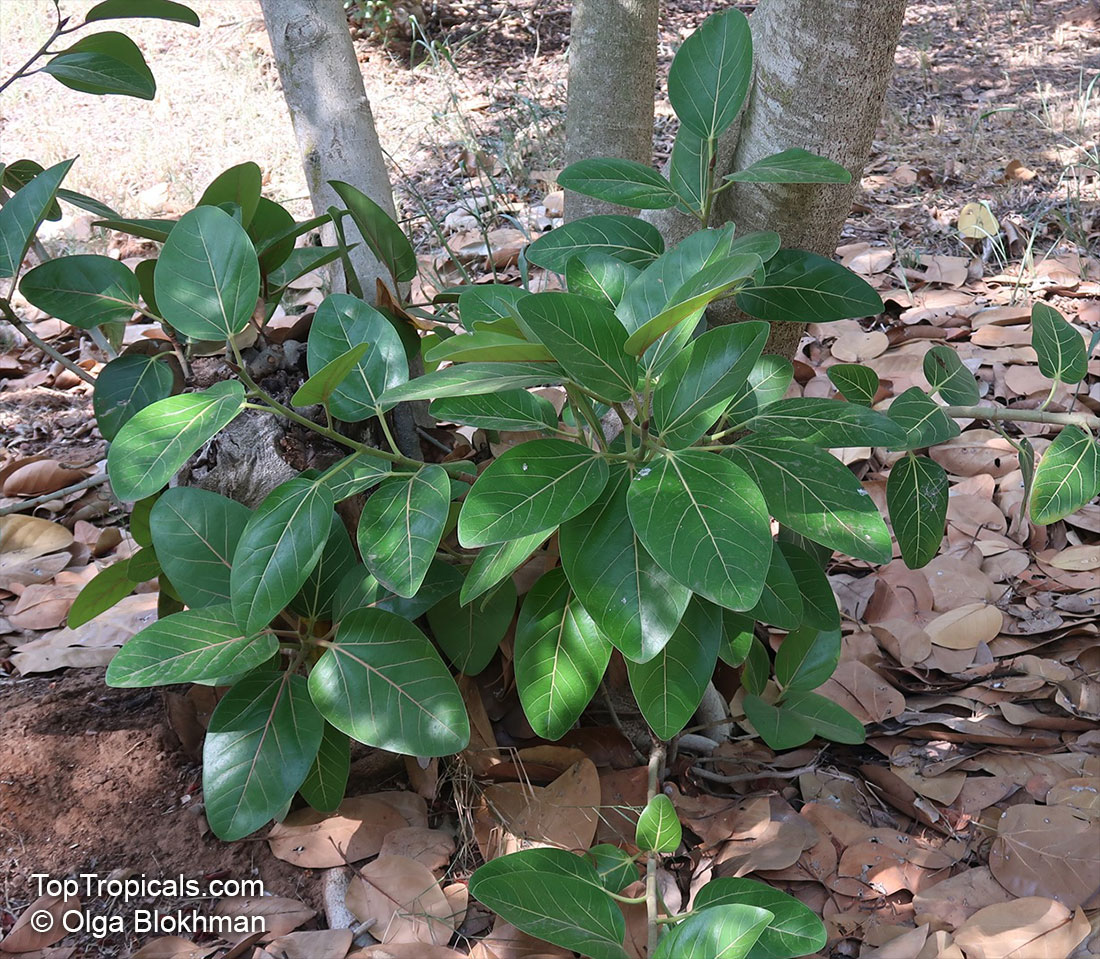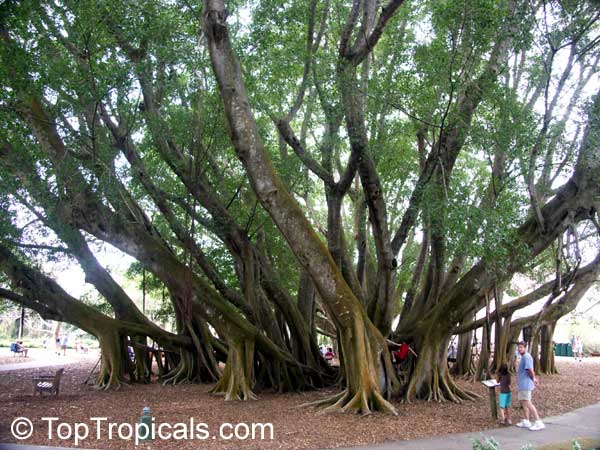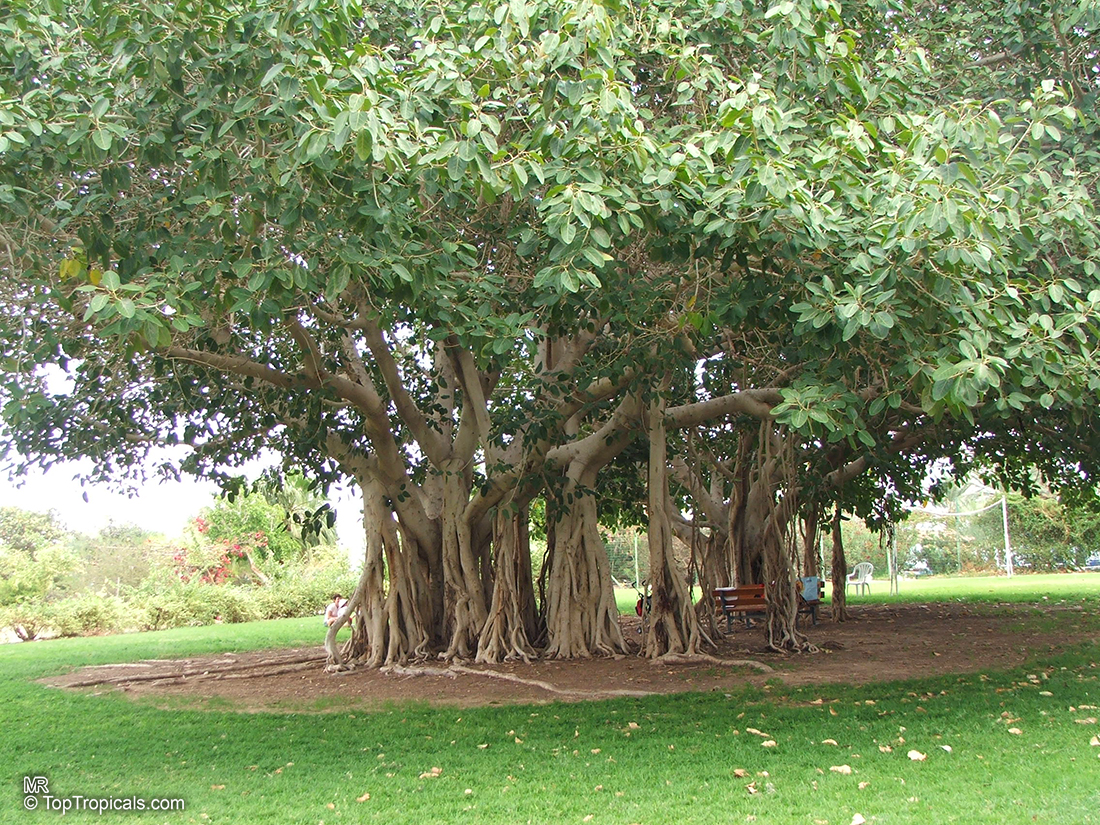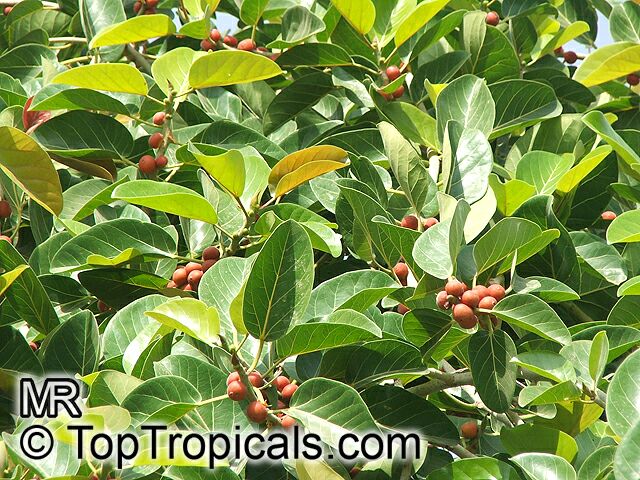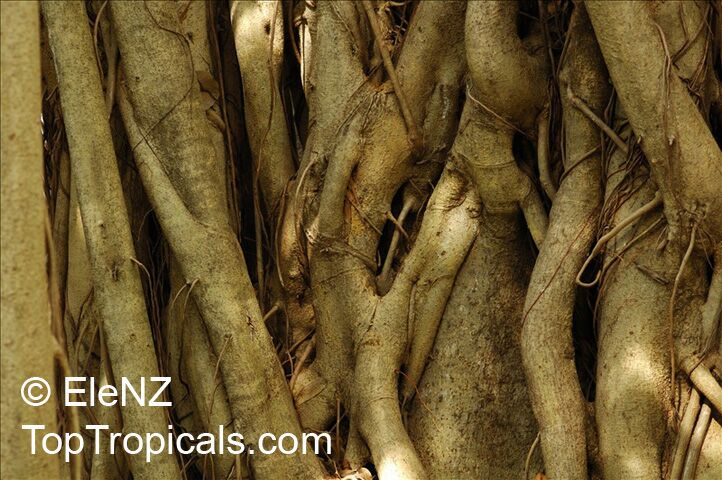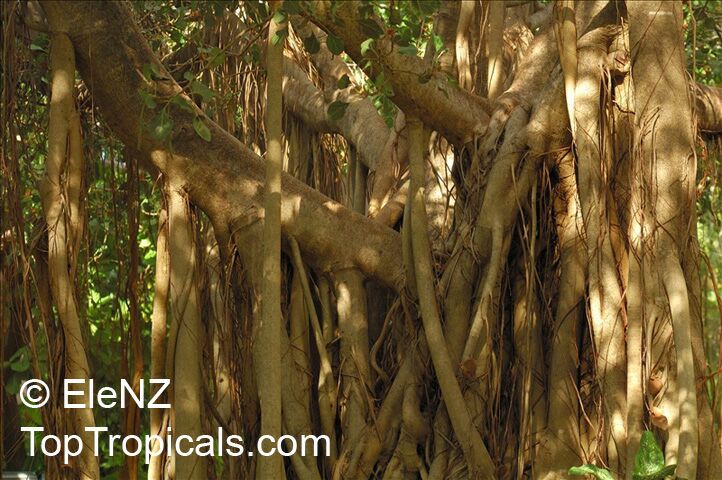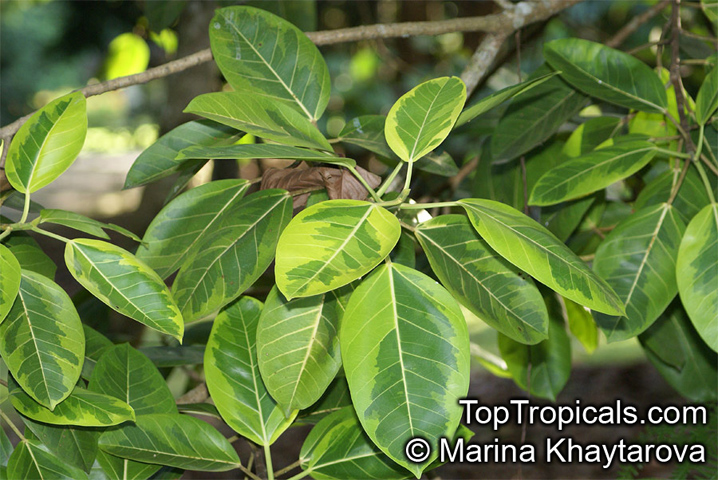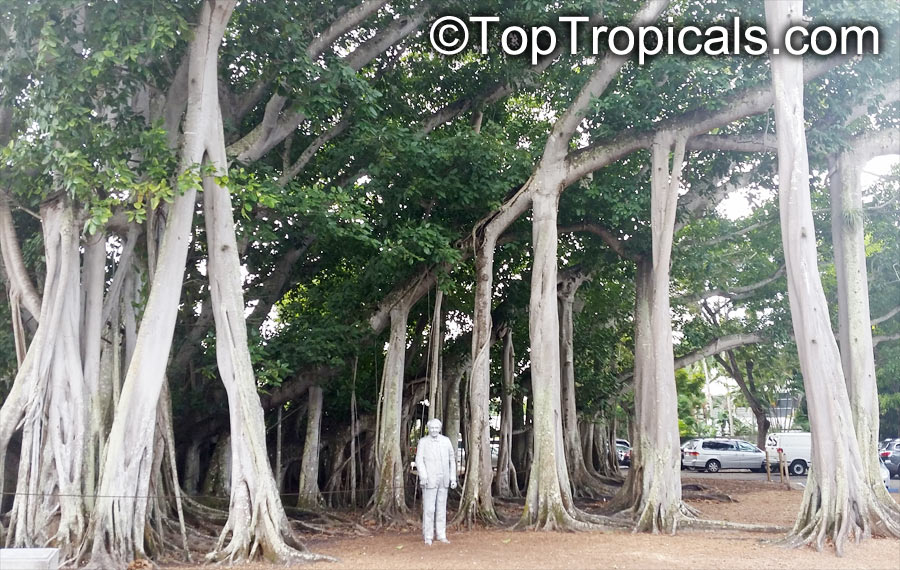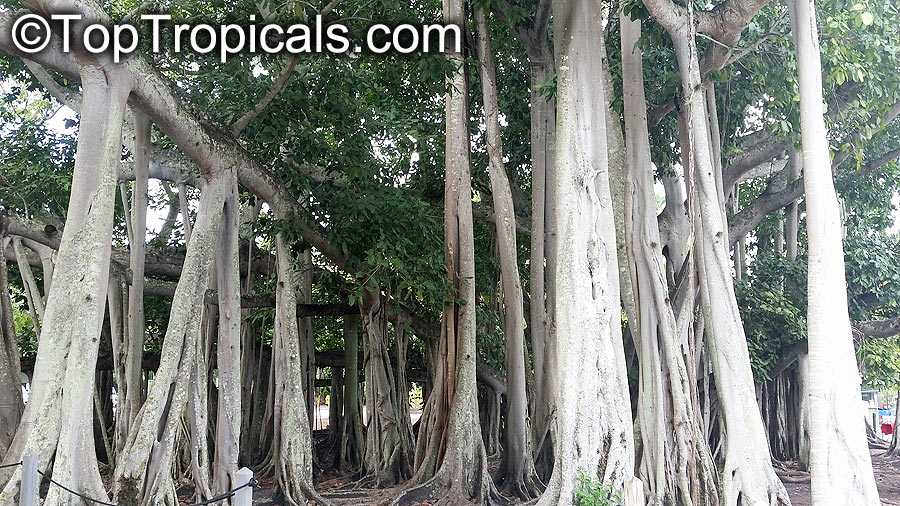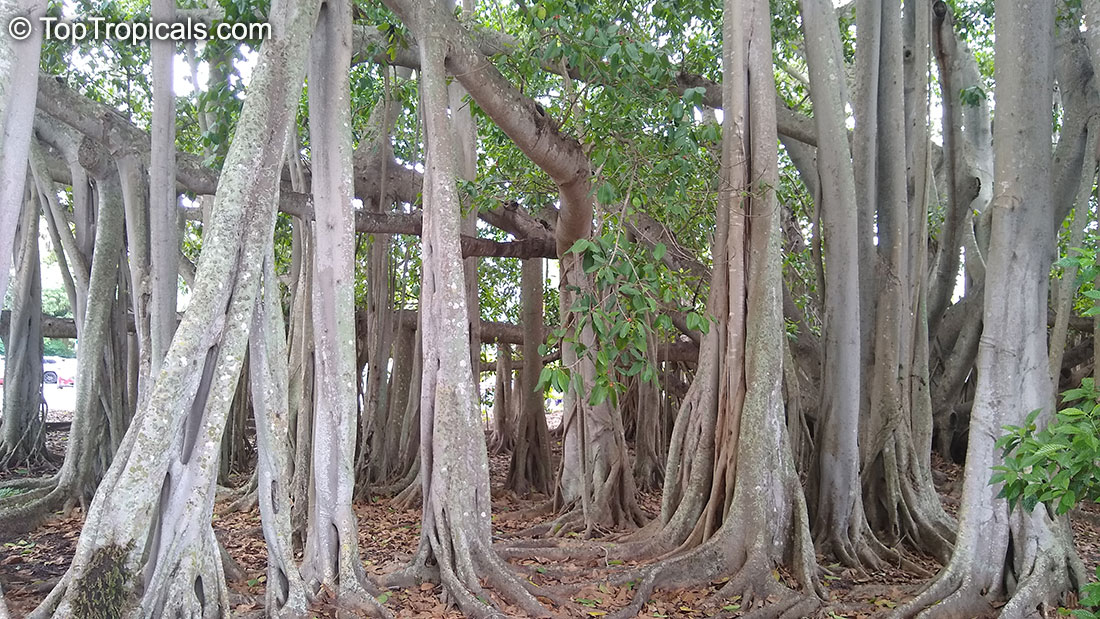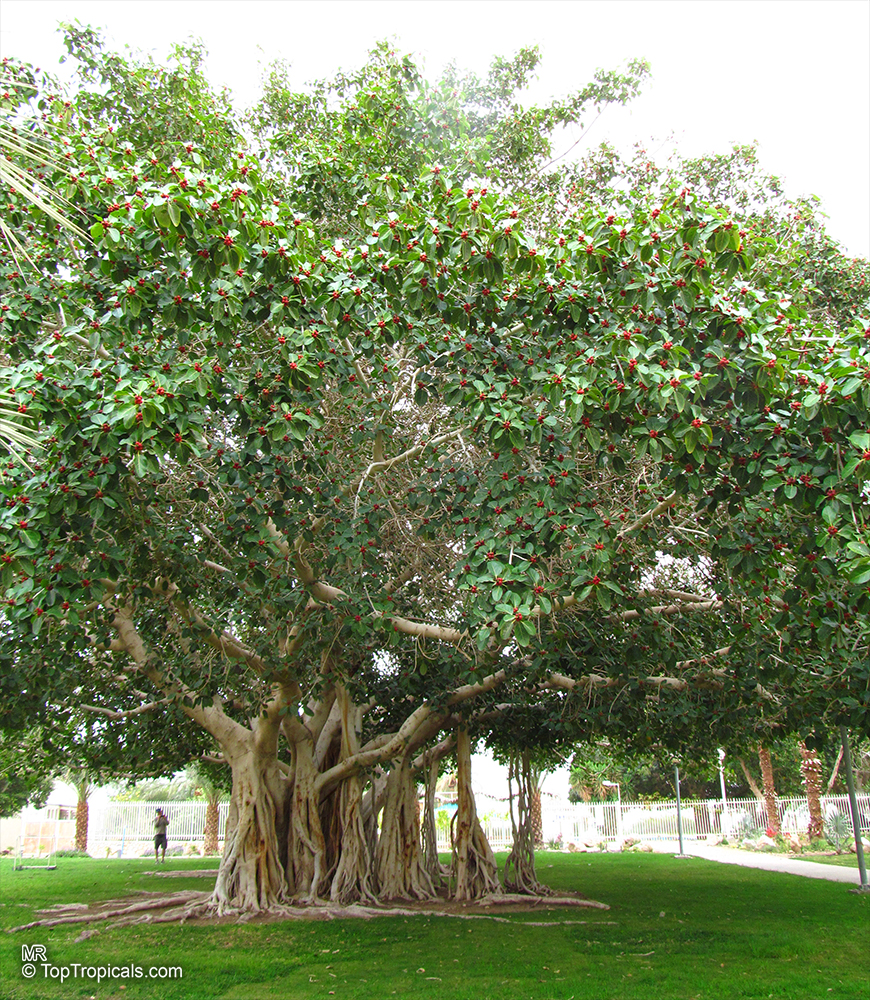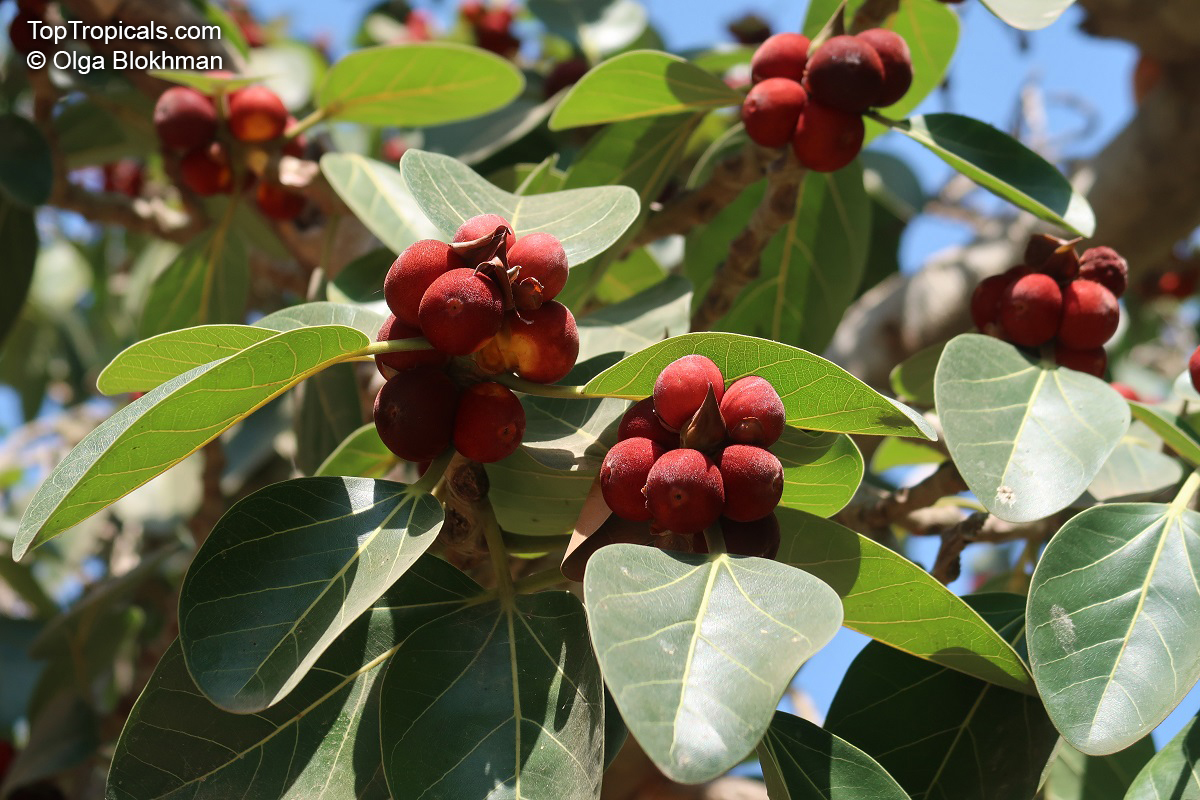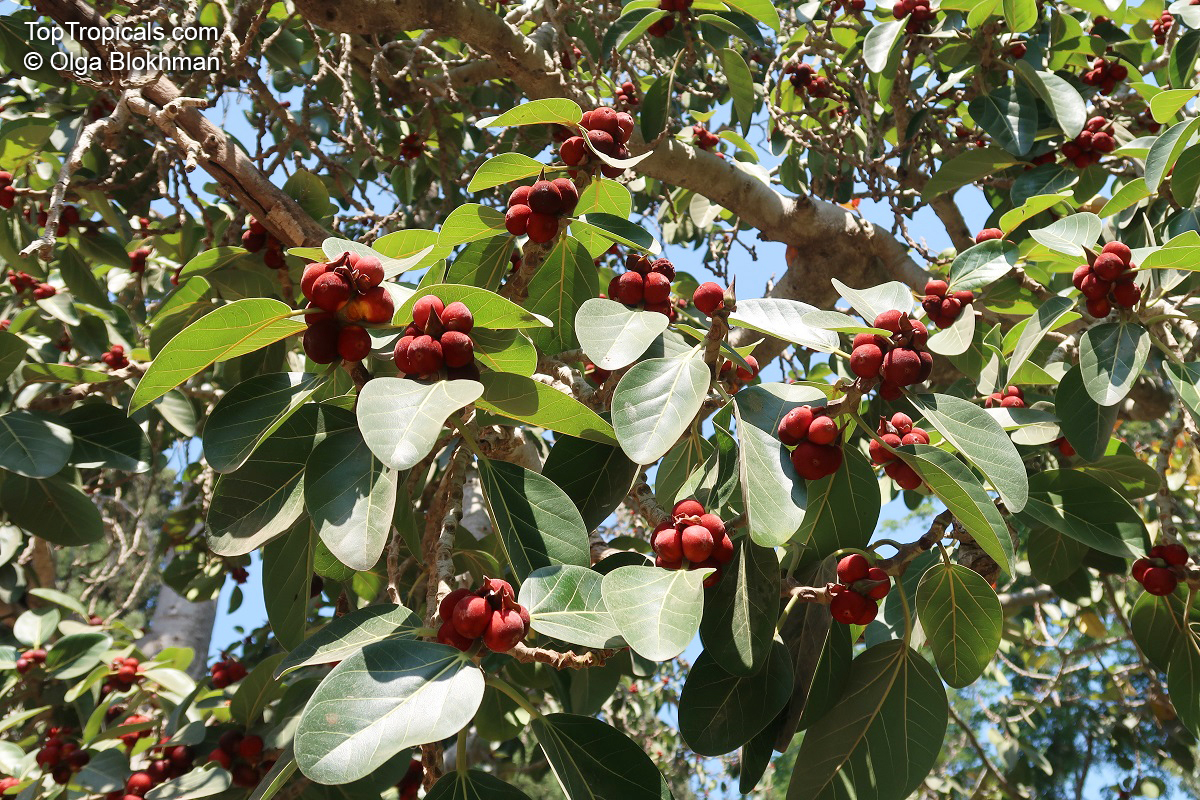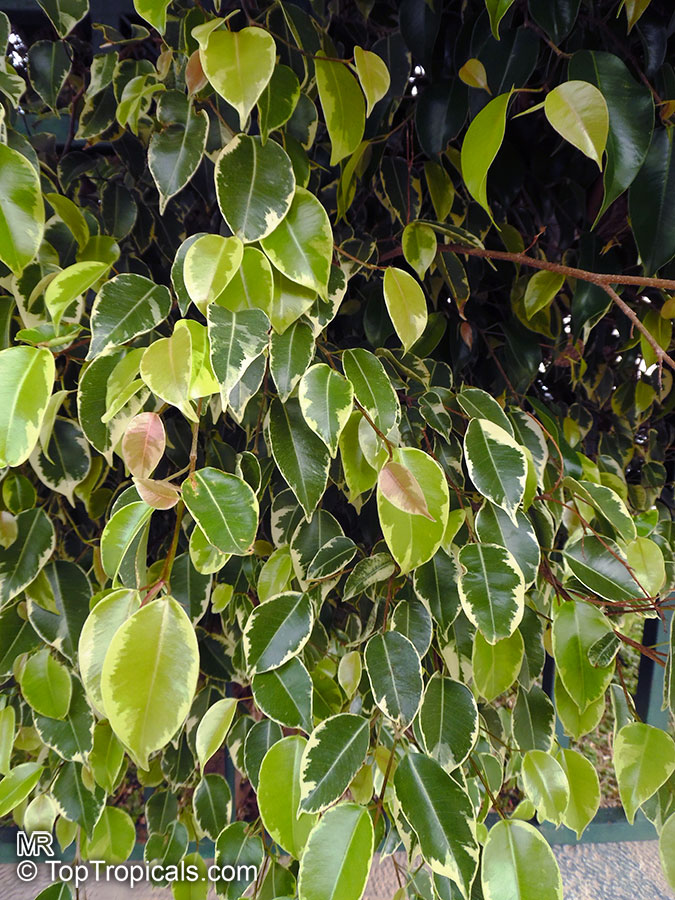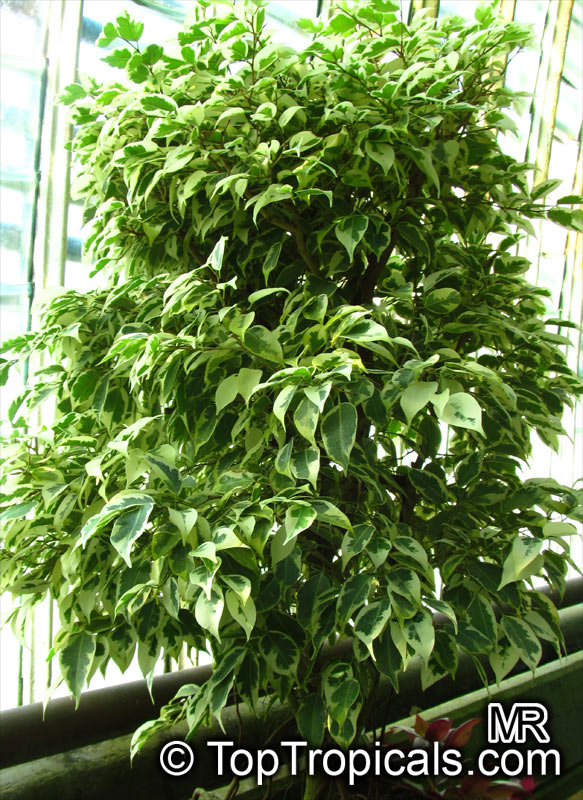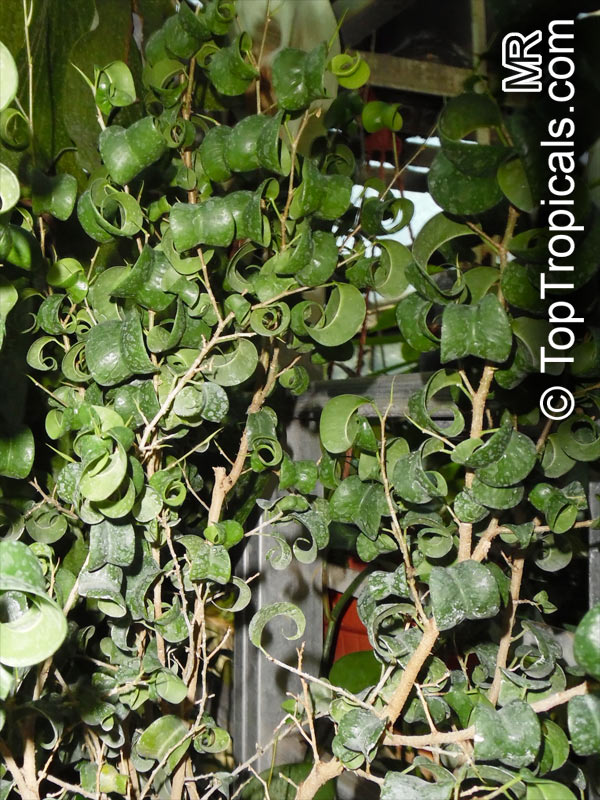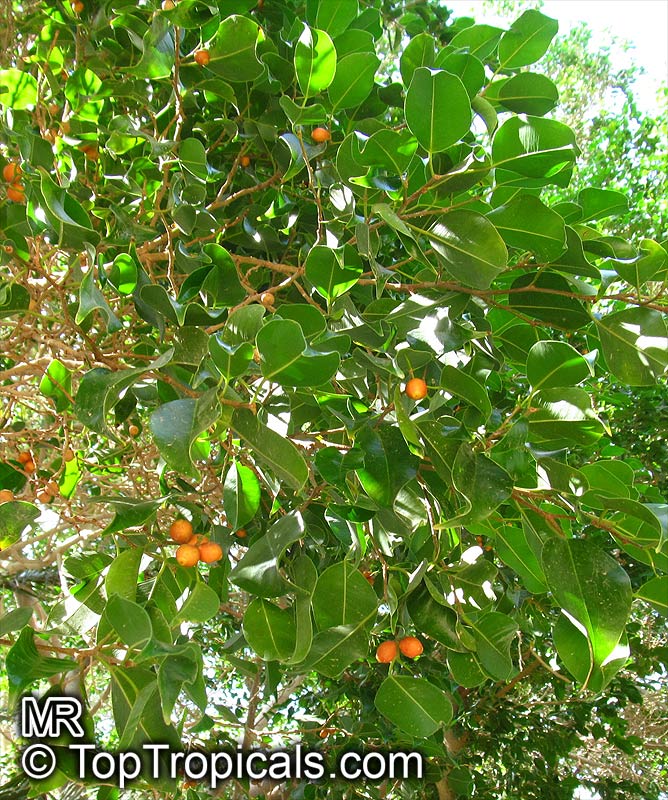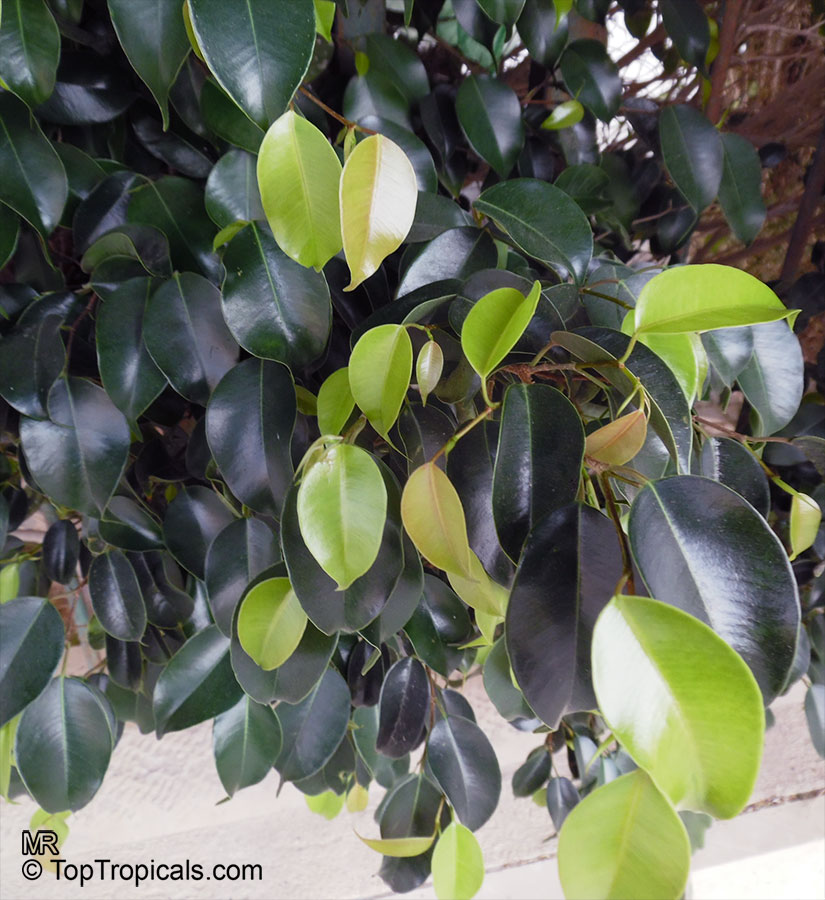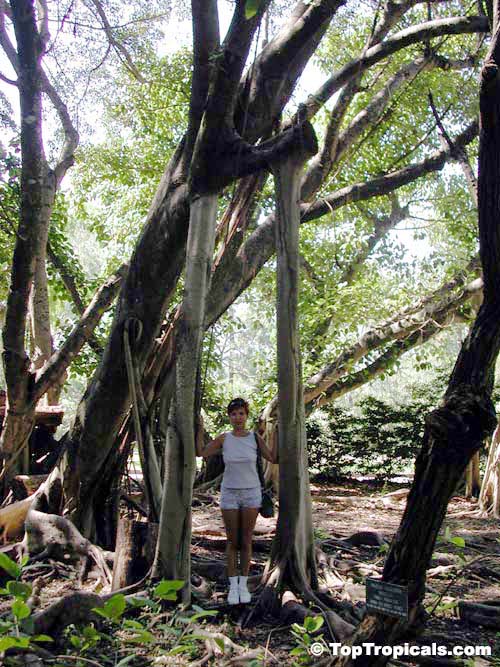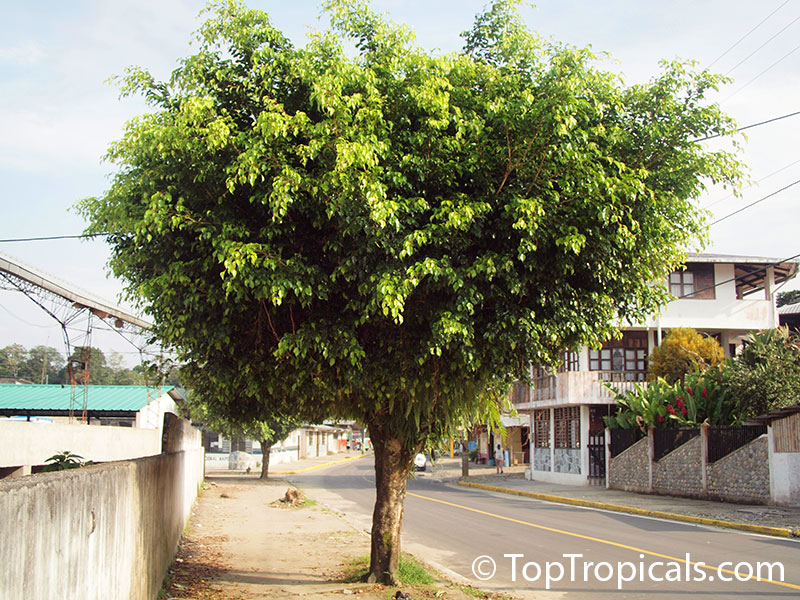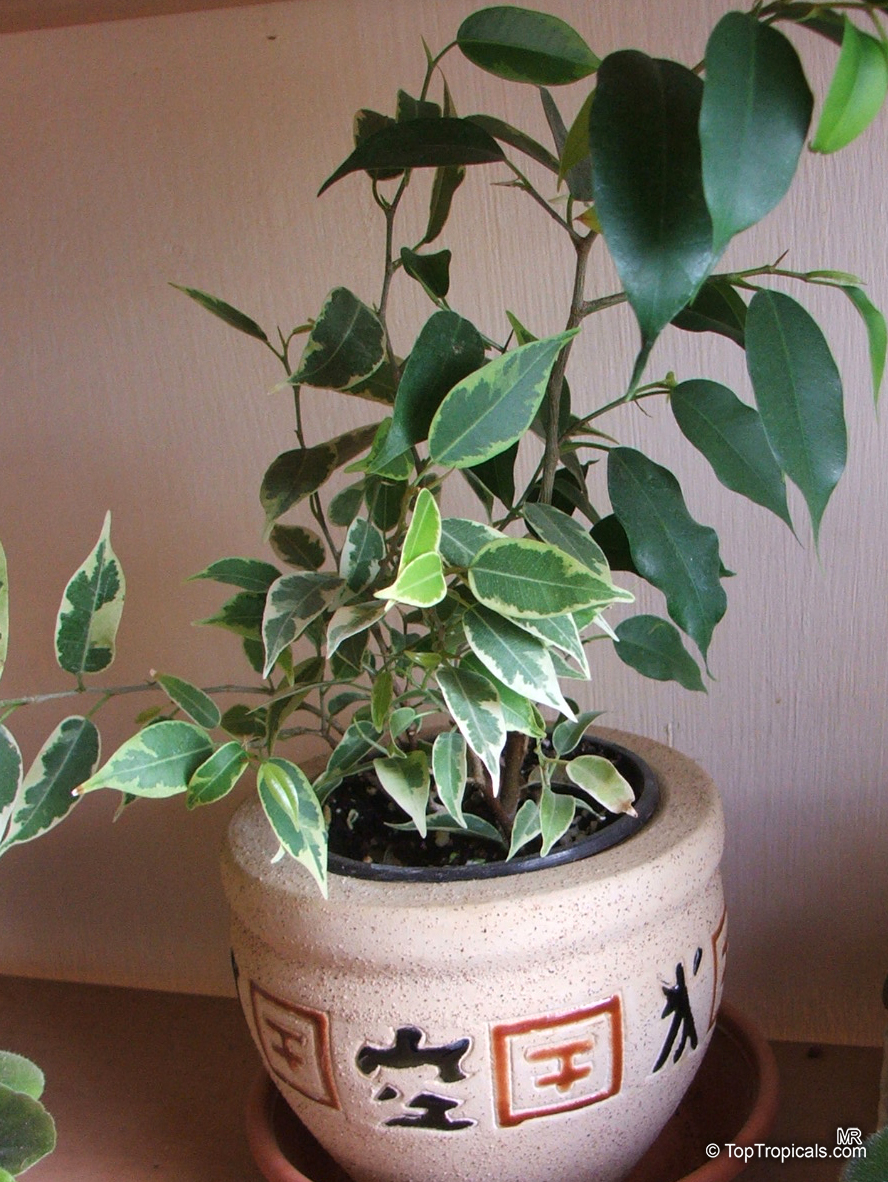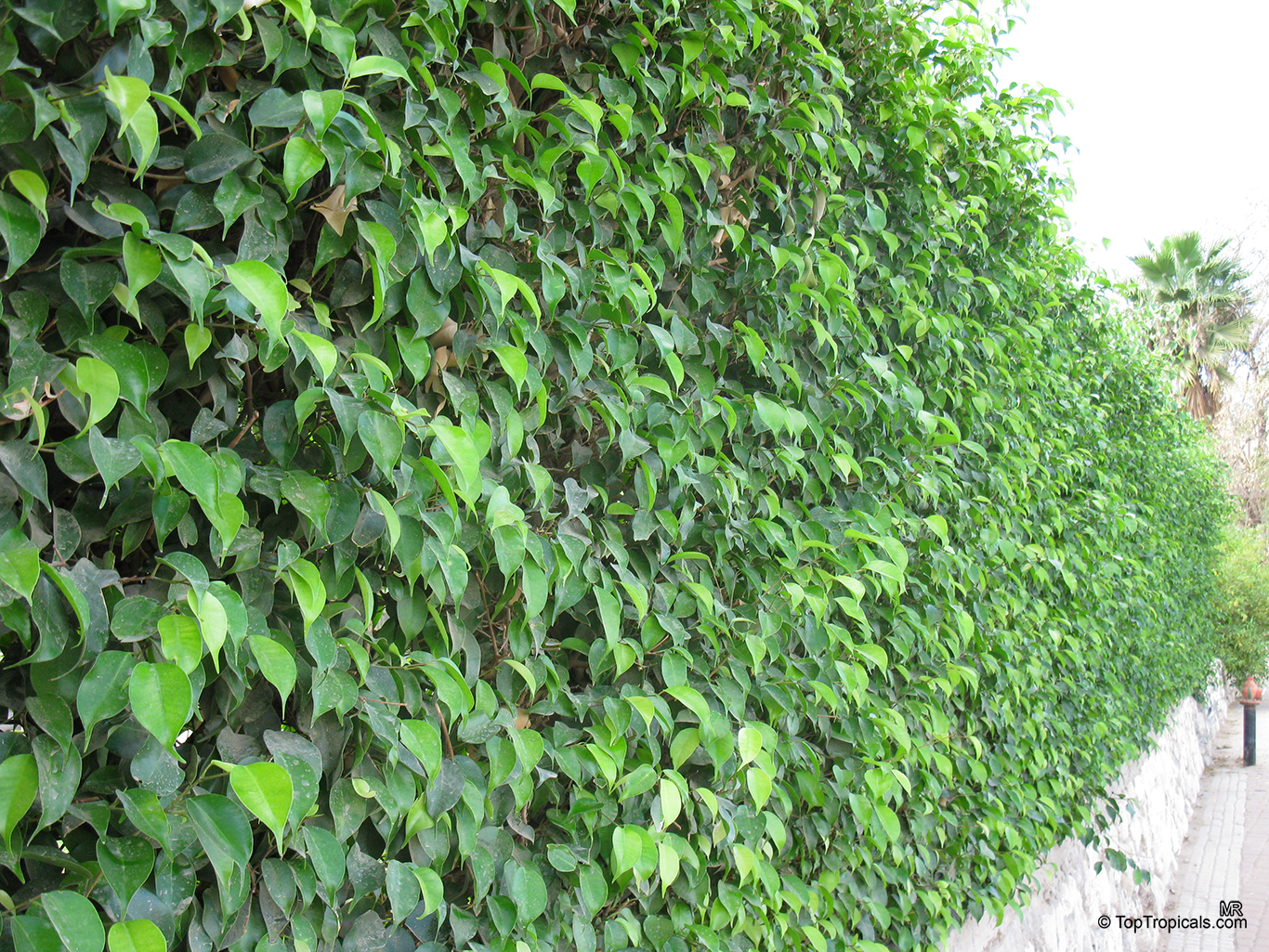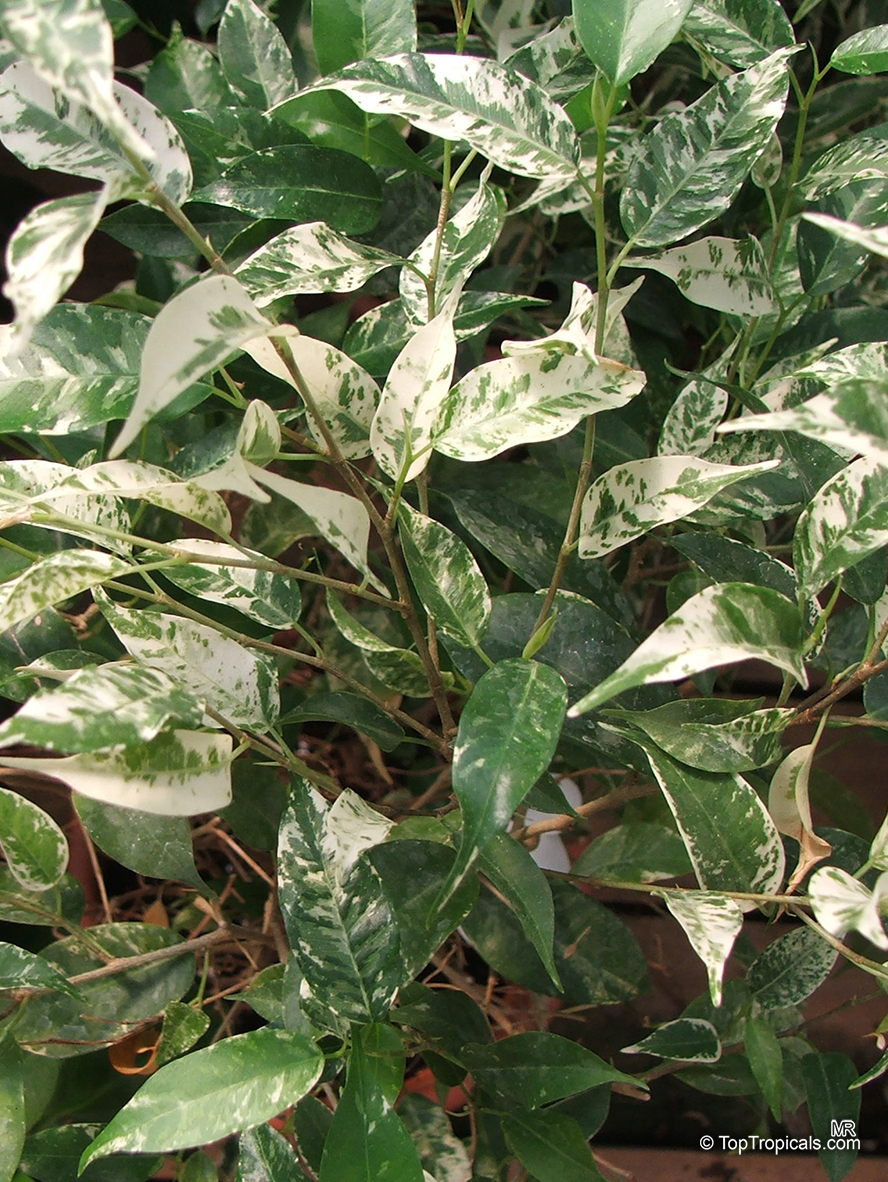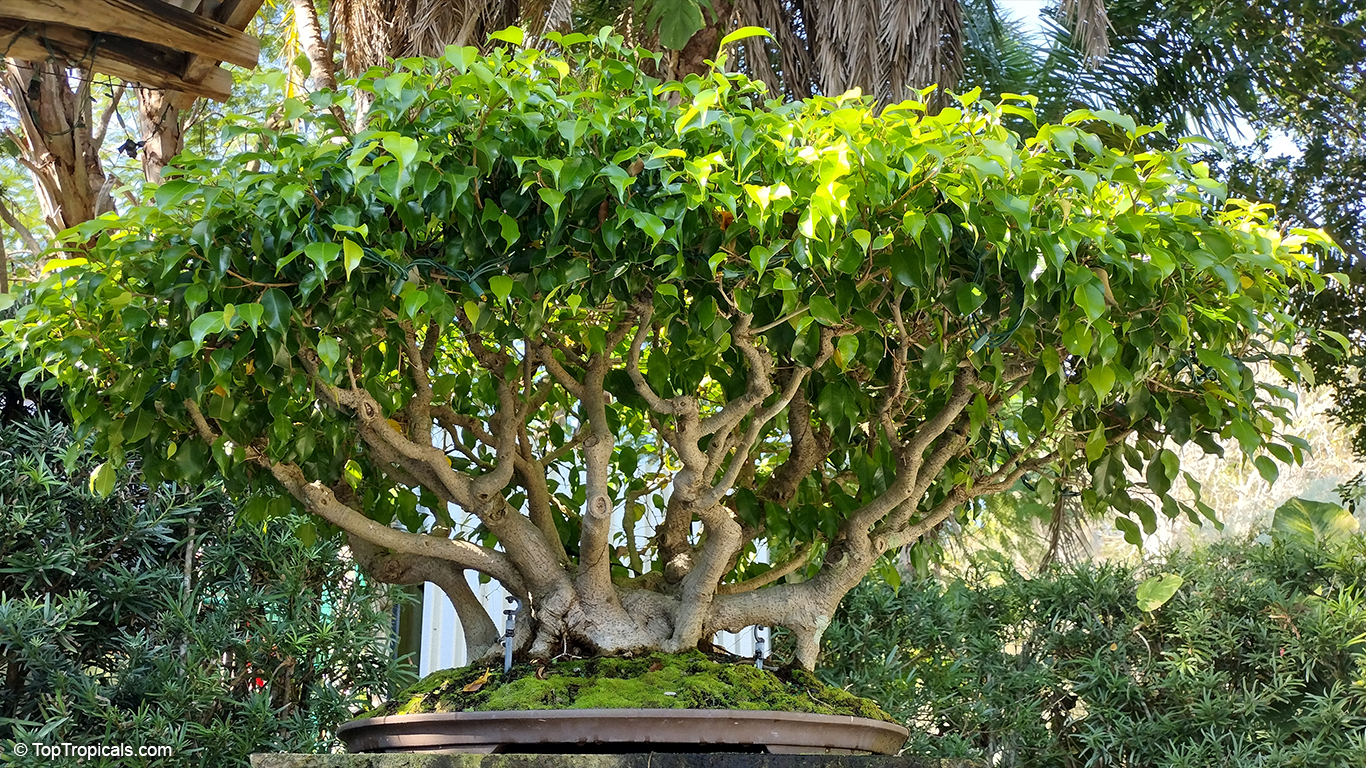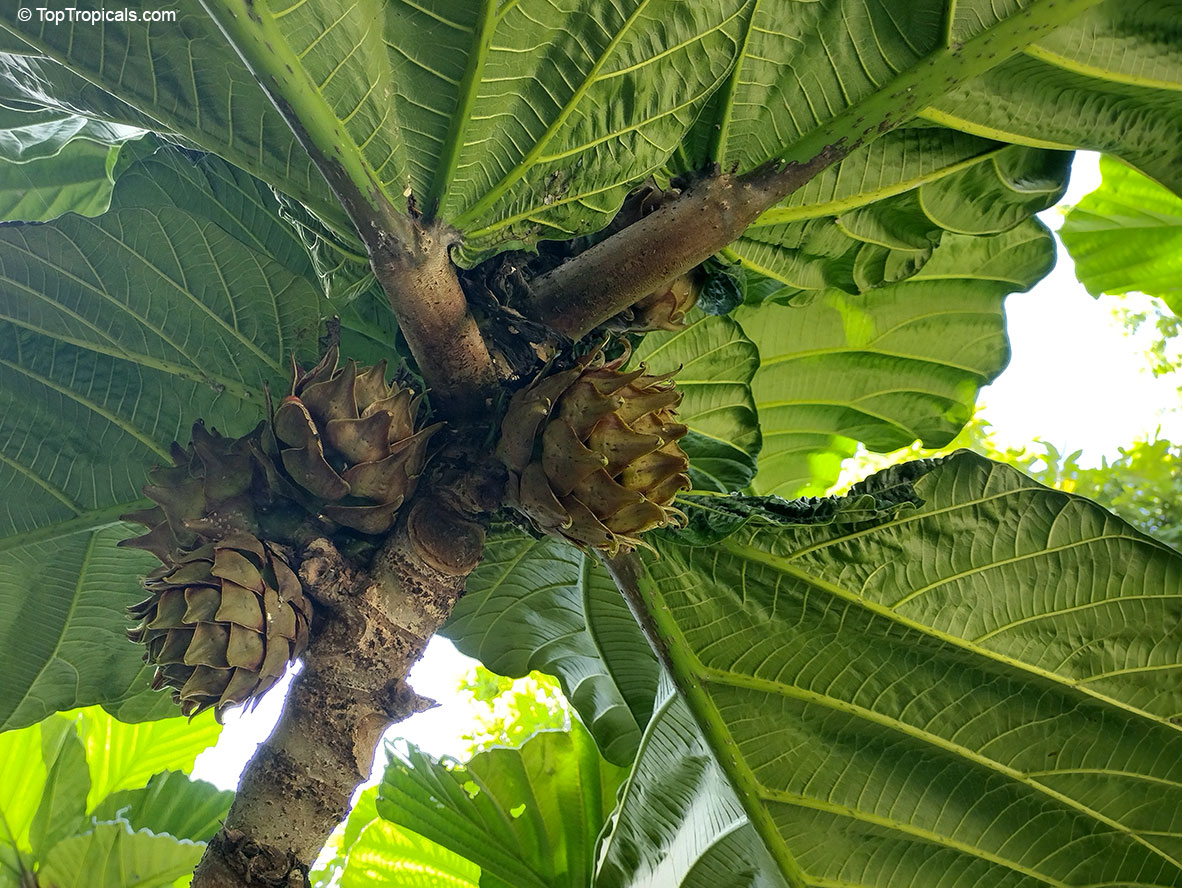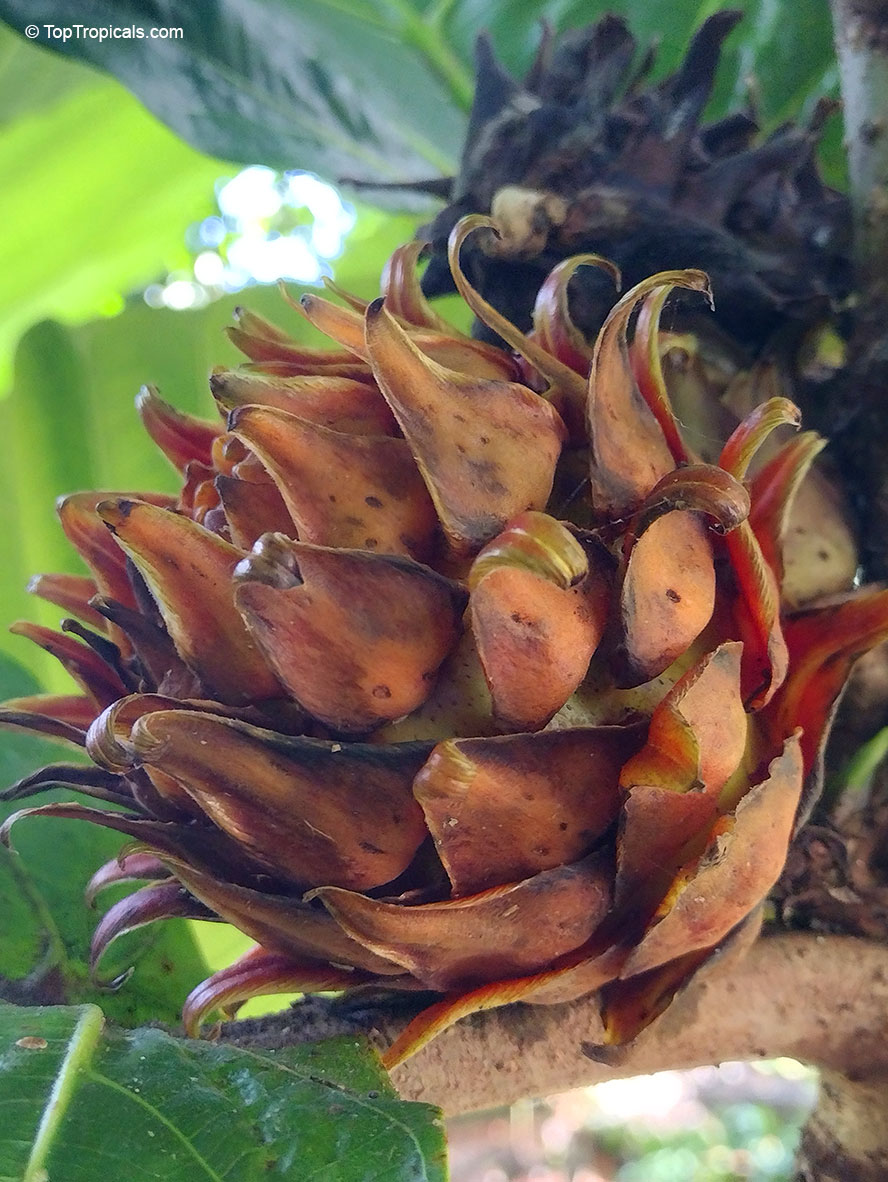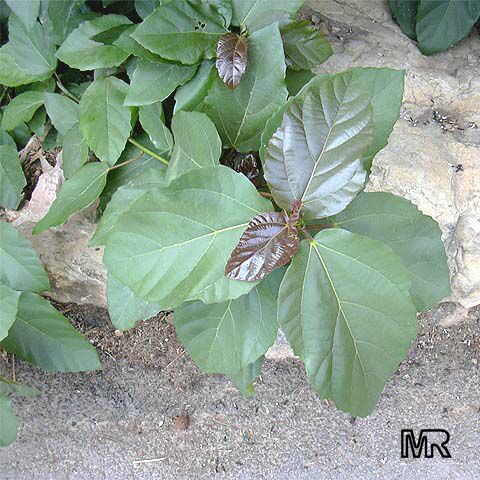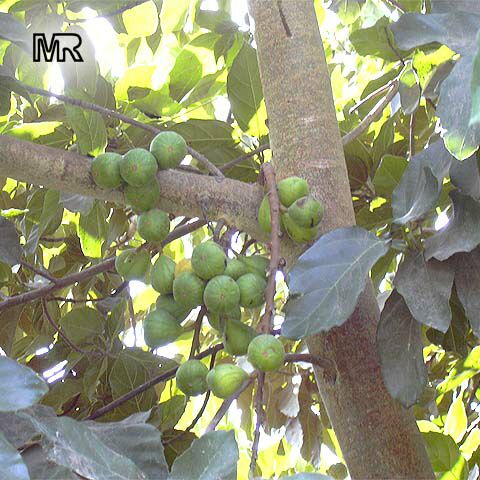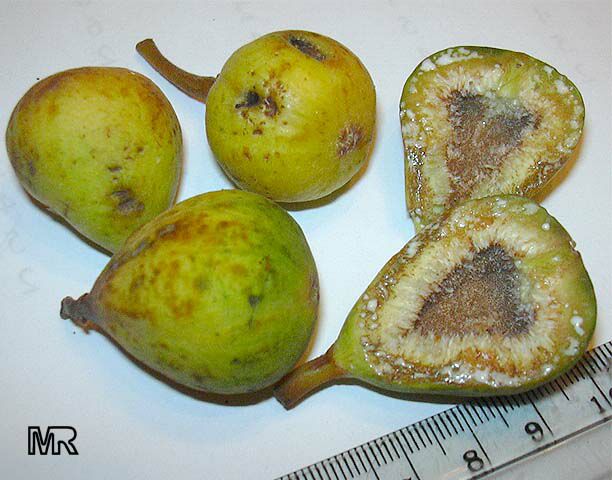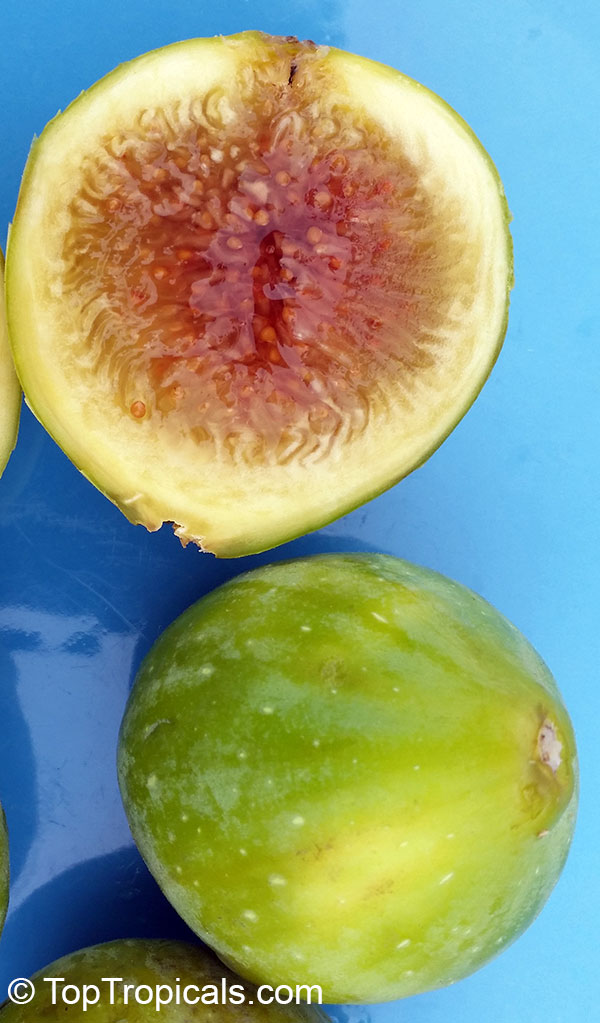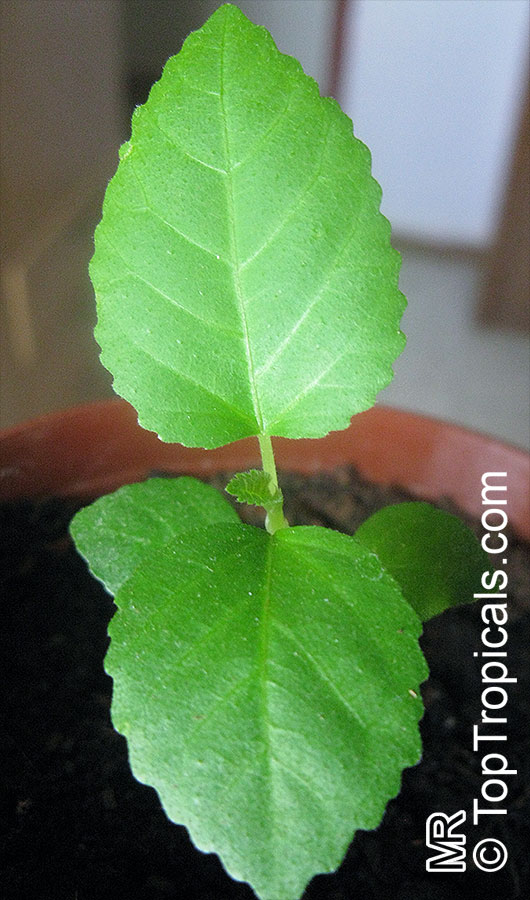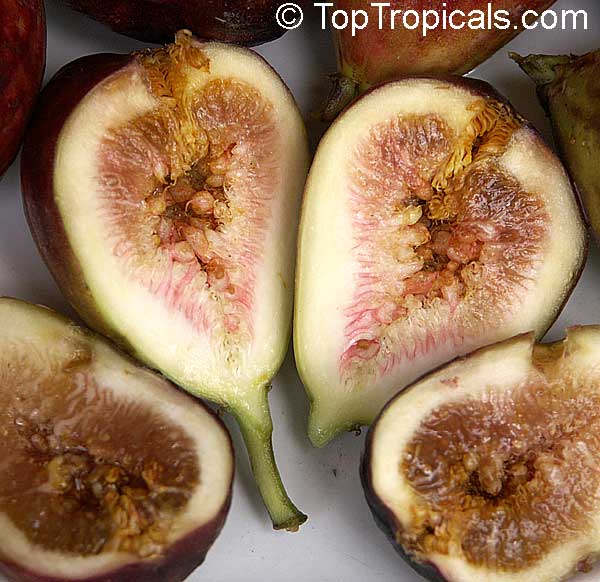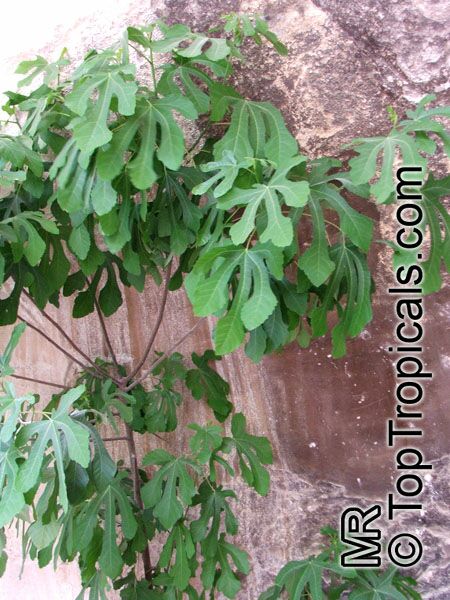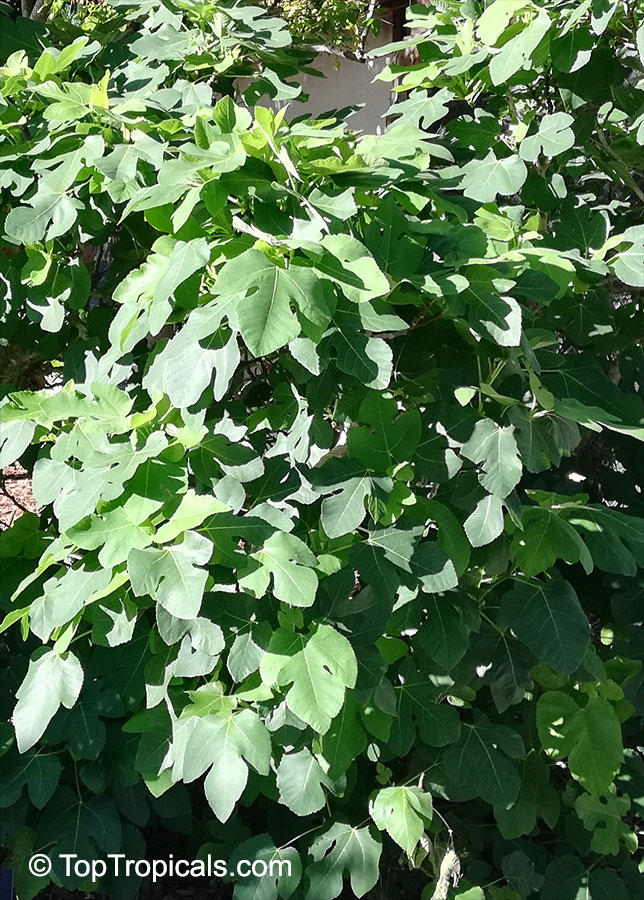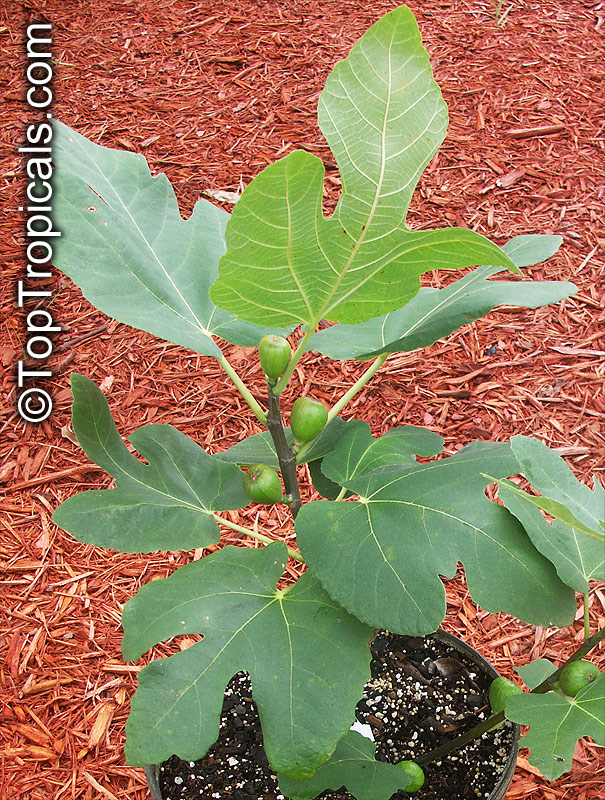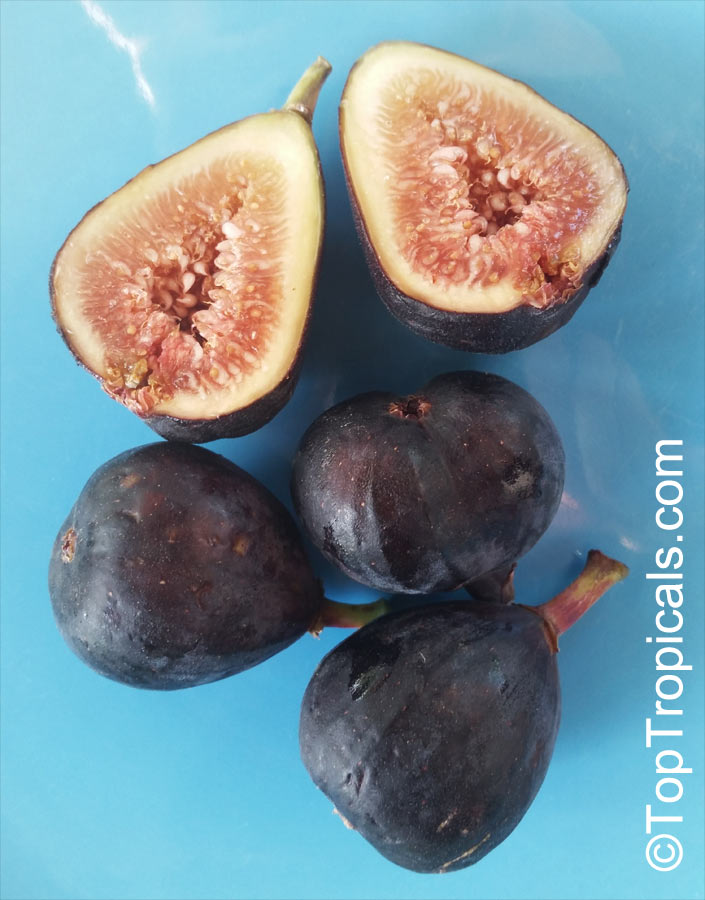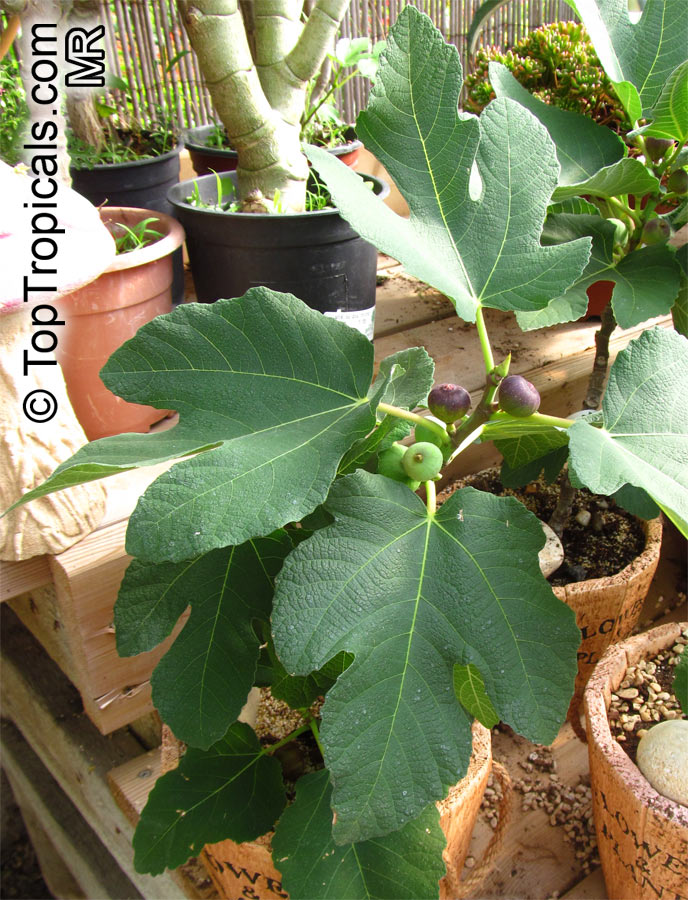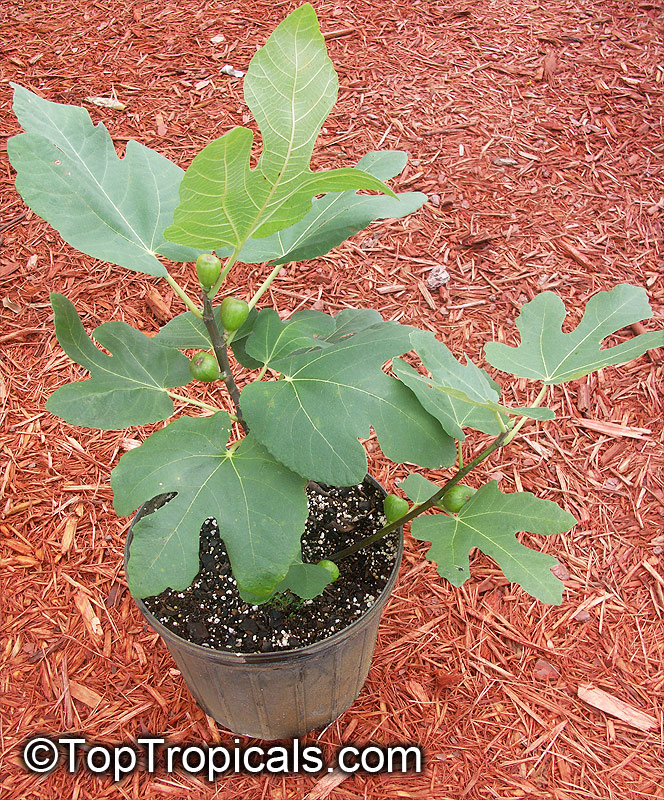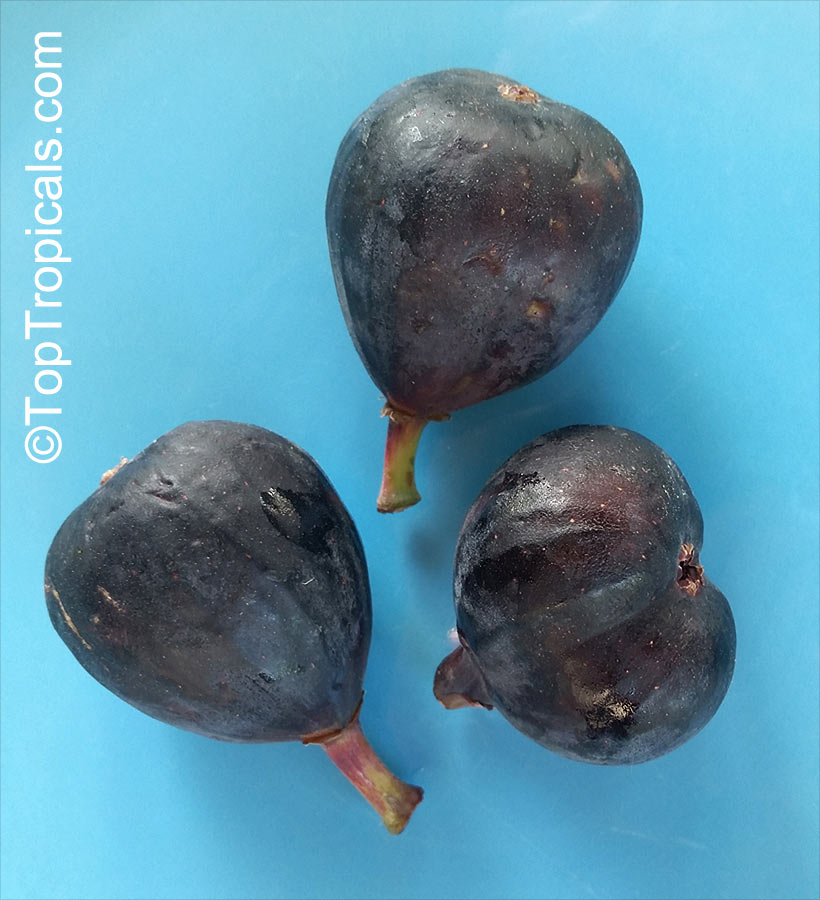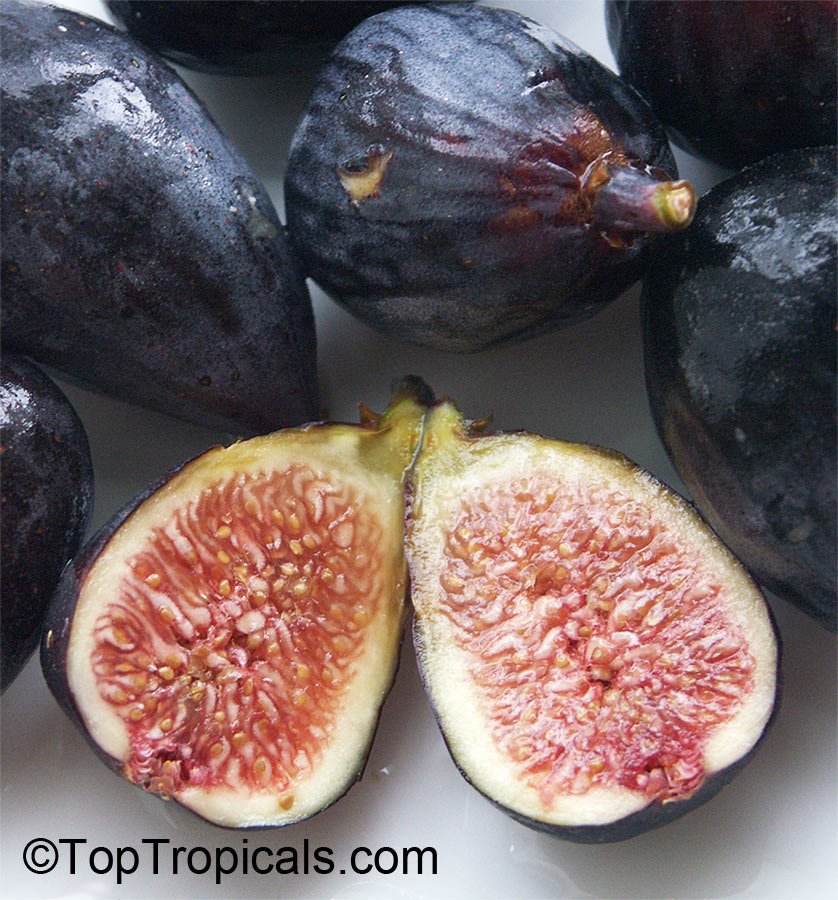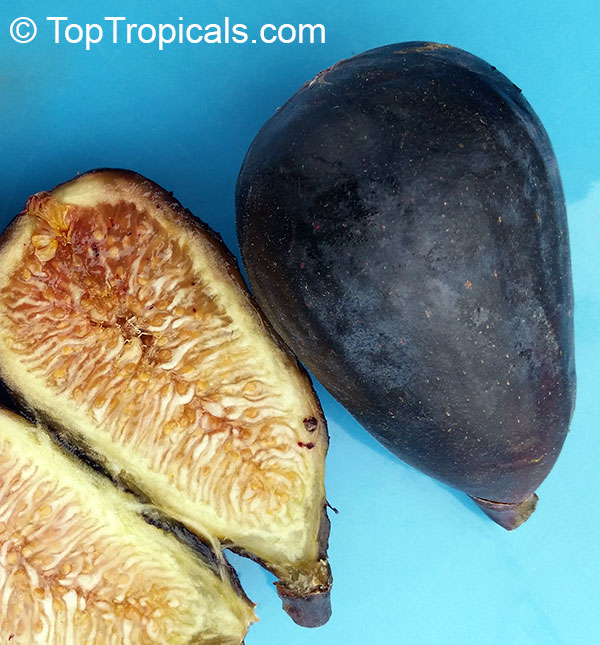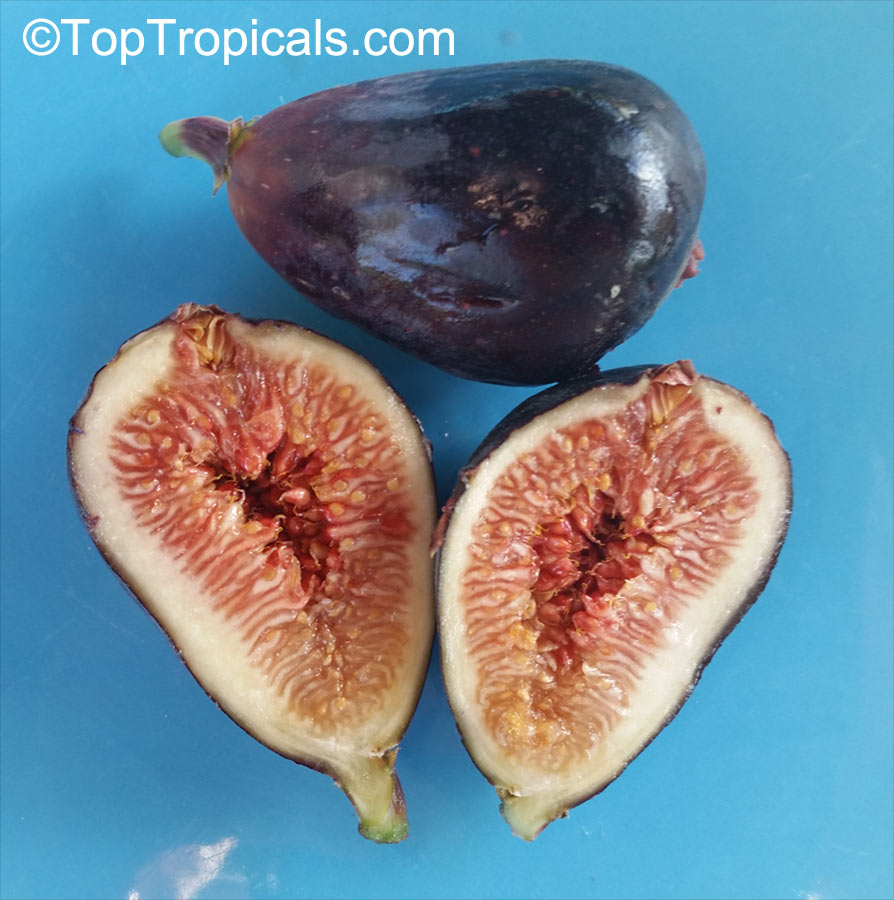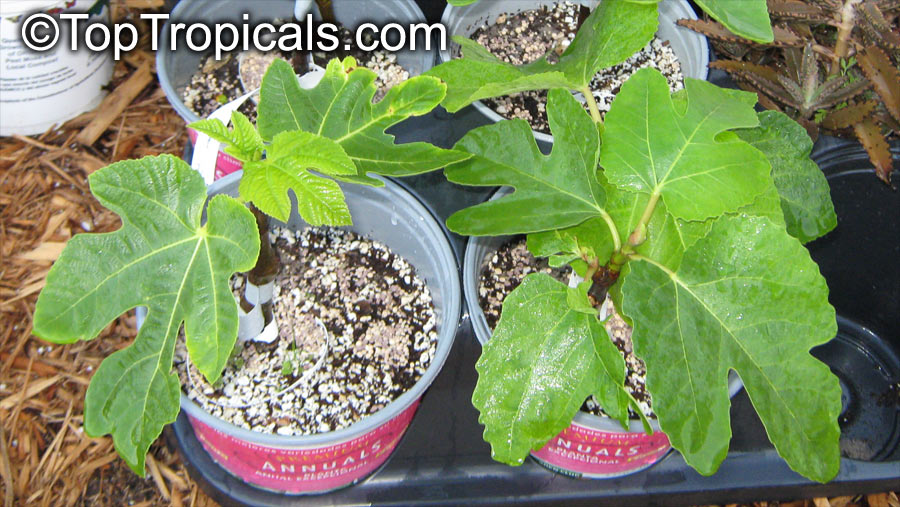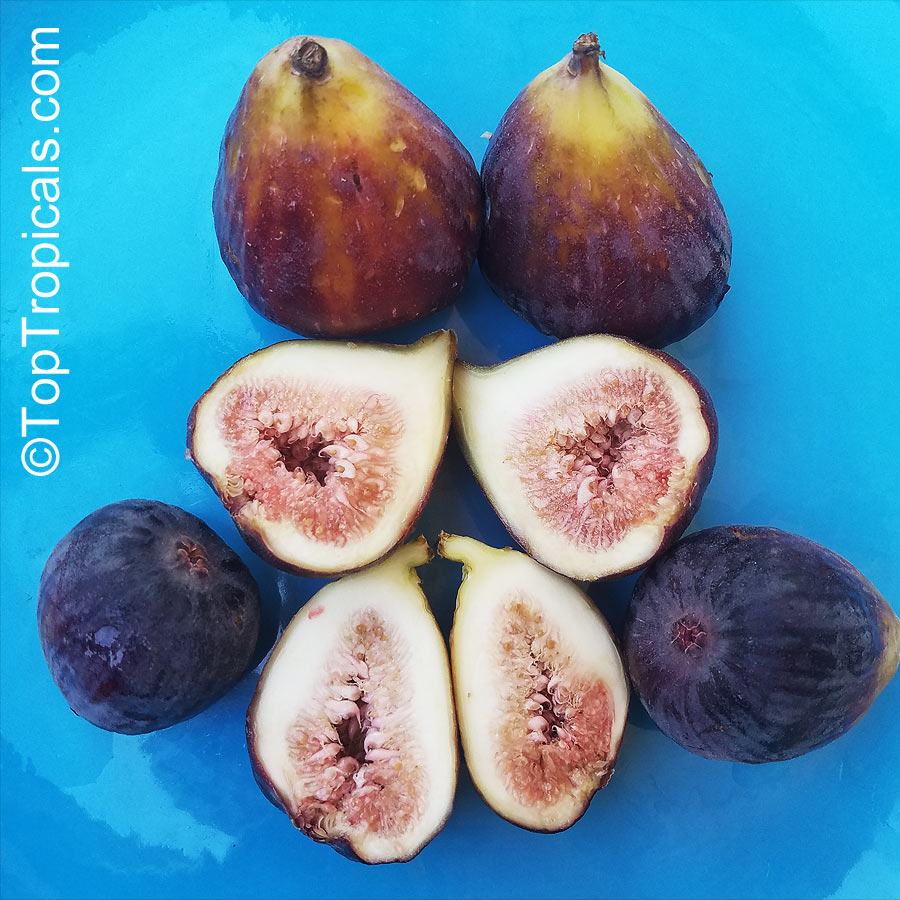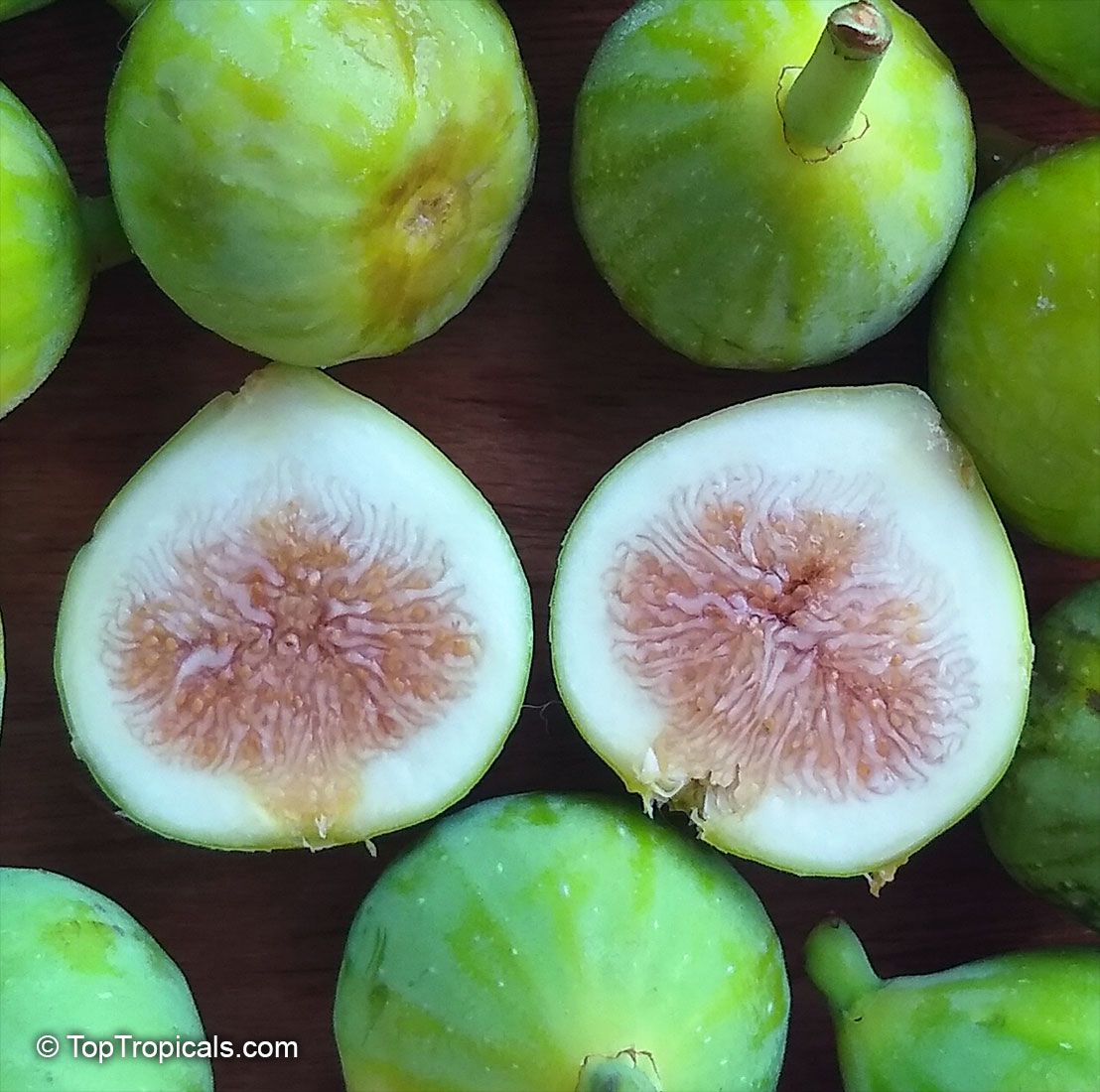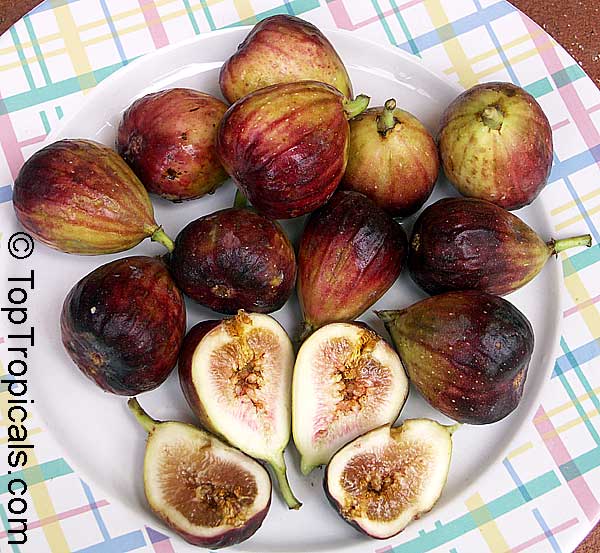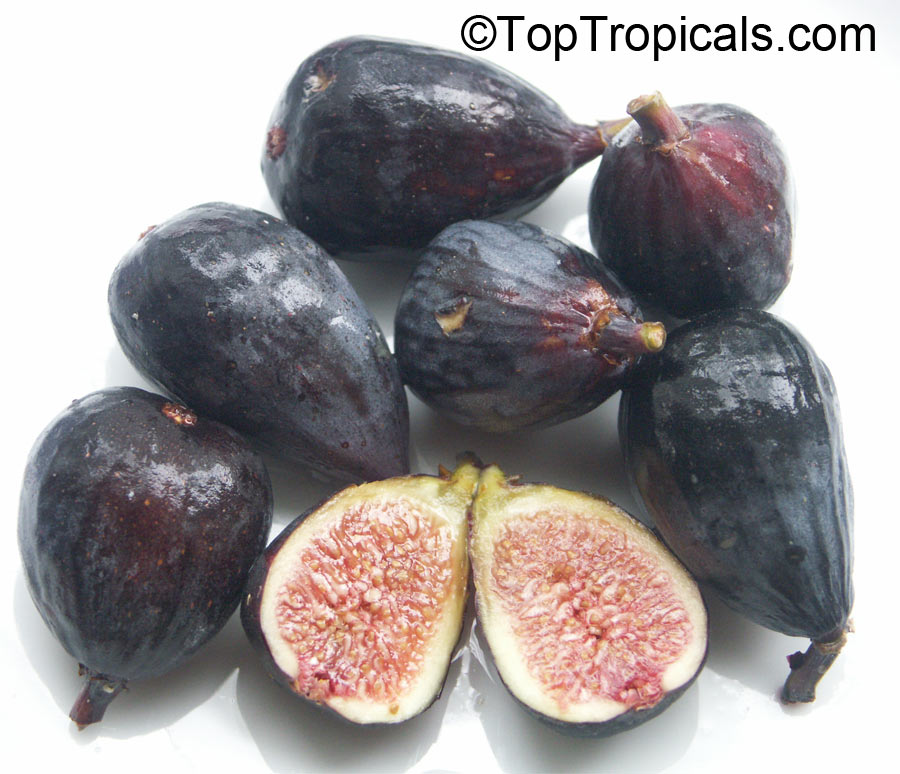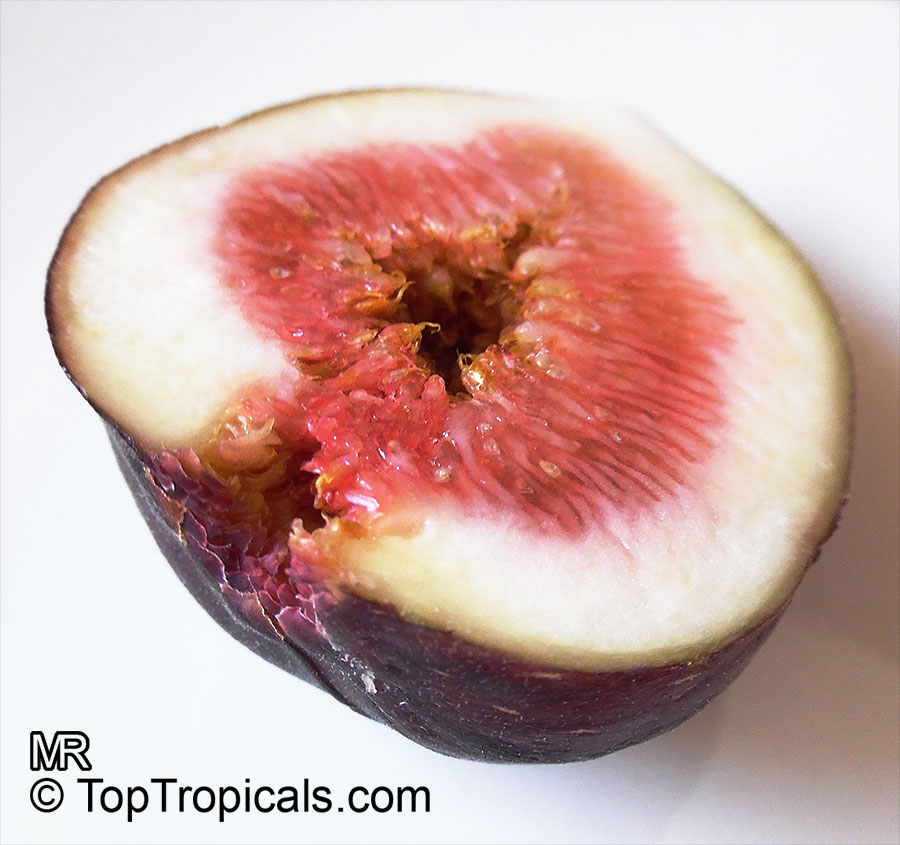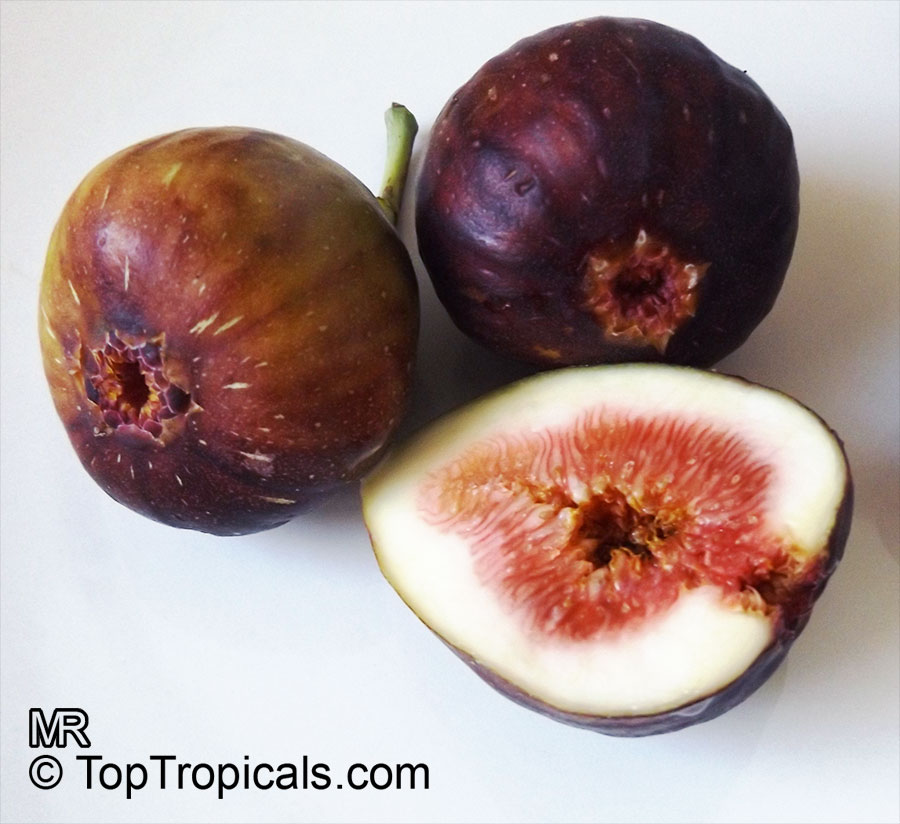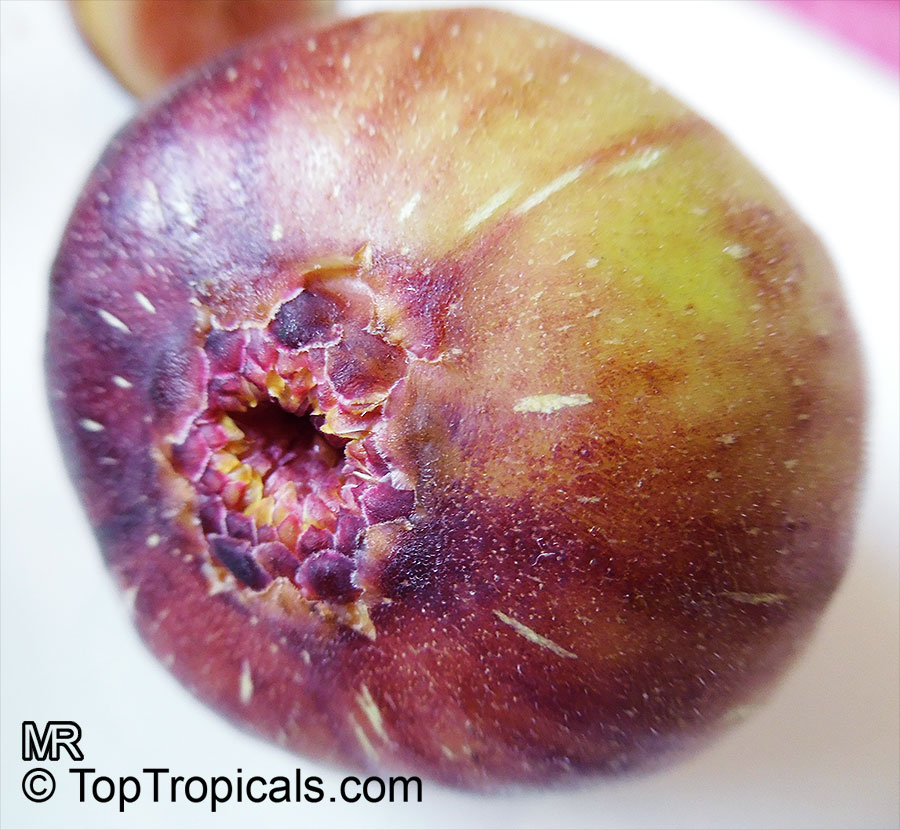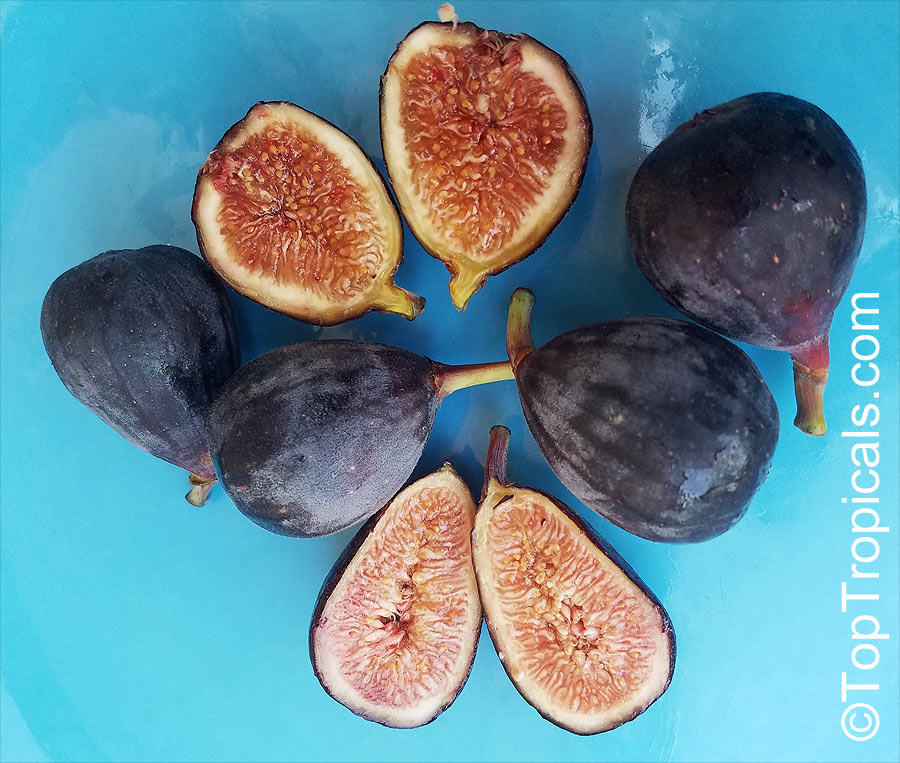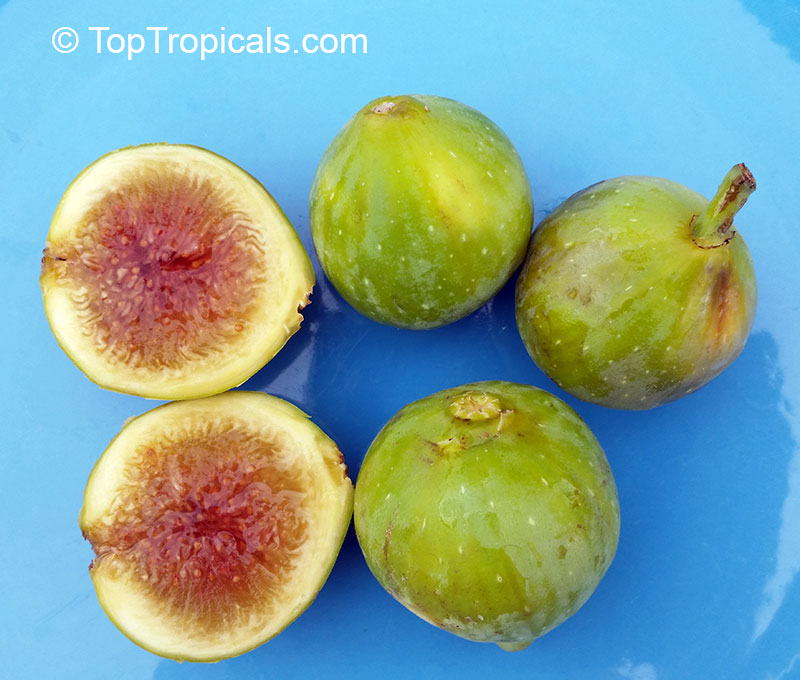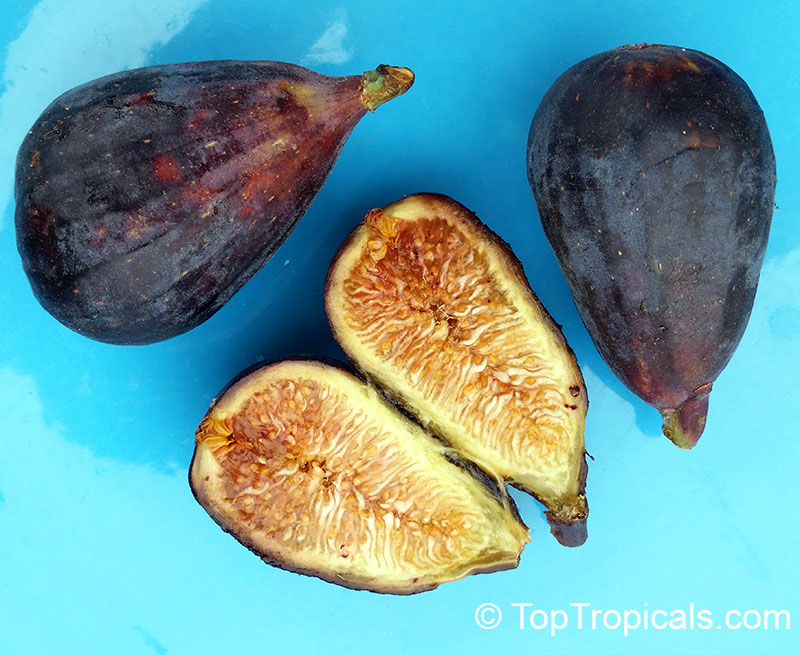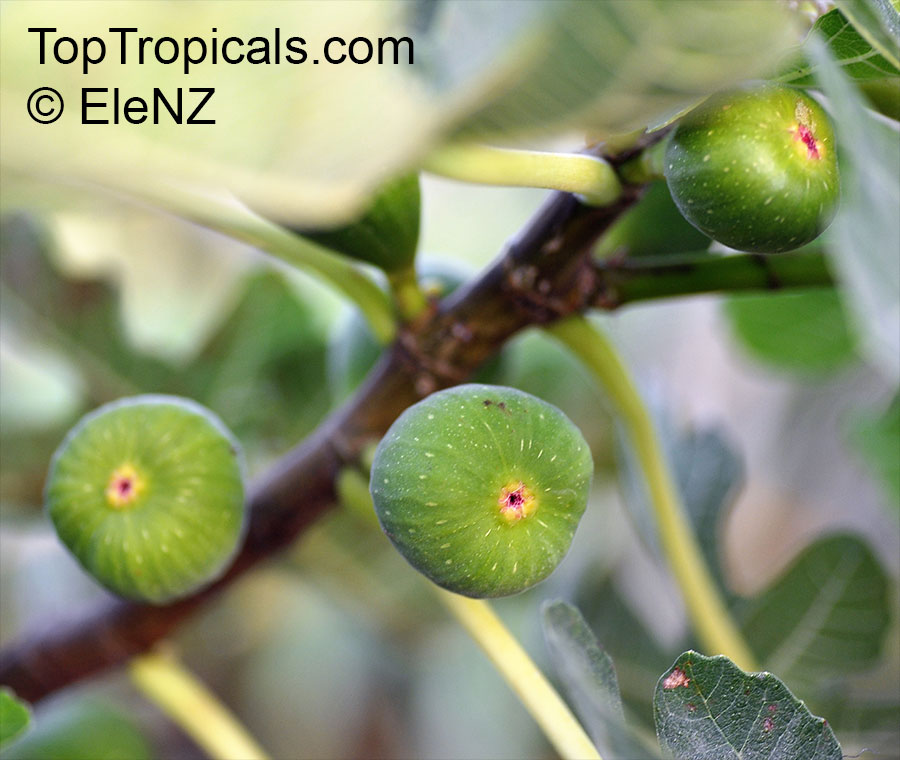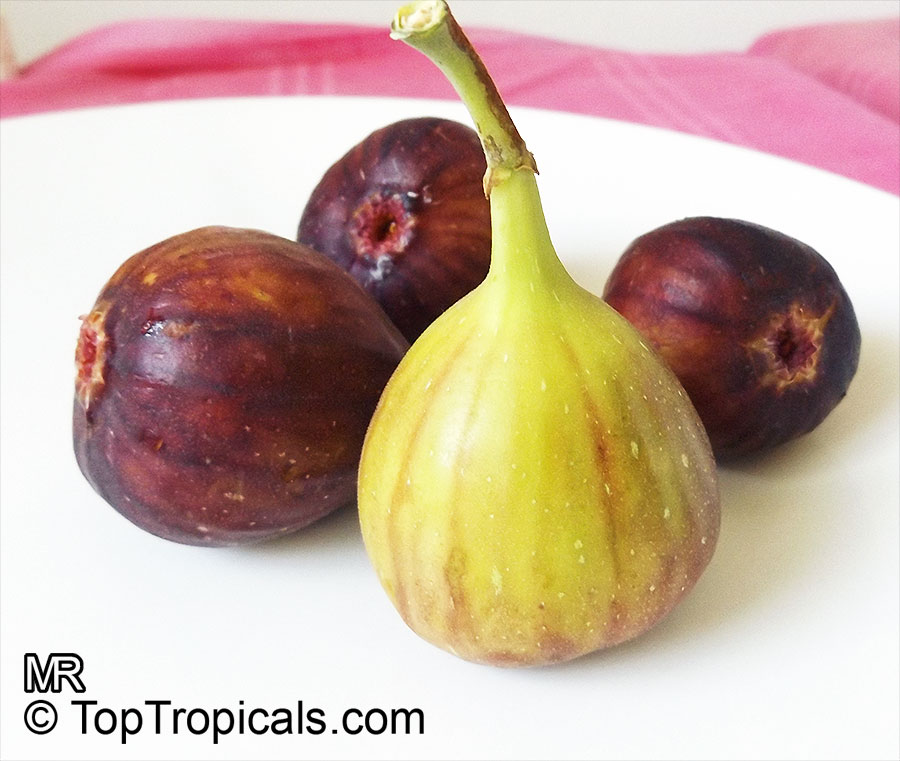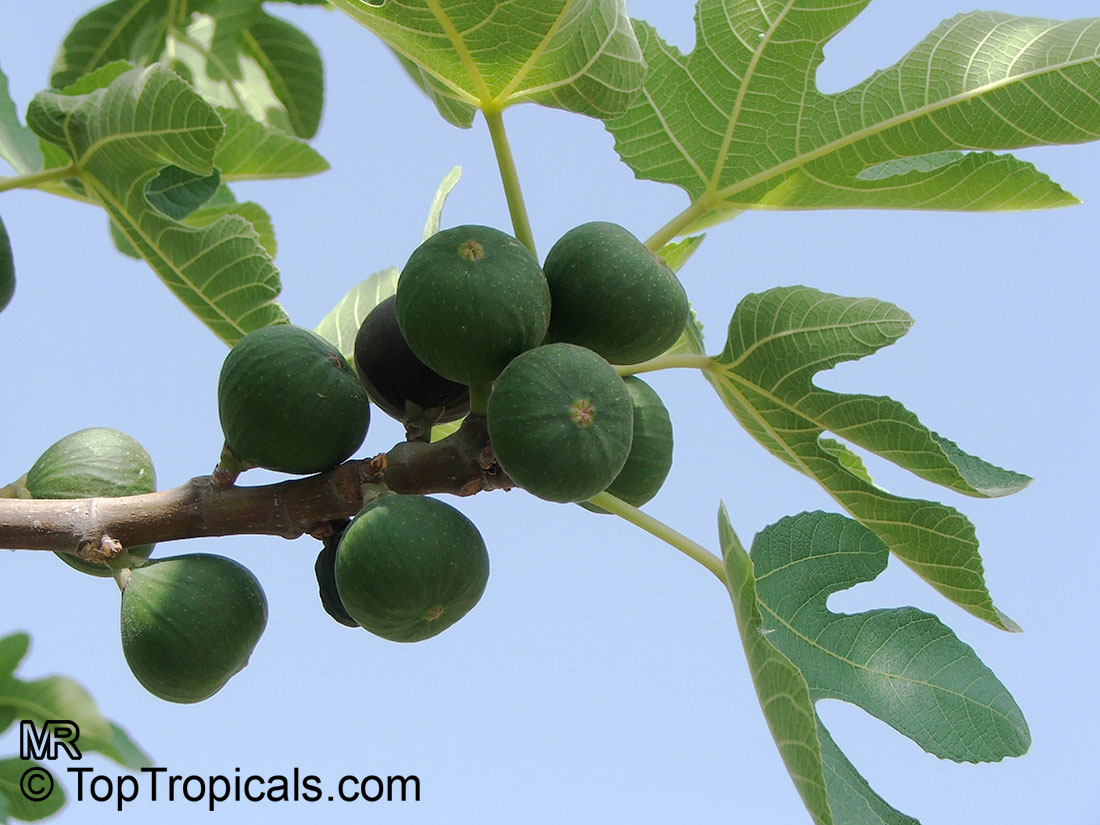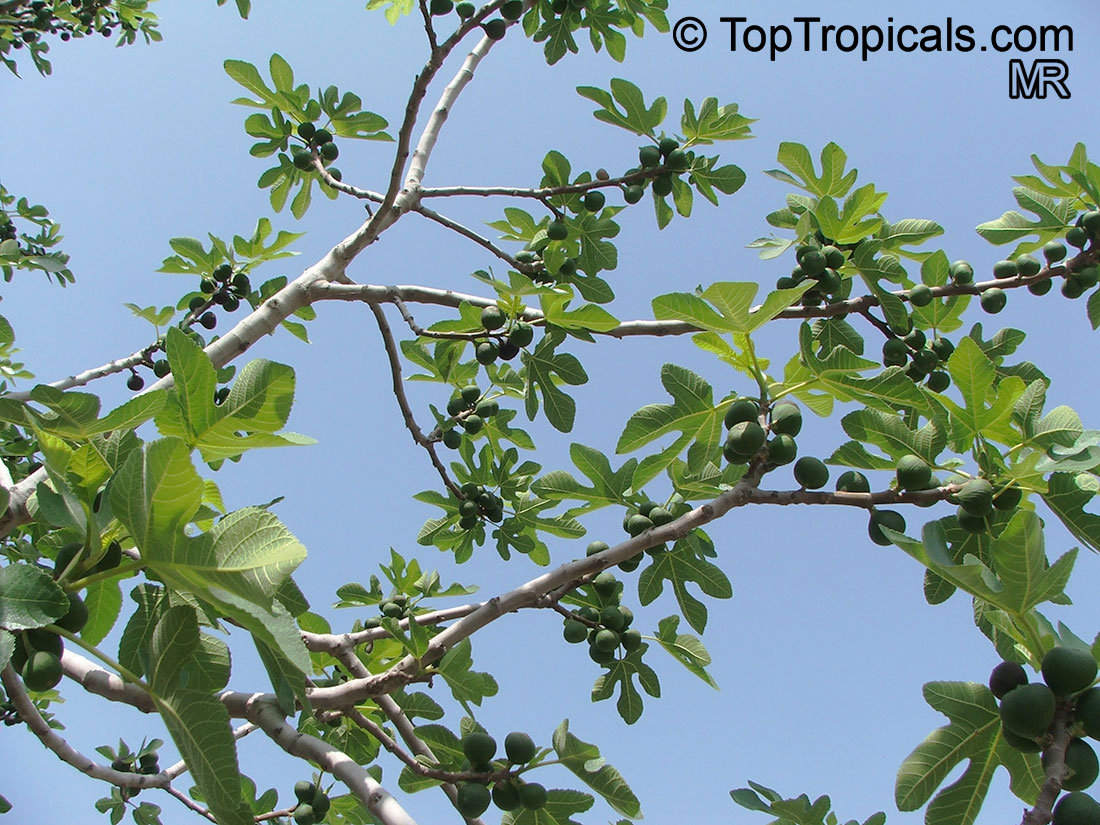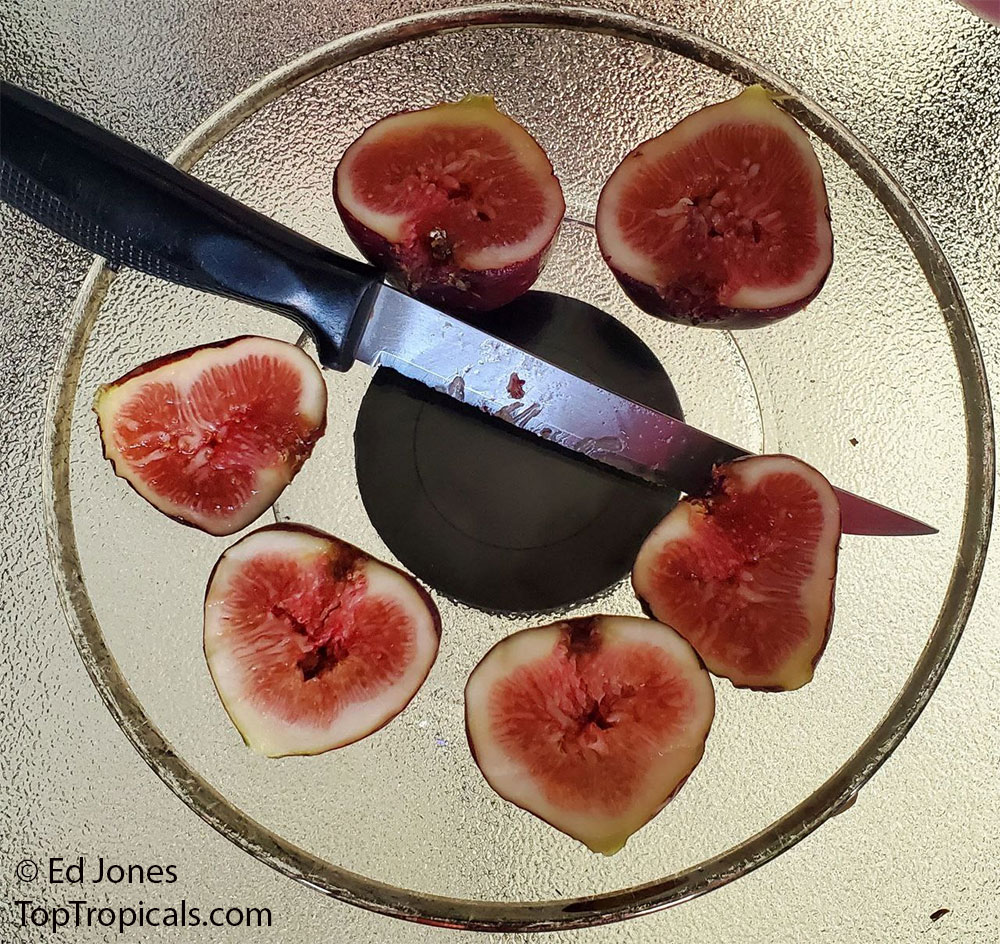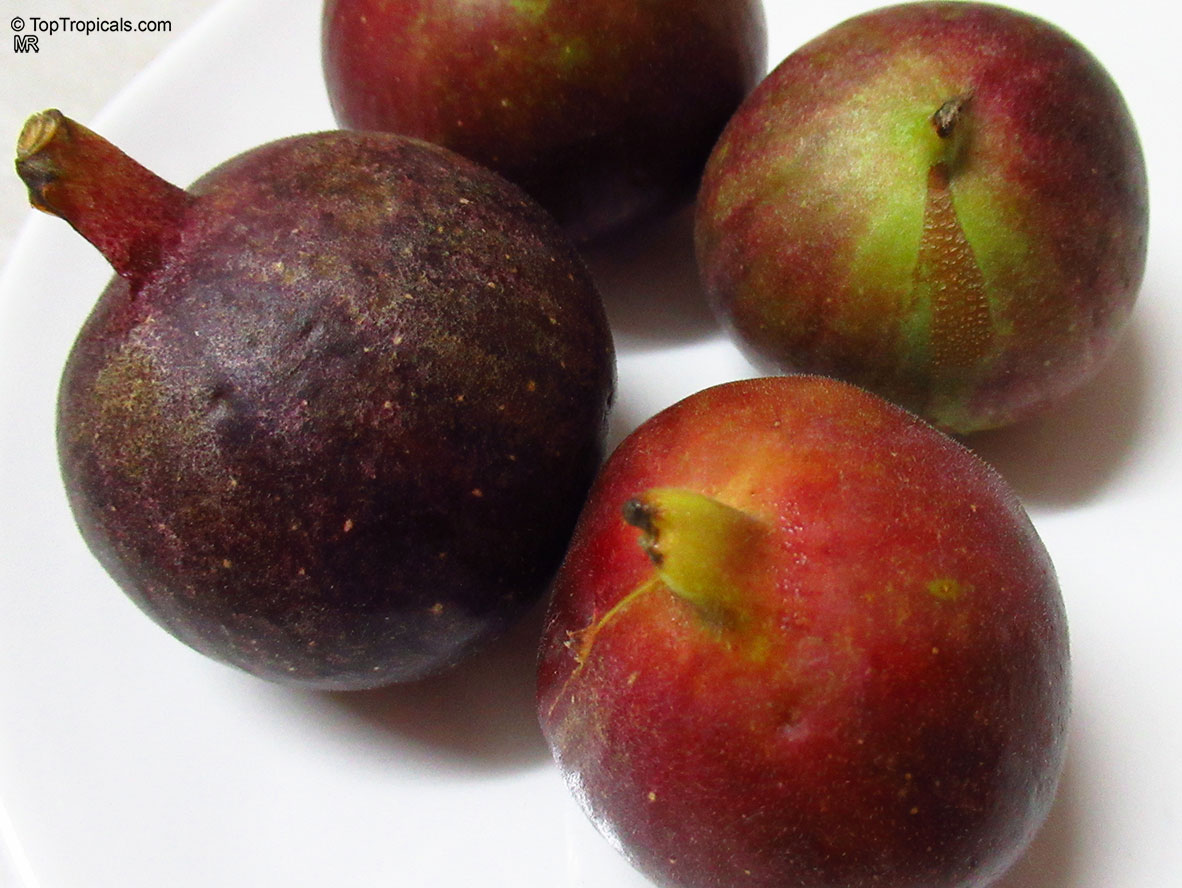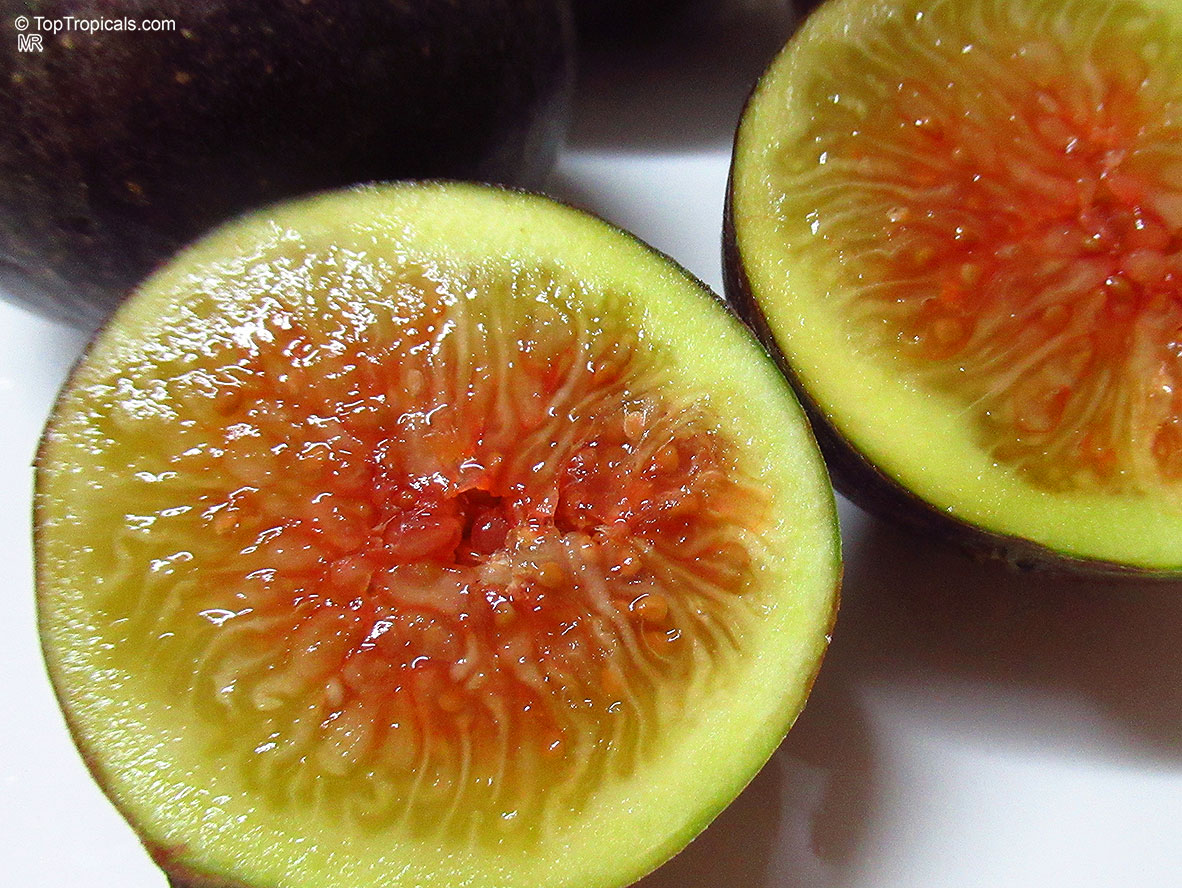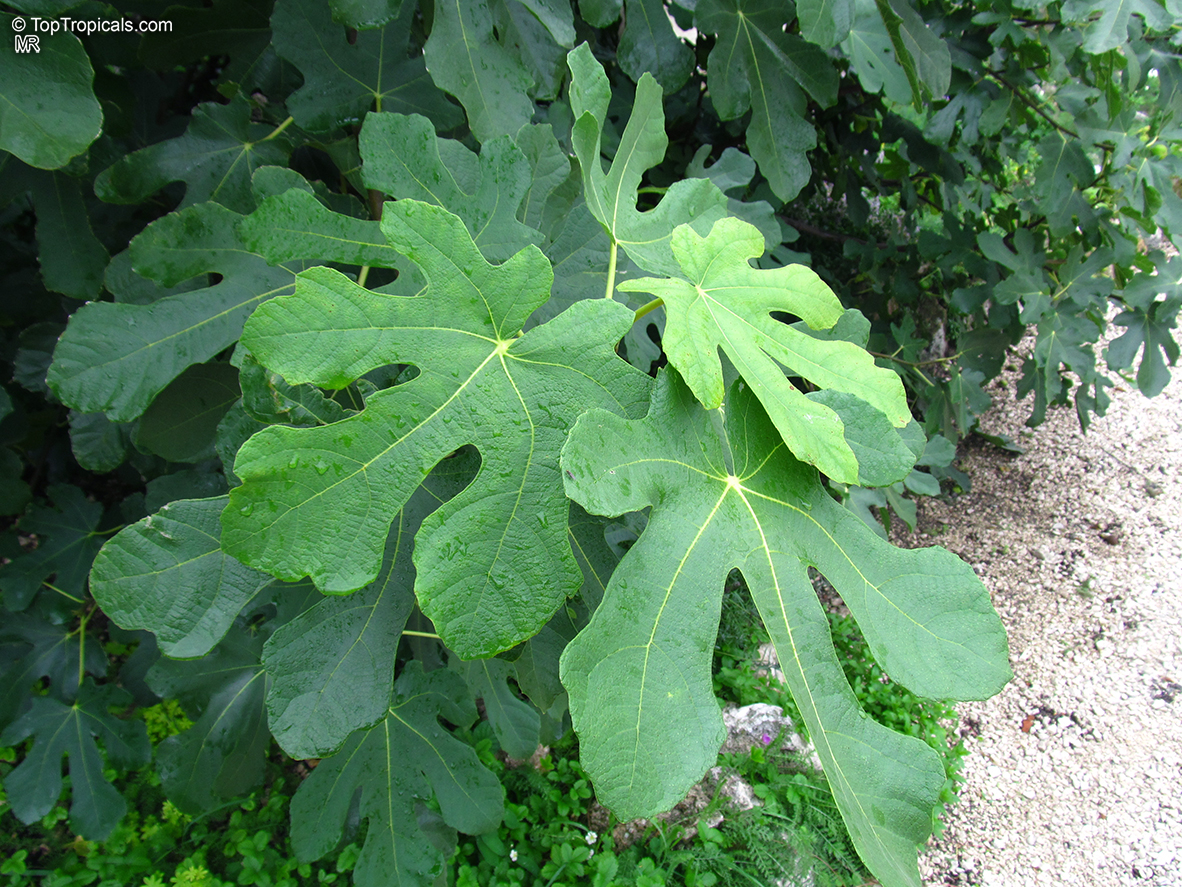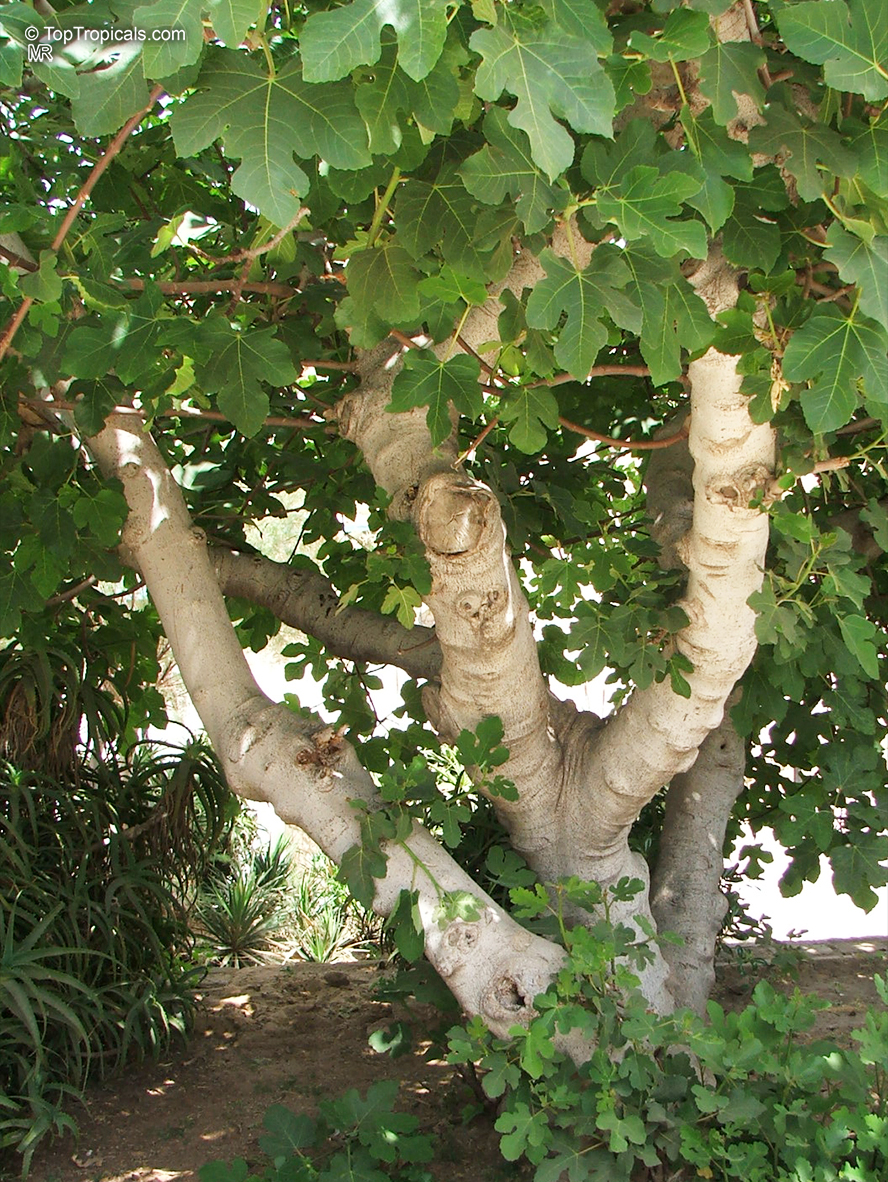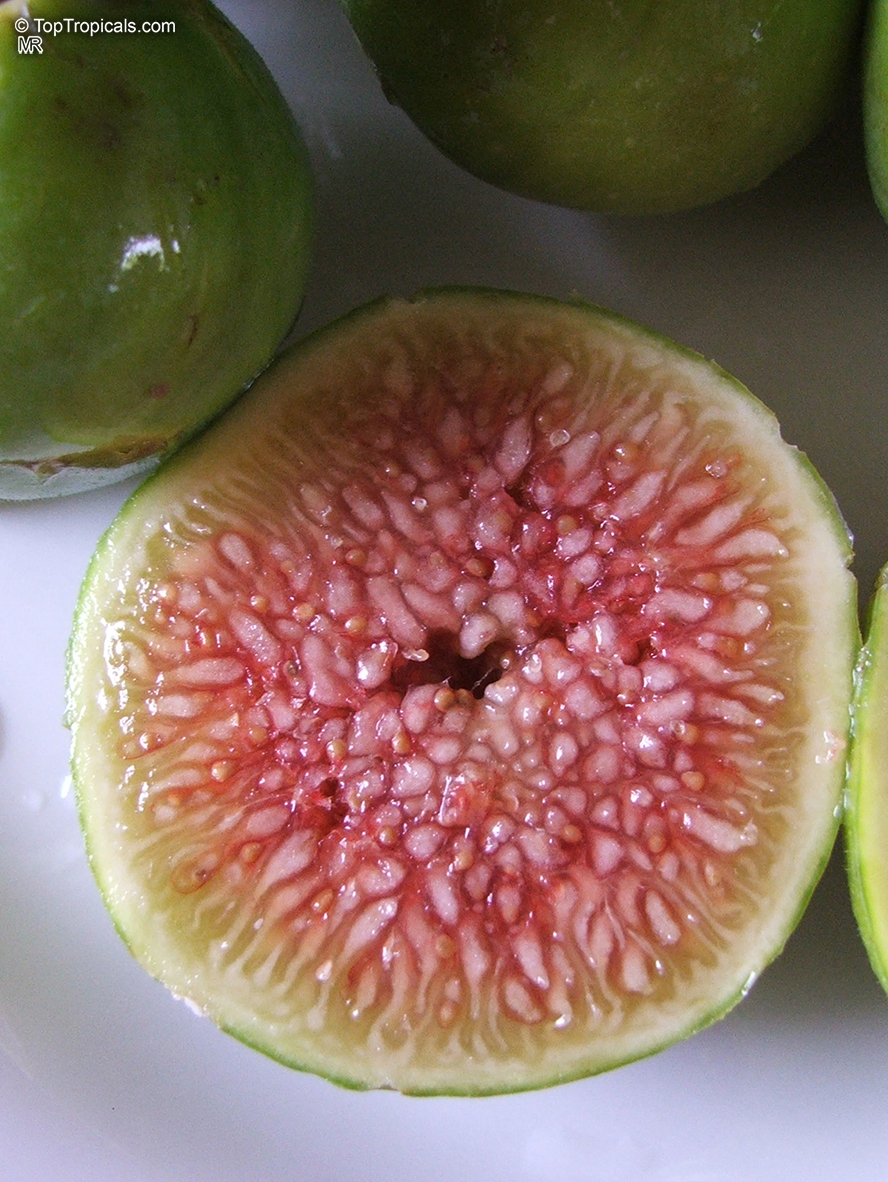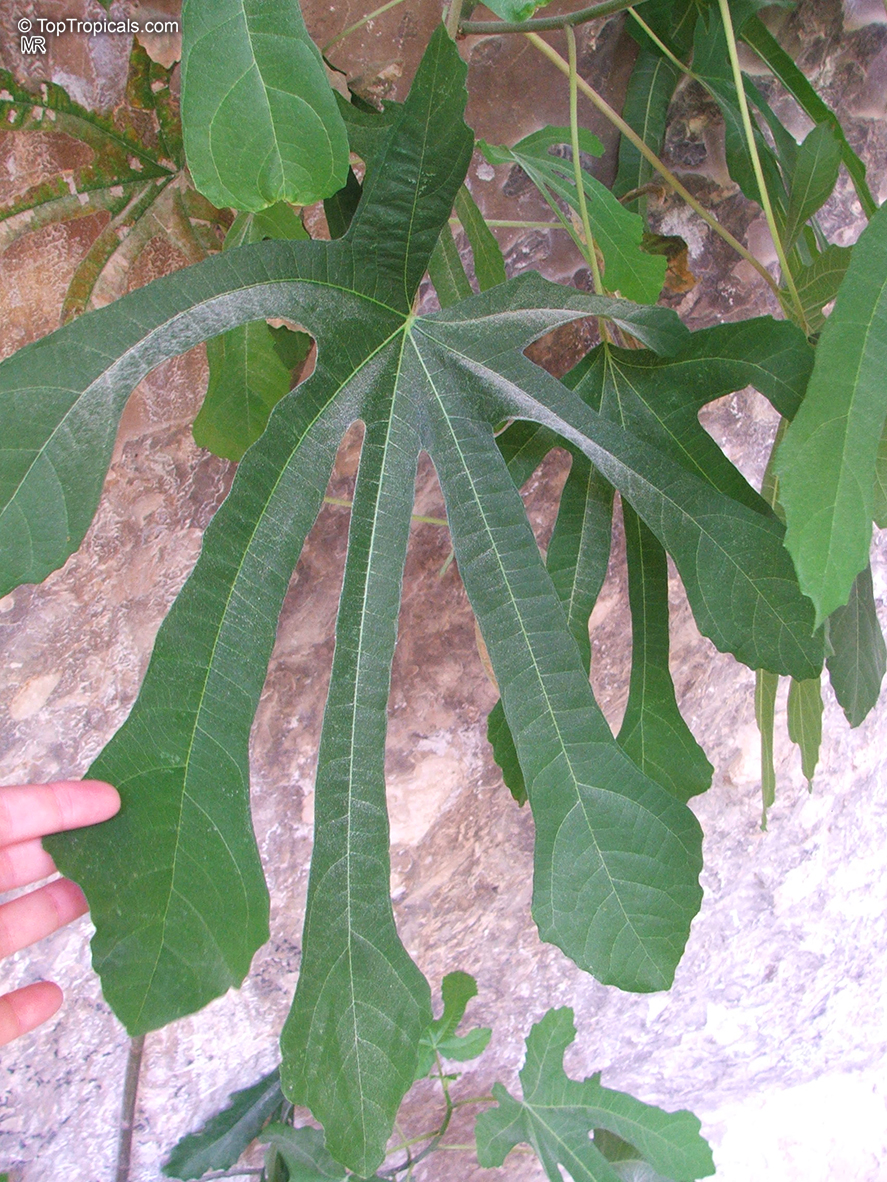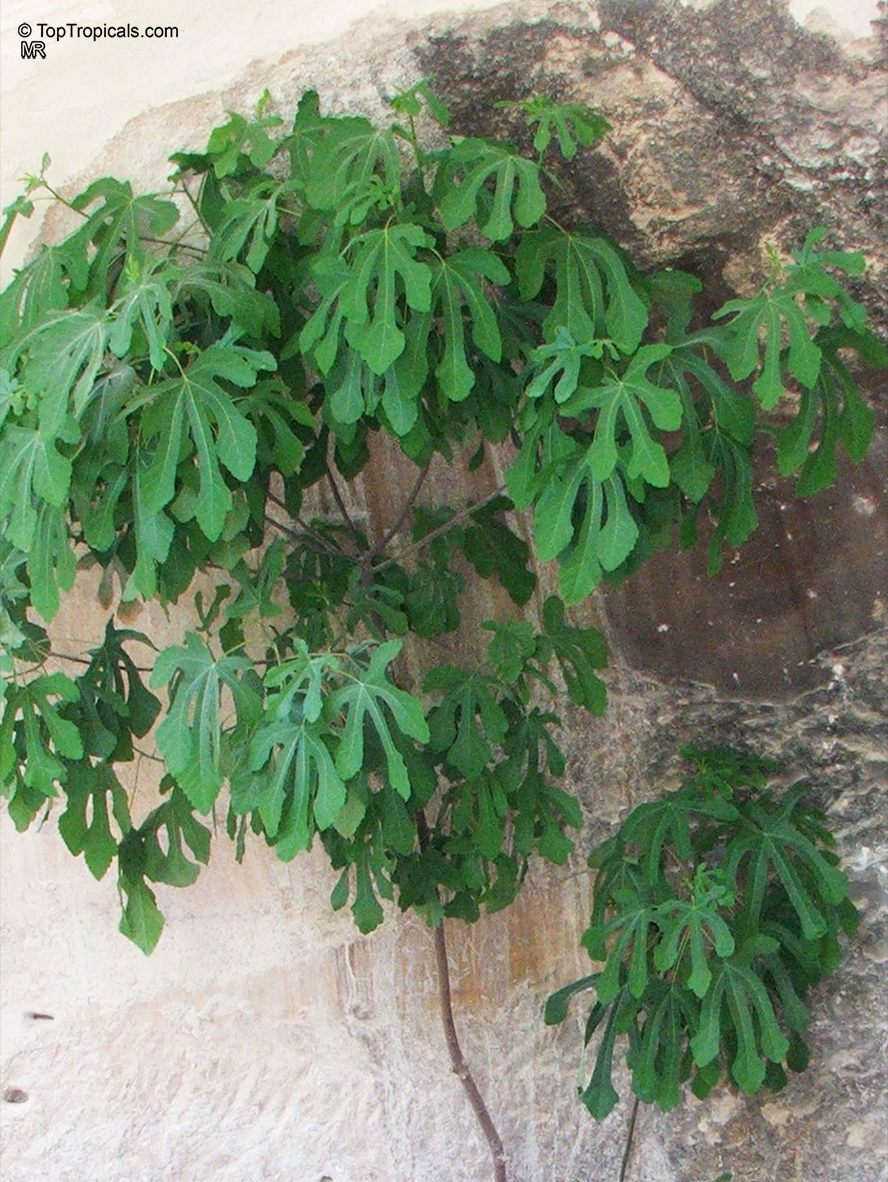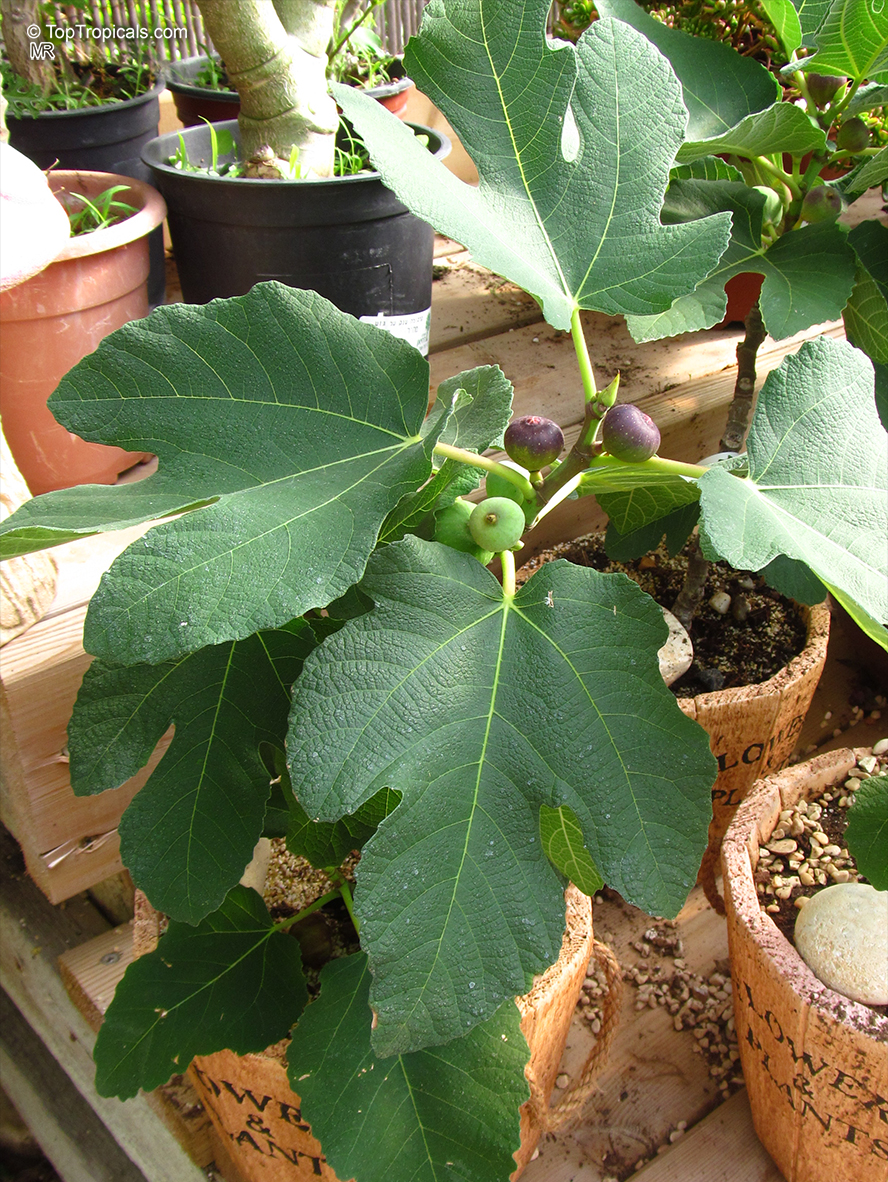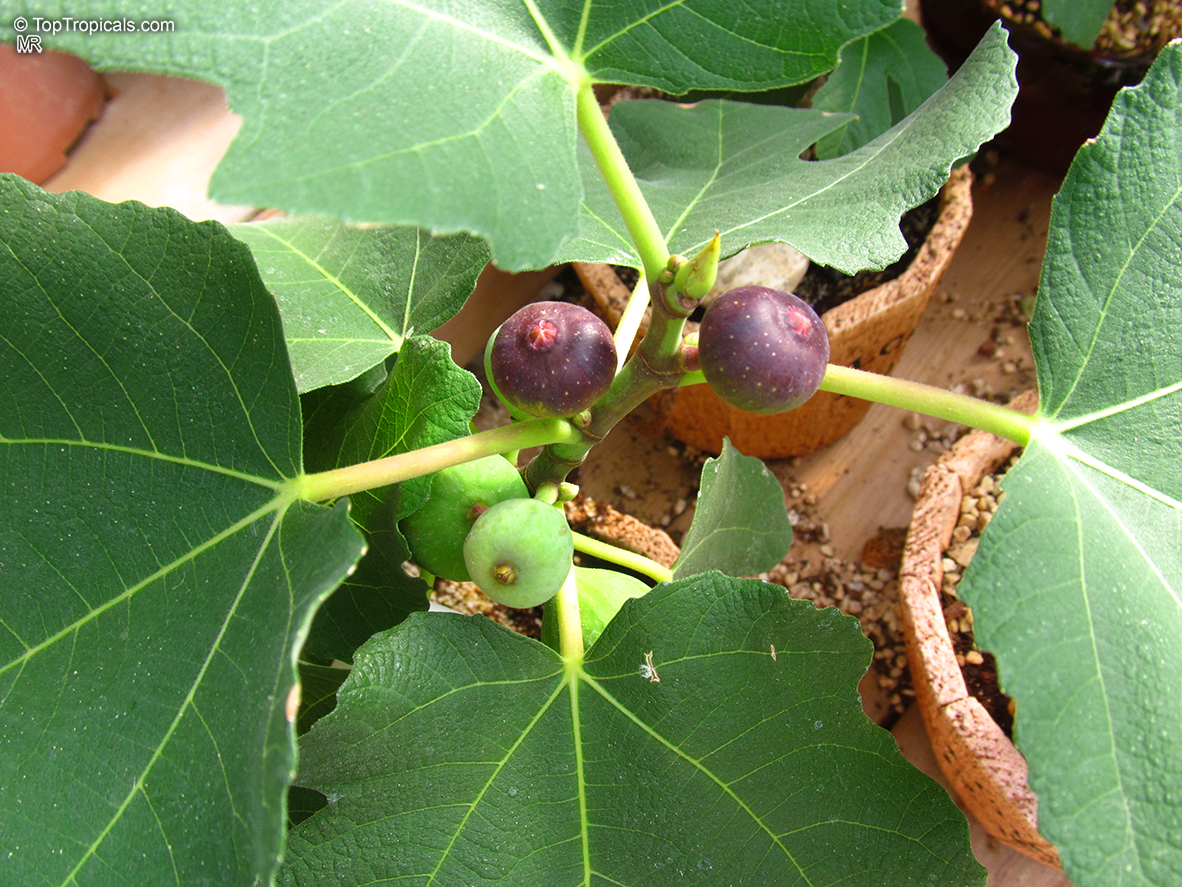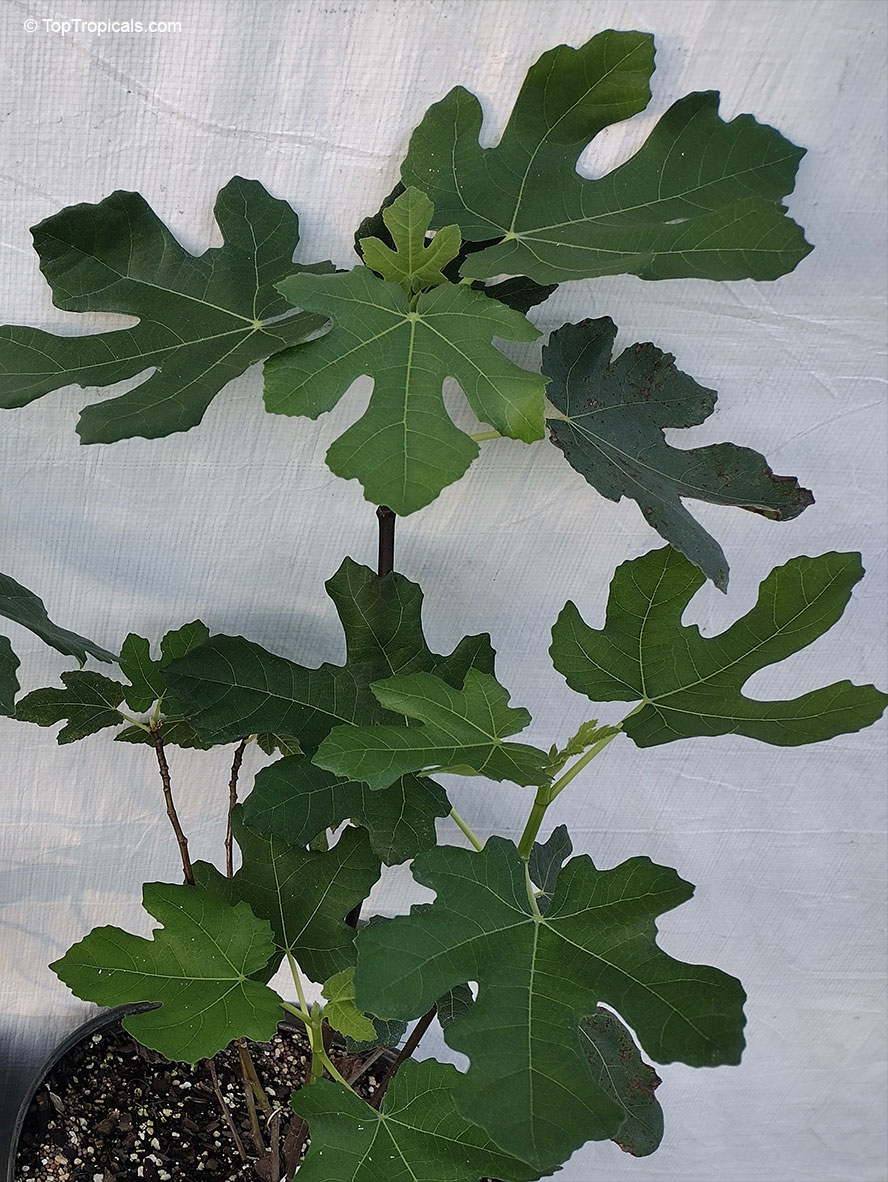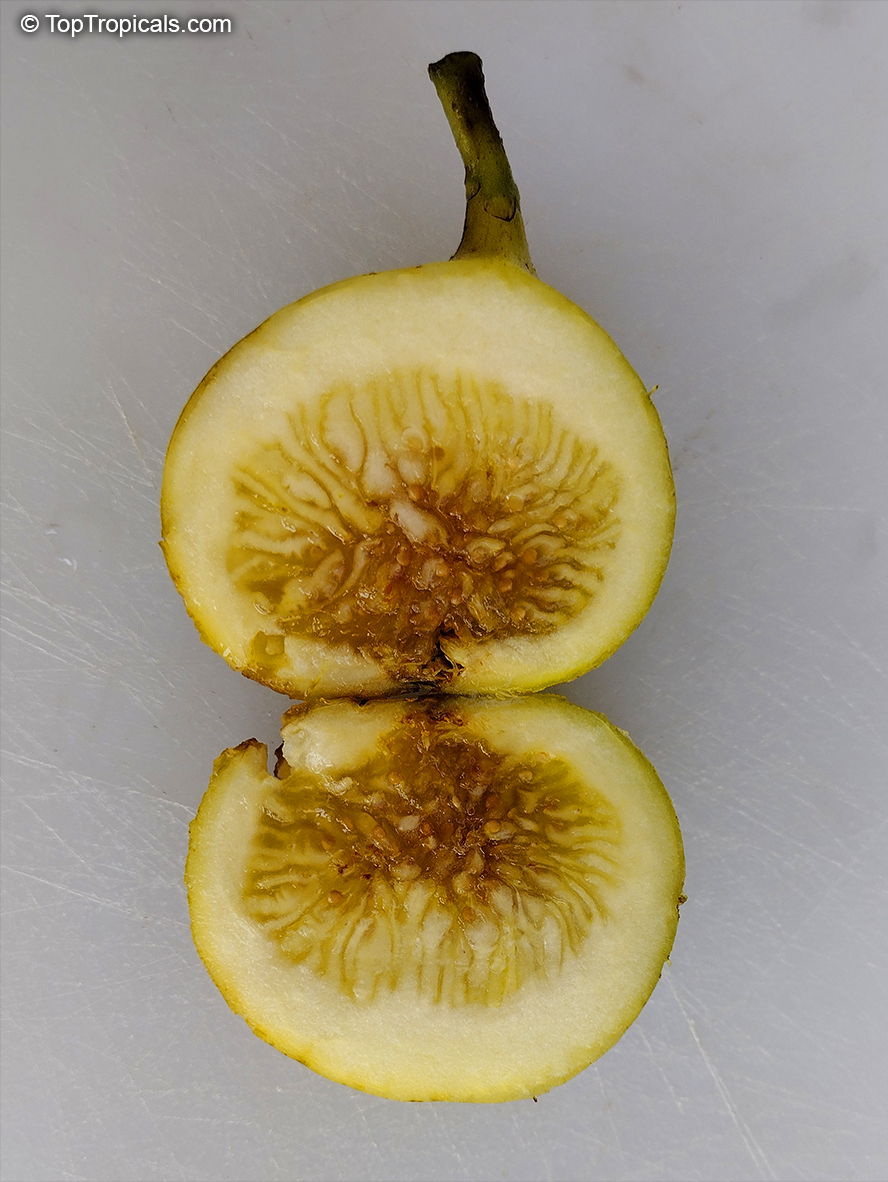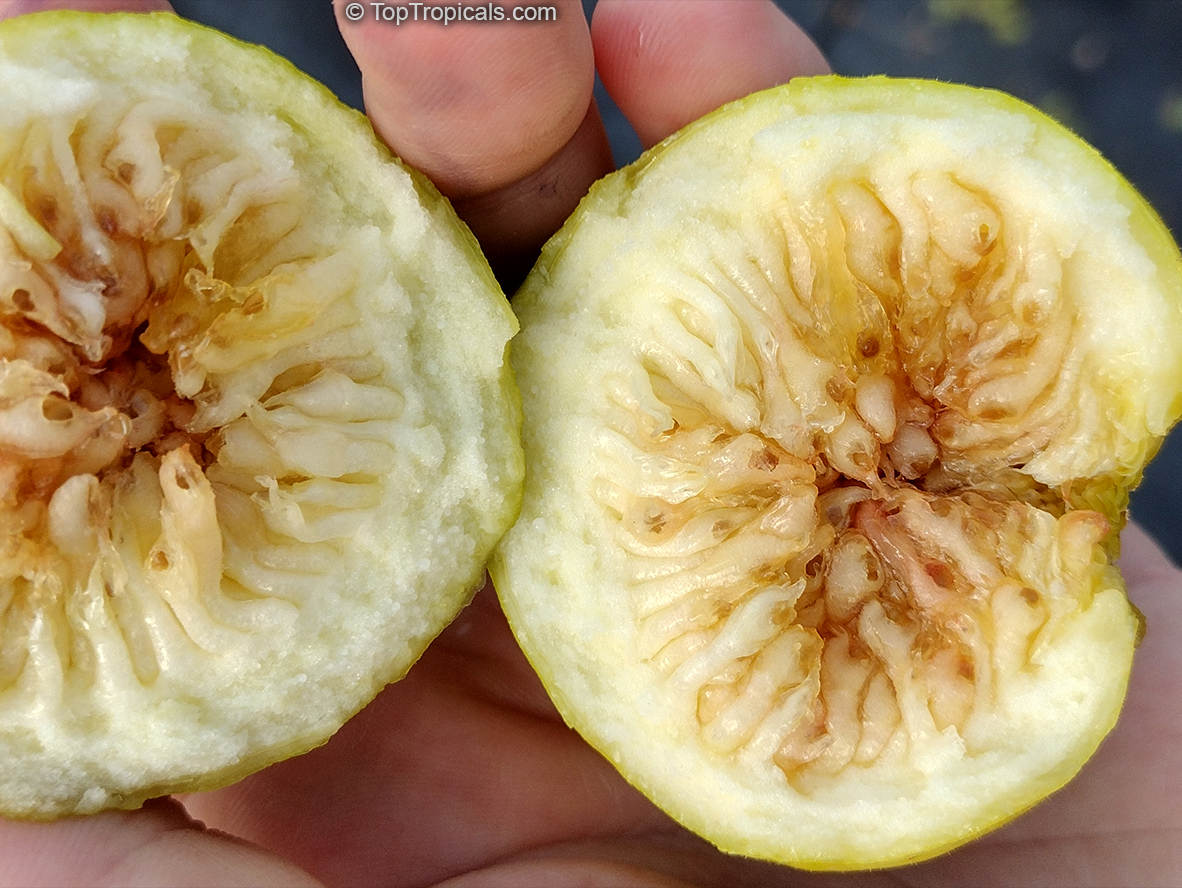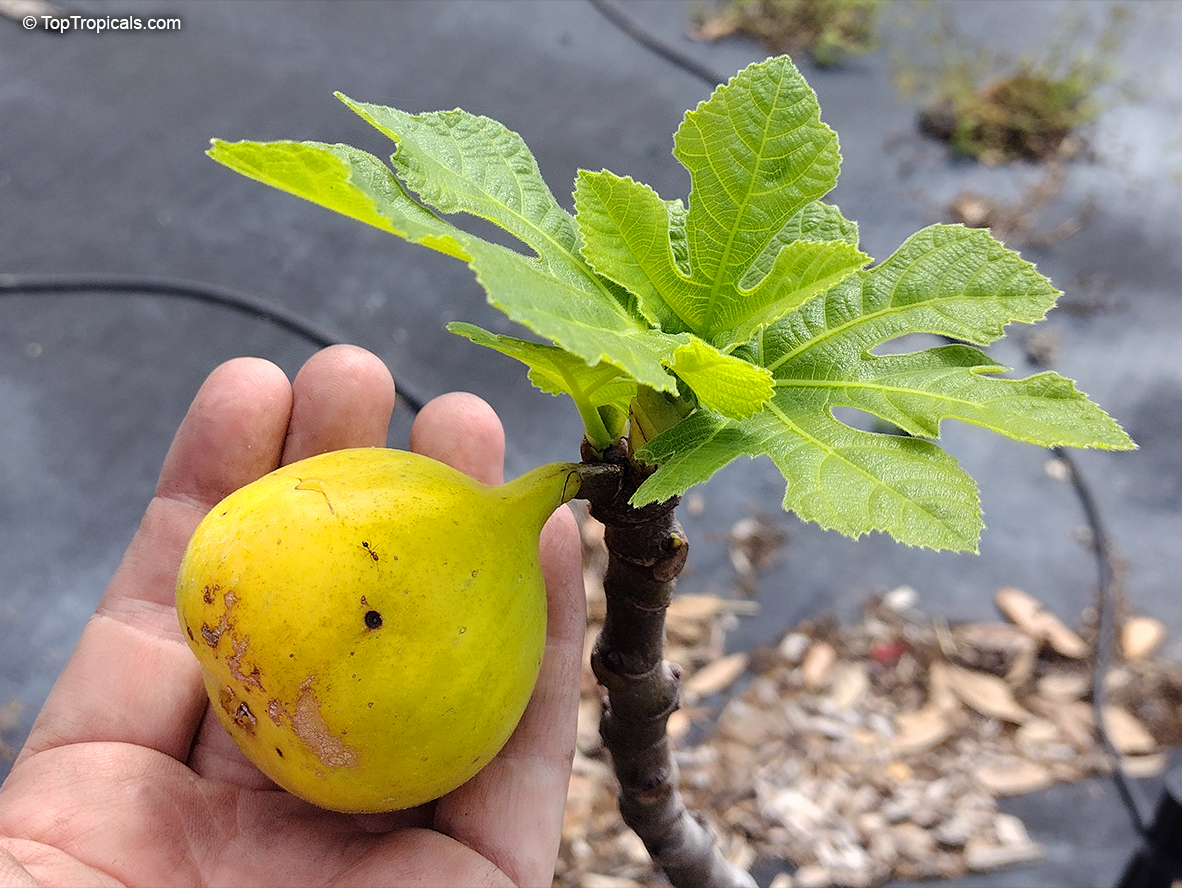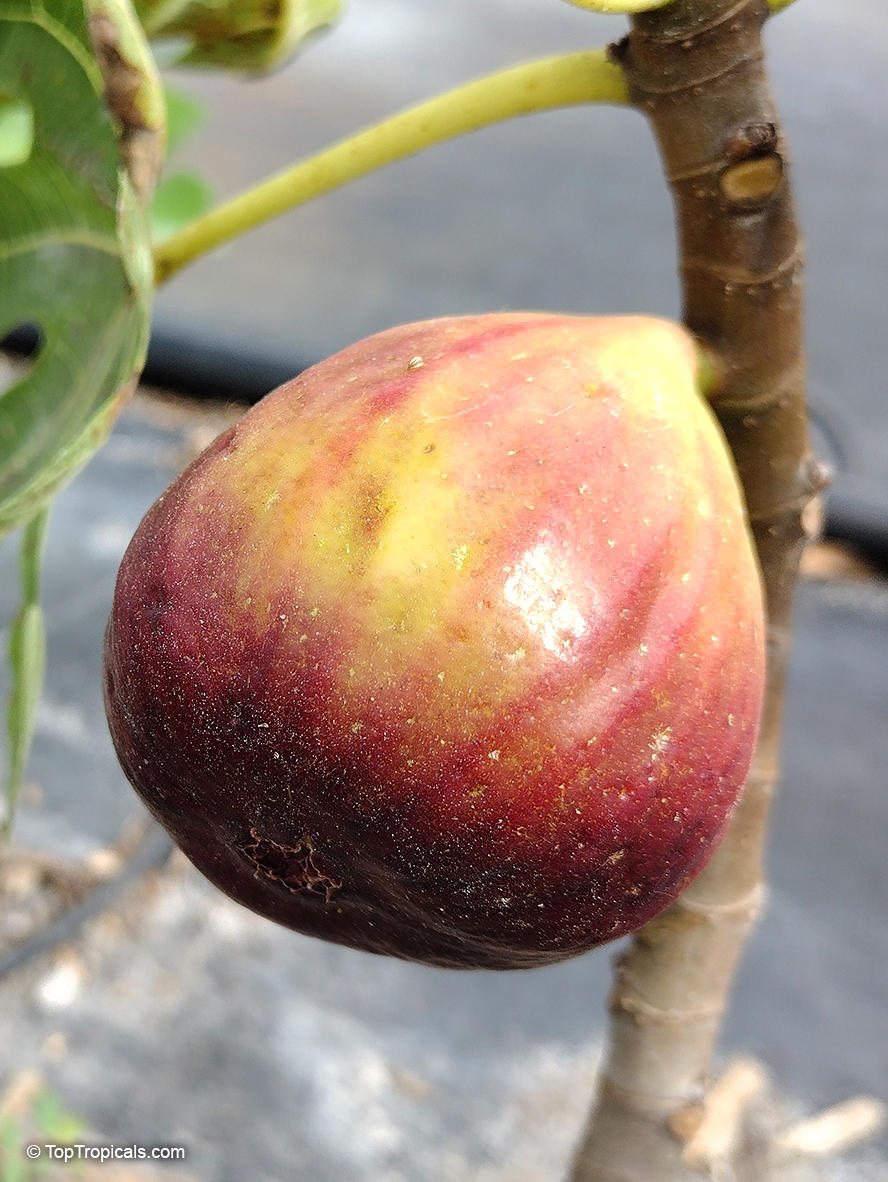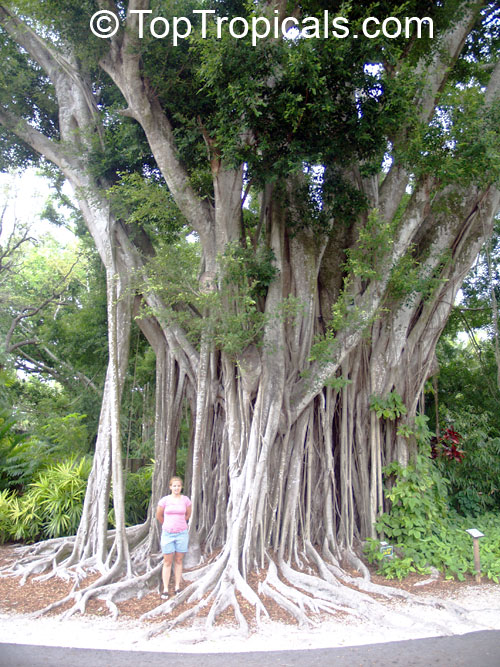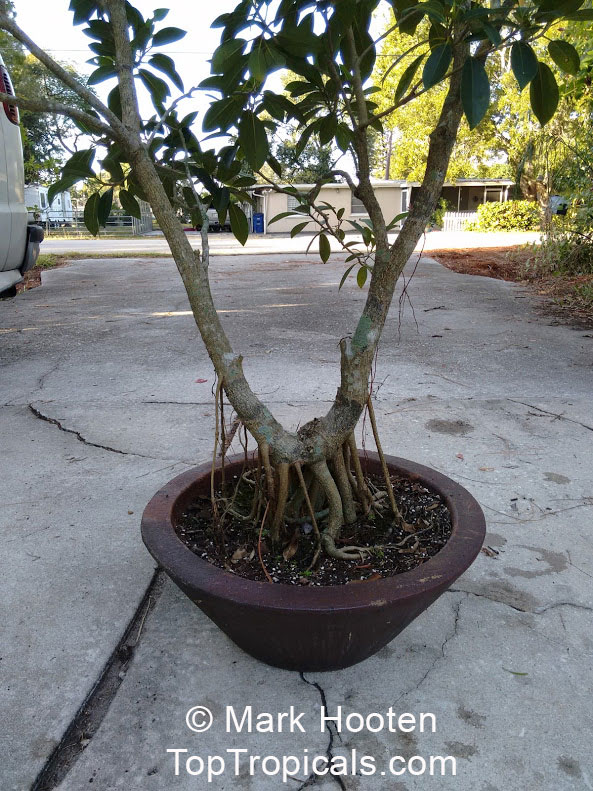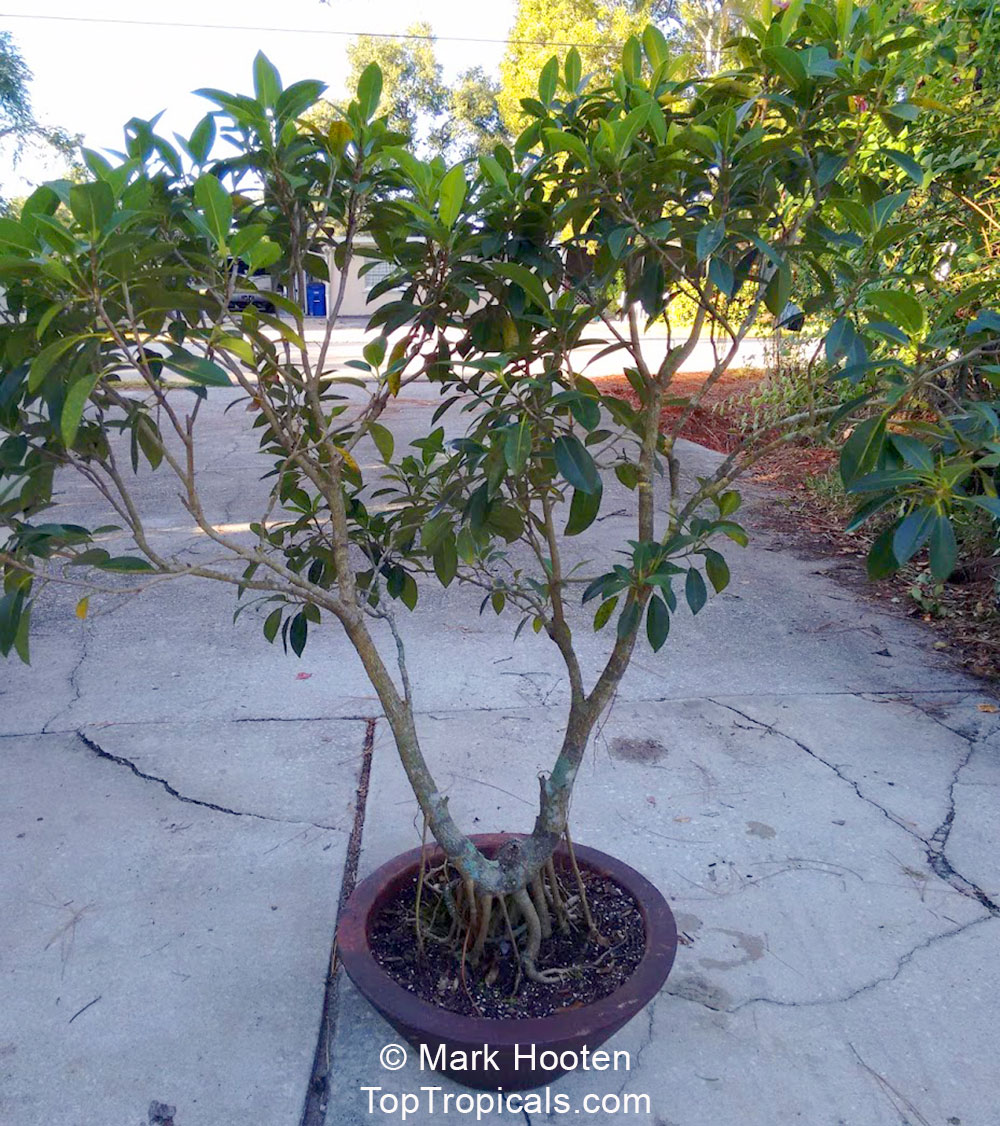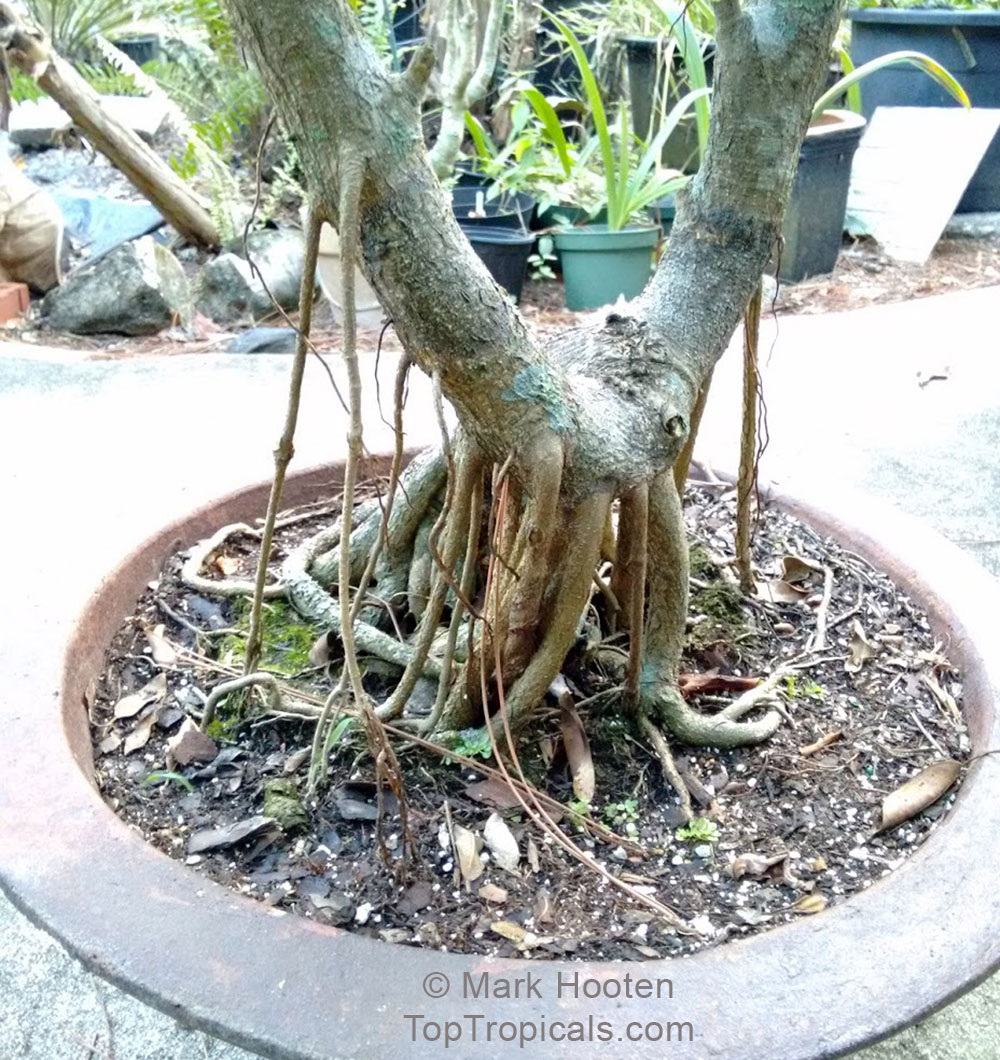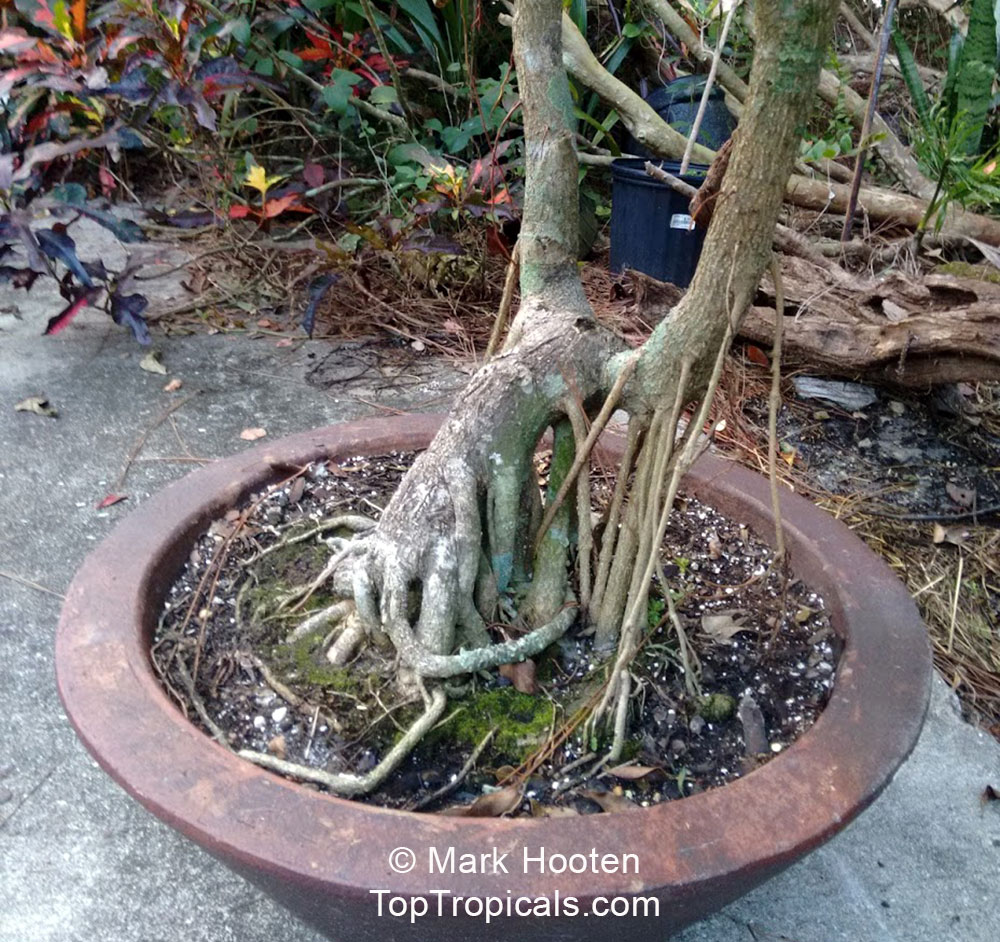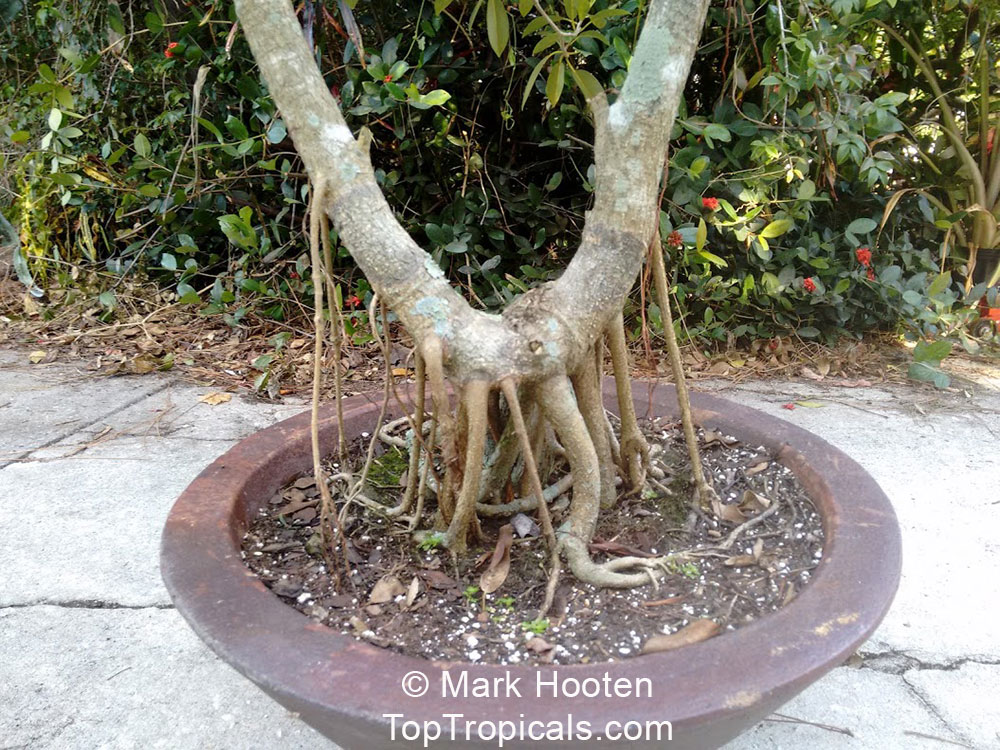Ficus - Plant Encyclopedia Results
Top Tropicals Plant Encyclopedia
| Number of plants found: 52 | Next | 
|
Go to page: | 1 | 2 | 3 | 4 | 5 | Last |
Botanical name: Ficus abutilifolia
Common names: Large-leaved Rock Fig, Rock Wild Fig
Family: Moraceae
Origin: Africa









The Ficus abutilifolia, or Large-leaved Rock Fig, is a native of the African savanna and woodlands, often taking root and growing on the rocks. It is a deciduous plant and can reach a height of 10 to 20 ft, with an especially beautiful ornamental foliage. Its caudex (swollen and potentially branched underground stem) can be used for bonsai as well.
In terms of its care, it's best not to overwater it, as these plants like only moderate water in normal humid conditions. Generally, Ficus abutilifolia prefers full sun and semi-shade and grows best in USDA Zone 9 to 11.
The Large-leaved Rock Fig is not only an attractive ornamental tree, but also has been used in traditional African medicine. It is known to be an ethnomedical plant, or one that is traditionally used for its healing benefits.
For those living in colder climates, Ficus abutilifolia can be grown in pots indoors or outdoors, but it's best to keep them in a sheltered area during the winter and to ensure that they get some sun. During the summer months, it is best to move the pot outdoors and ensure that it gets enough water, but not too much. With the right care, the Large-leaved Rock Fig can thrive.
Botanical name: Ficus altissima
Common name: Council Tree
Family: Moraceae
Origin: Southeast Asia, Pacific Islands




A large, spreading tree to 80ft or more, often with aerial roots, and a crown more than 100 feet wide. Leaves are glabrous, elliptic to ovate, to 10in long and 6in wide. The 1/2 to 3/4in diameter figs begin yellow but ripen red.
Like other figs, lofty fig often begins life as an epiphyte, growing on other trees (especially palms) until it sends its own roots into the ground, often encircling its host, and eventually displacing the host tree. It has also been found growing as a lithophyte on rock walls, stone or concrete buildings, and in cracks on bridges and turnpike overpasses.Introduced as a large shade tree but unsuitable for the urban landscape due to its immense size and extensive root system.
Botanical name: Ficus aspera
Common names: Variegated Clown Fig, Mosaic Fig
Family: Moraceae
Origin: South Pacific





The foliage is 8 to 12 inches in length, cordate to rhomboid in shape, and sometimes coarsely toothed on the margins. The leaves have white and gray-green blotches on a dark green background.
This Ficus requires heat and humidity, and detests cold and drafts. Plant which need at least a few hours a day of solar light in a pretty bright place, although avoiding direct sunlight, which could damage the foliage.
Botanical names: Ficus auriculata, Ficus roxburghii
Common names: Elephant ear fig tree, Giant Indian Fig
Family: Moraceae
Origin: India







The Elephant ear fig tree, scientifically known as Ficus auriculata, is an attractive legume that grows 20-30 feet tall and features unusual royal purple flowers. The tree's fruits are harvested for their sweet flavor and are commonly consumed by humans. In addition to its culinary uses, the tree is known for its medicinal properties, and its oil is used in herbal remedies.
This small tree prefers full sun to semi-shade and requires regular watering, but is otherwise easy to grow and is often used as an ornamental due to its spectacular foliage. It is also salt-tolerant, making it ideal for seaside locations. While it grows best in USDA Zone 9-11, it can be grown in a pot as long as the water and soil are kept moist.
The fruits of the elephant ear fig tree are not only delicious, but also offer several health benefits. Rich in dietary fibers, antioxidants, and essential vitamins, they can be eaten raw or used in recipes such as jellies, jams, and juices. Even the leaves of the tree contain vitamins and minerals and can be used to make tea. This small tree can produce up to 2000 fruits a year, making it a great addition to any garden.
Botanical names: Ficus benghalensis, Ficus indica
Common name: Banyan Tree
Family: Moraceae
Origin: South Asia






Very large, fast growing, evergreen tree up to 10ft, with spreading branches and many aerial roots. Leaves stalked, ovate-cordate, 3 nerved, when young downy on both sides; petiole with a broad smooth greasy gland at the apex, compressed, downy. Fruit in axillary pairs, the size of a cherry, round and downy. The Indian Banyan is the most famous banyan. In India, an entire army camped under a single giant old tree. Various parts of this plant are considered medicinal. The bark of this therapeutically valuable tree is attributed with tonic, astringent,cooling and diuretic properties in Ayurveda.
Botanical name: Ficus benjamina
Common names: Benjamin Fig, Benjamin Tree
Family: Moraceae
Origin: Tropical regions of India, Malaya to North Australia






A tree or shrub that is epiphytic when it is young. This fig tree is used as a shade and ornamental tree for homes and conservatory. The leaves and the fruit posses the ornamental value. The leaves are leathery and about five inches long and two inches wide. The Weeping Ficus fruits are pairs of red figs. Wasps mate inside fruit, are often sealed inside. Makes a good container specimen or bonsai.
Botanical name: Ficus brusii
Common name: Highland breadfruit
Family: Moraceae
Origin: New Guinea





Ficus brusii closely resembles the Ficus dammaropsis but the latter does better in sun-tropical climates while the former is a lowland tropical grower. It grows primarily in the wet tropical biome.
Ficus dammaropsis is a tropical evergreen fig tree with huge pleated leaves 60 cm (24 in) across and up to 90 cm (3 ft) in length. on petioles as much as thirteen inches (thirty-three centimetres) long and 1 in (2.5 cm) thick. Its fruit, the world's largest figs, up to six inches (fifteen centimetres) in diameter, are edible but rarely eaten except as an emergency food. The lowland form of this species, with different and smaller flower form and less pleated leaves than Ficus dammaropsis, found commonly below 900 metres (2,950 ft) is recognized as a distinct species, Ficus brusii.
Botanical names: Ficus capensis, Sycomorus capensis
Common names: Broom Cluster fig, Bush fig, cape fig, Fire sticks, Kooman, Wild fig
Family: Moraceae
Origin: southern Africa





Botanical name: Ficus carica
Common names: Fig Tree, Brevo
Family: Moraceae
Origin: Southwest Asia










A small tree native to southwest Asia. Widely grown for its fruit and is commercially grown in the United States in California, Oregon, Texas, and Washington. The fig was one of the first plants ever to be cultivated by humans. Fossilized figs dating to 9400-9200 BC were found in an early Neolithic village in the Jordan Valley.
The lovely lobed green leaves make it valuable in the landscape even without its fruit. They are very large, prominently veined and deeply lobed and may be 8 to 10 inches long. Most figs are deciduous during the winter months and drop their leaves in late December and resume growth in February and early March.
The fig fruit is actually a hollow receptacle with hundreds of small fleshy flowers facing each other on the inside. In their native habitat, figs are pollinated by a tiny gall wasp that enters the flower cluster through a small opening in the apex. Each flower then produces a small fruit containing the seeds. The wasp is not present in most of North America, so seeds are not produced.
Figs are prized for their delicious fruit, which can be one to three inches in length, violet, brown or black. There are even varieties with yellow fruit. Most fruits are borne from early summer to late fall on new growth, and the fruits generally mature very quickly.
Figs grow nicely and will bear fruit when grown in containers where they can be artfully pruned to create a living sculpture to decorate deck or patio. The fig makes a splendid patio or indoor plant that grows with little attention, save for constantly moist soil and bright light. Prefers alkaline, well-drained soil, but can tolerate wet conditions (waterlogging). Drought tolerant, once established. Mulch heavily with organic materials to conserve moisture, improve soil structure and reduce root knot nematode levels. Responds well to pruning and can be espaliered or pruned heavily in the dormant season for size control and to increase the main crop.
Trees are very sensitive to frost when actively growing, but can withstand 10F when dormant. Young fig trees should be watered regularly until fully established.
Figs will shade out anything growing beneath. Repeated pruning to control size causes loss of crop. Roots are greedy, traveling far beyond the tree canopy. For container grown plants, replace most of the soil in the tub every three years and keep the sides of the tub shaded to prevent overheating in sunlight.
See article about Fig Tree.
Recommended Fertilizer: SUNSHINE C-Cibus - Crop Nutrition Booster
SUNSHINE-Honey - sugar booster
Recommended Fertilizer: SUNSHINE C-Cibus - Crop Nutrition Booster
SUNSHINE-Honey - sugar booster
Recommended Fertilizer: SUNSHINE C-Cibus - Crop Nutrition Booster
SUNSHINE-Honey - sugar booster
Recommended Fertilizer: SUNSHINE C-Cibus - Crop Nutrition Booster
SUNSHINE-Honey - sugar booster
Botanical name: Ficus citrifolia
Common names: Shortleaf Fig, Florida Banyan, Giant Bearded Fig, Wild Banyantree, Wimba Tree
Family: Moraceae
Origin: Central America







Ficus citrifolia can grow up to 18 metres tall. The bole can be 75cm in diameter The plant often begins life as an epiphyte, growing in the branch of another tree; as it grows older it sends down aerial roots which, when they reach the ground quickly form roots and become much thicker and more vigorous. They supply nutrients to the fig, allowing it to grow faster than the host tree.
The roundish fruit is greenish, often brown dotted, turning reddish and brownish at maturity, about 10mm in diameter. Fleshy, but with very little flavor.
See articleabout Ficus citrifolia by Mark Hooten
| Next |  |
Use link to repeat this search:
https://toptropicals.com/cgi-bin/garden_catalog/cat.cgi?find=Ficus&search_op=and&keyword_op=and&language=e&number=10
&no_change_lang=1&user=tt&sale=1&first=0
